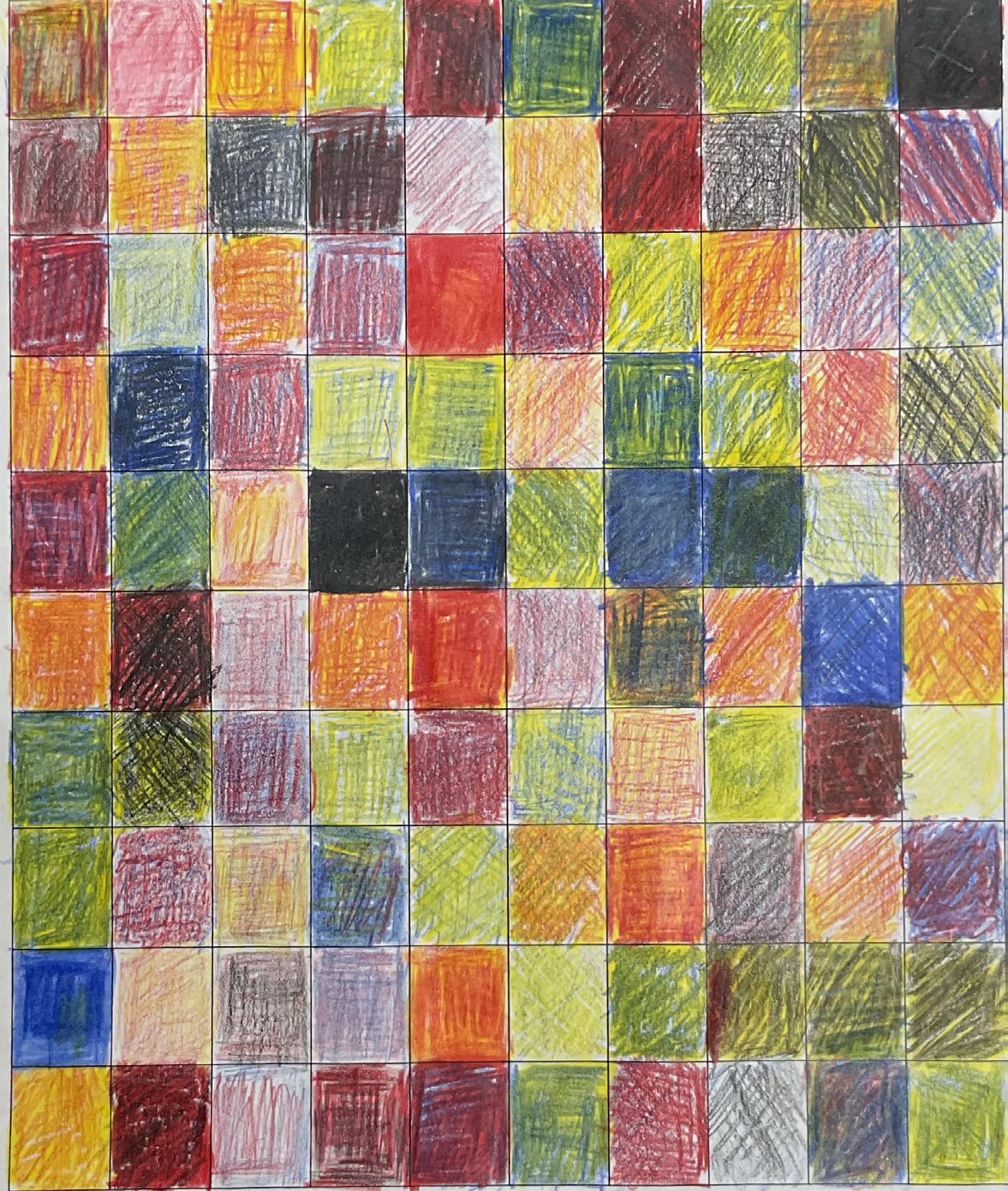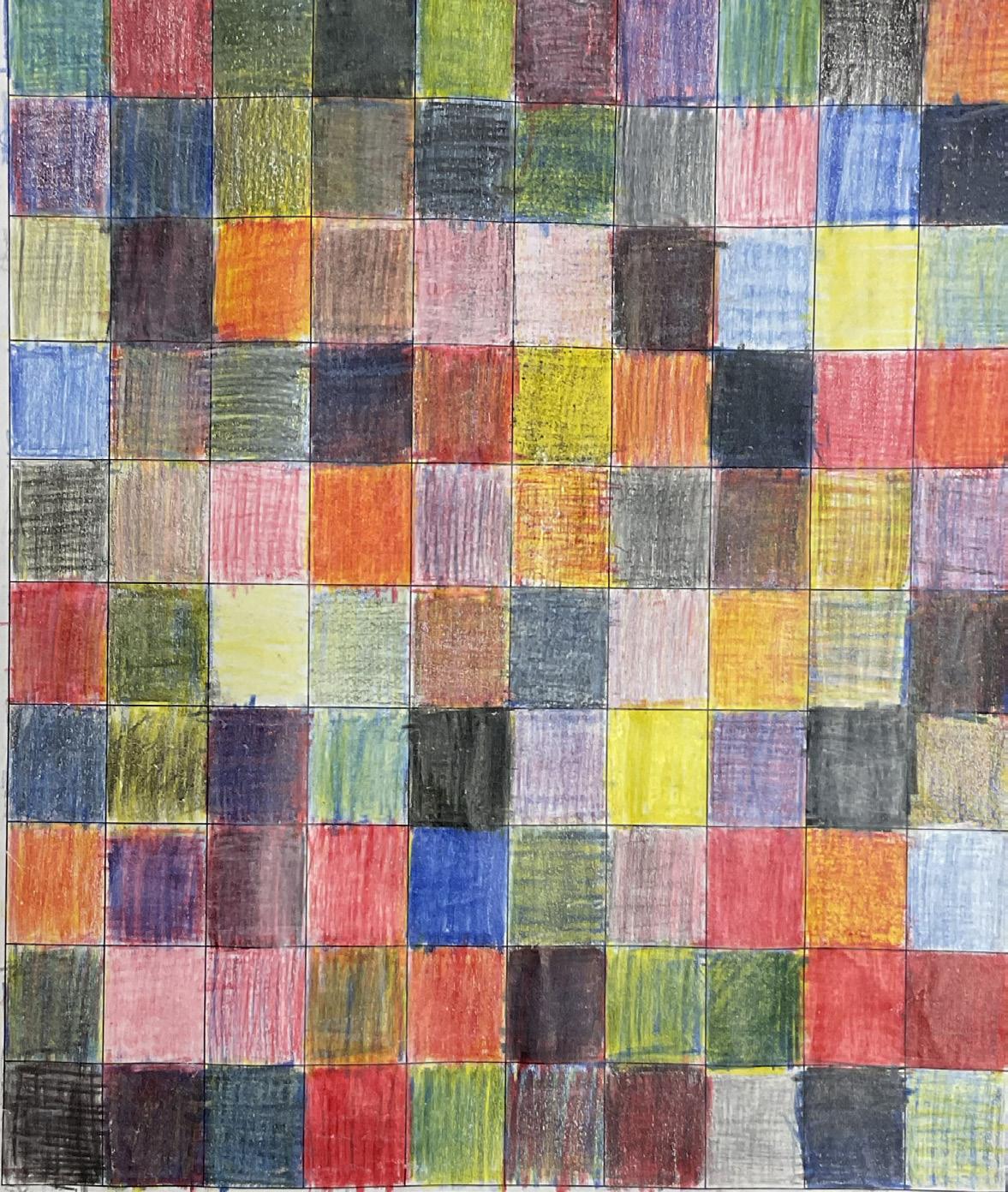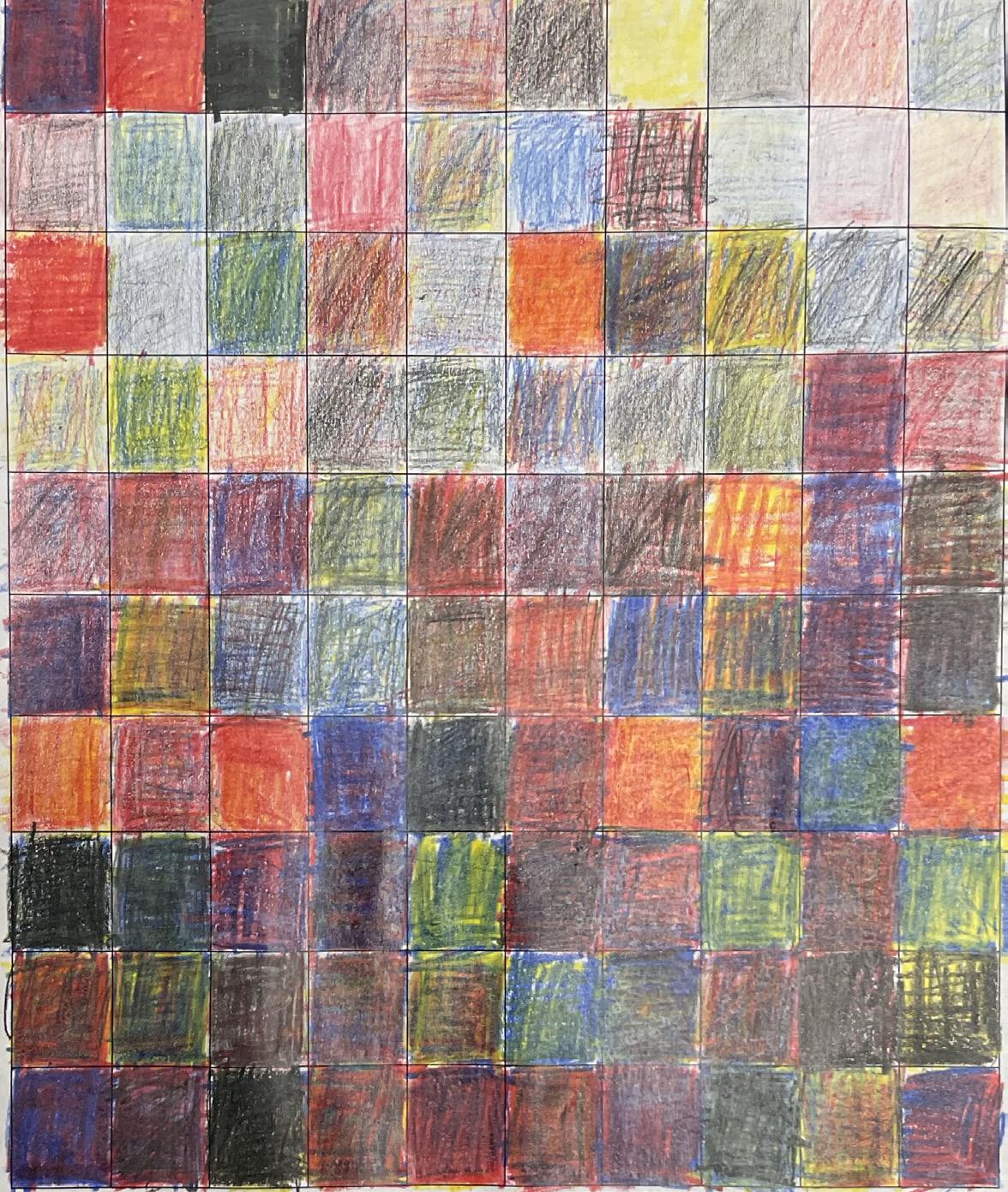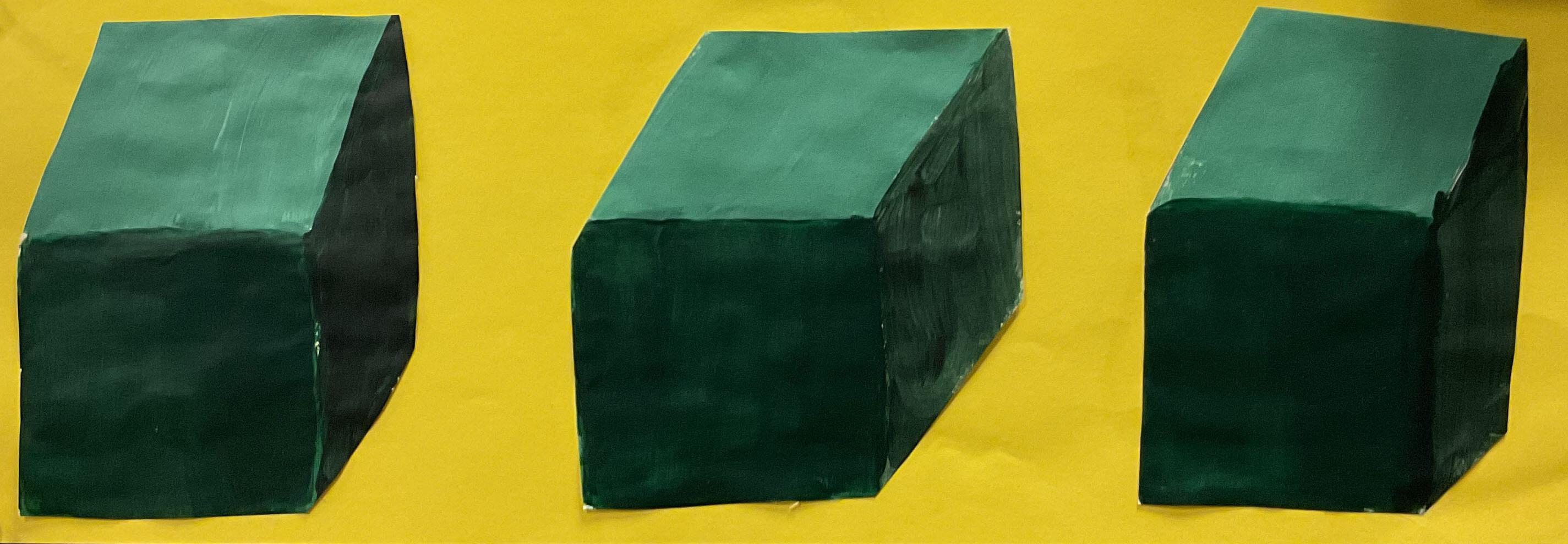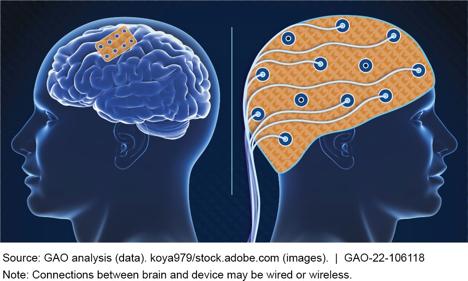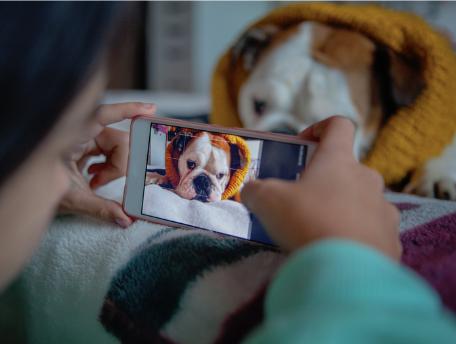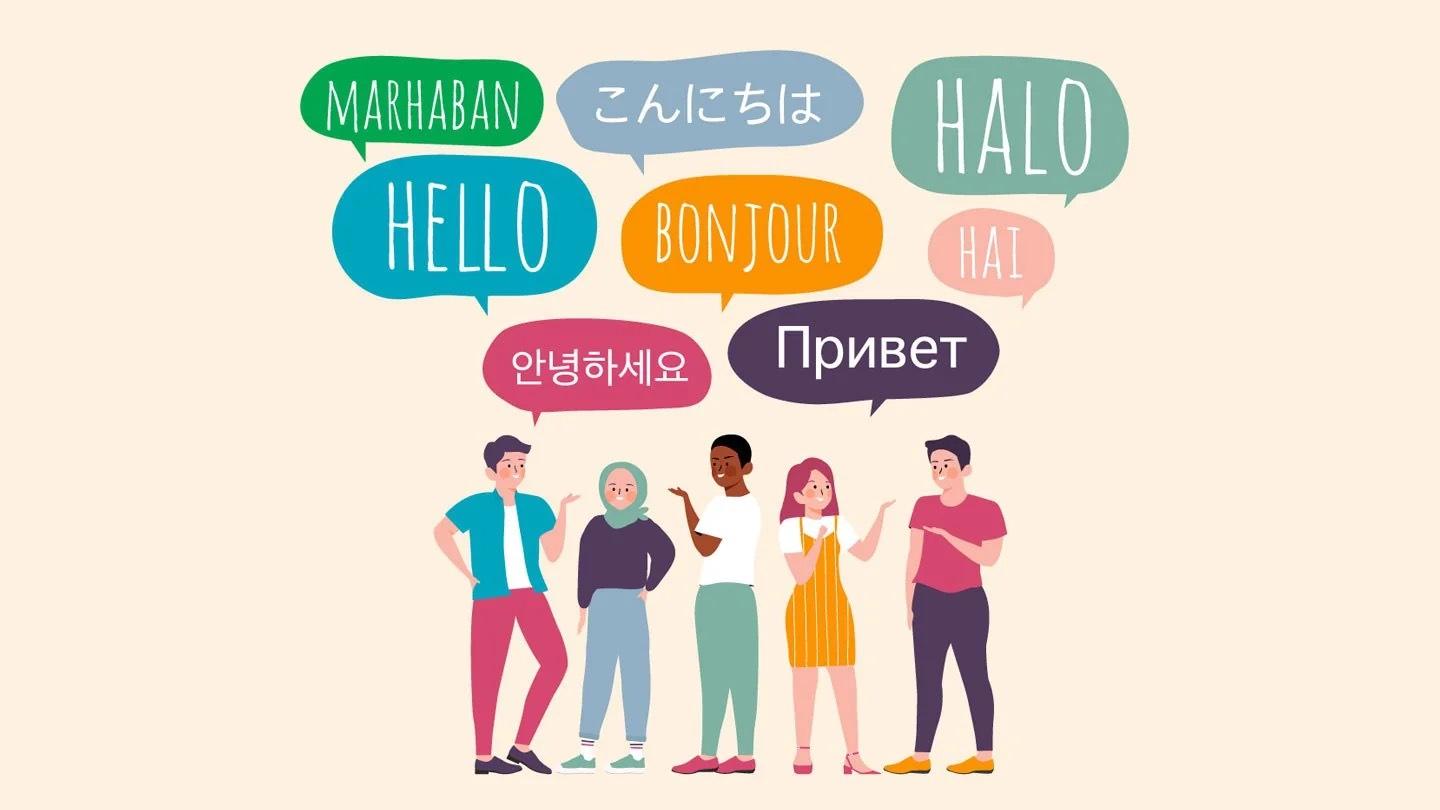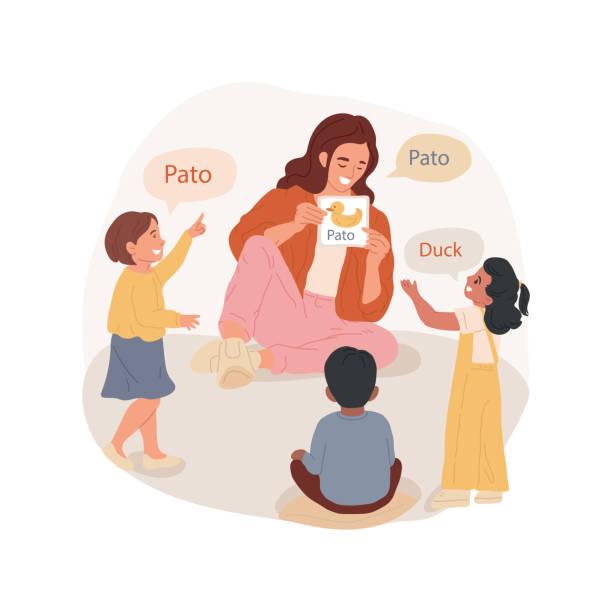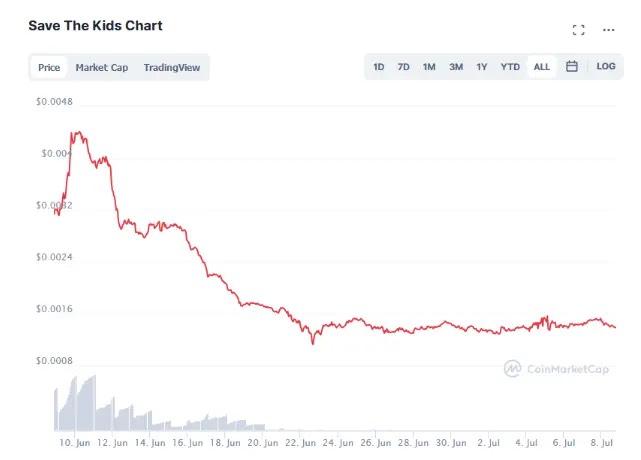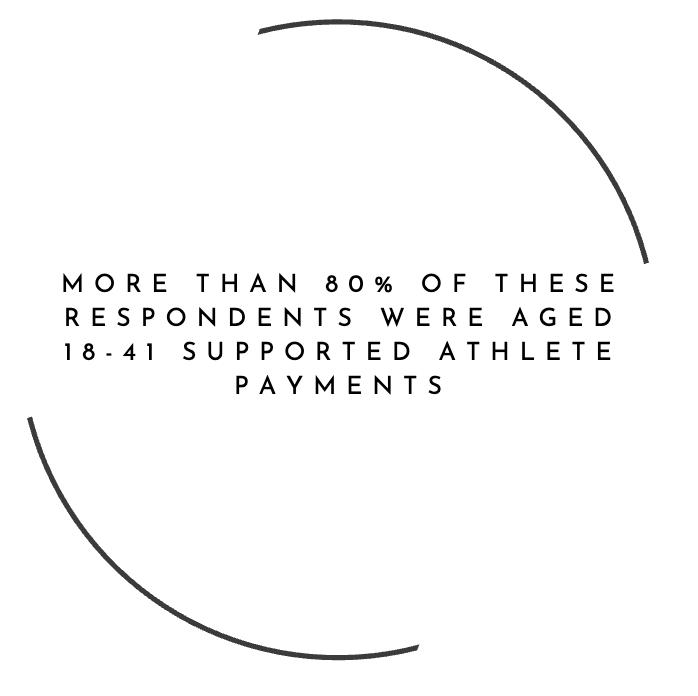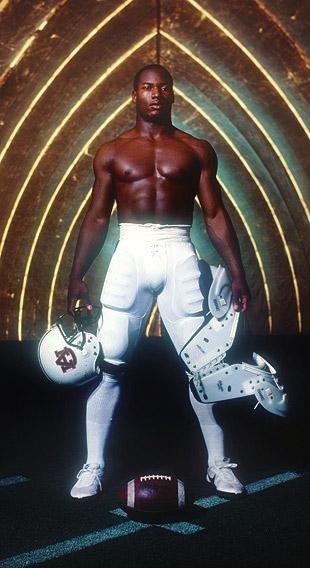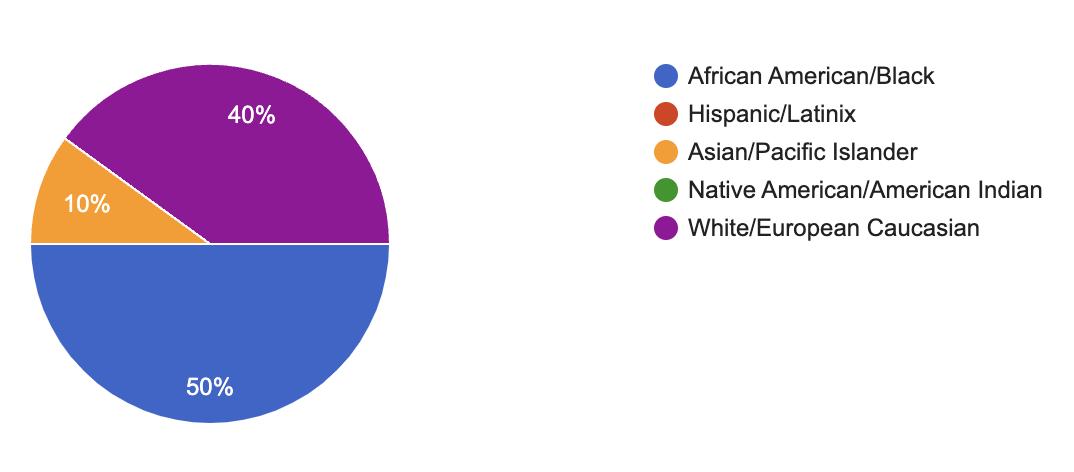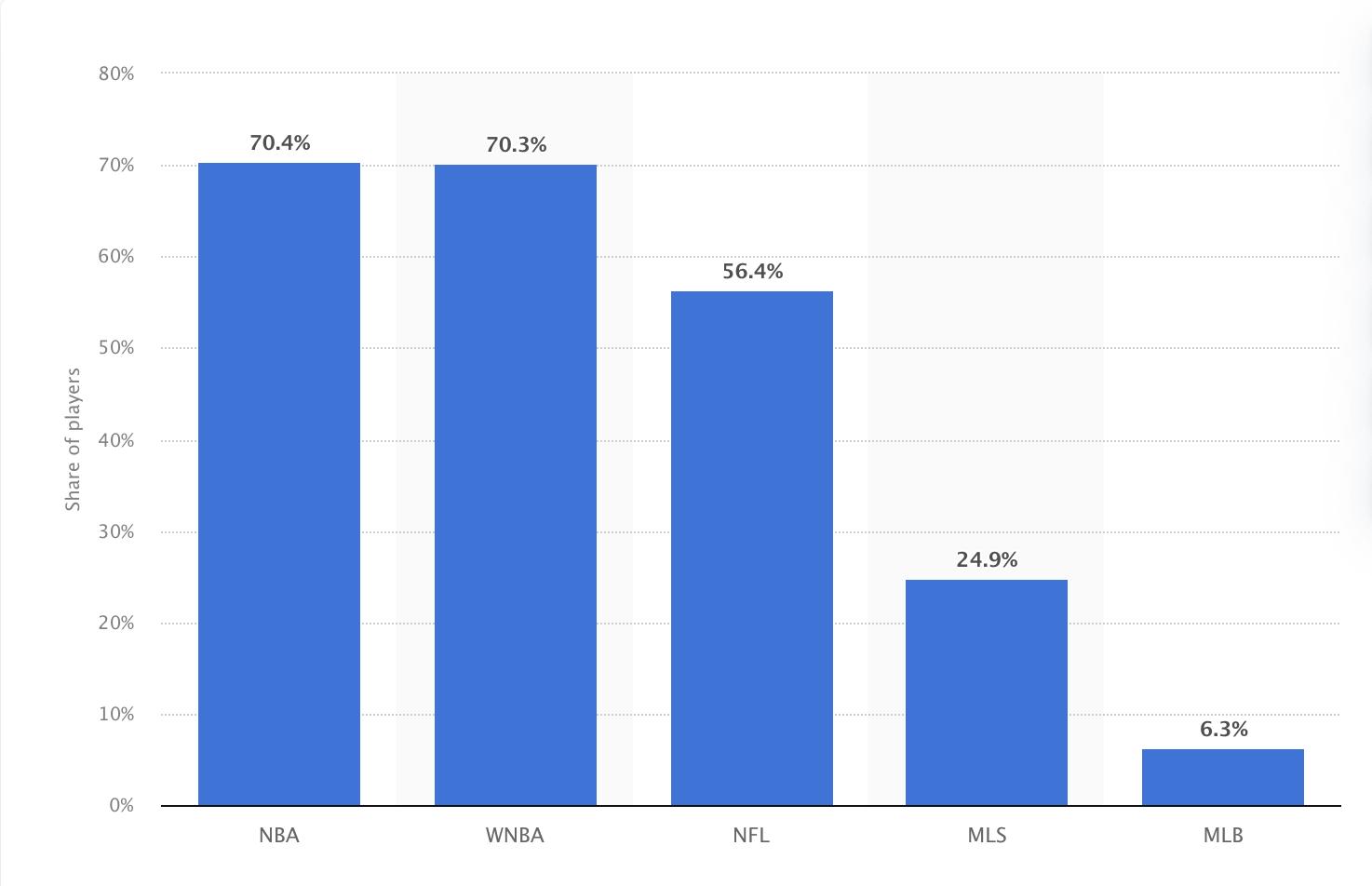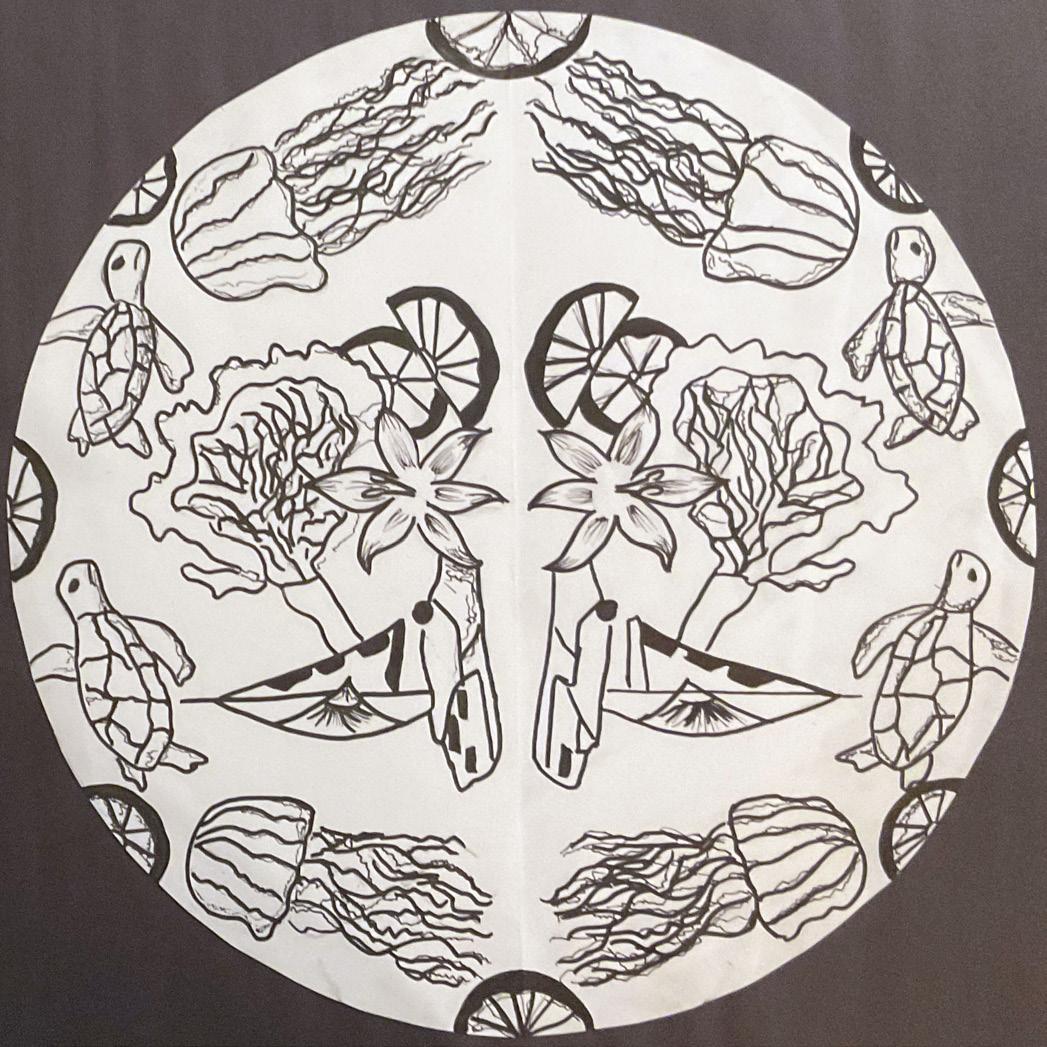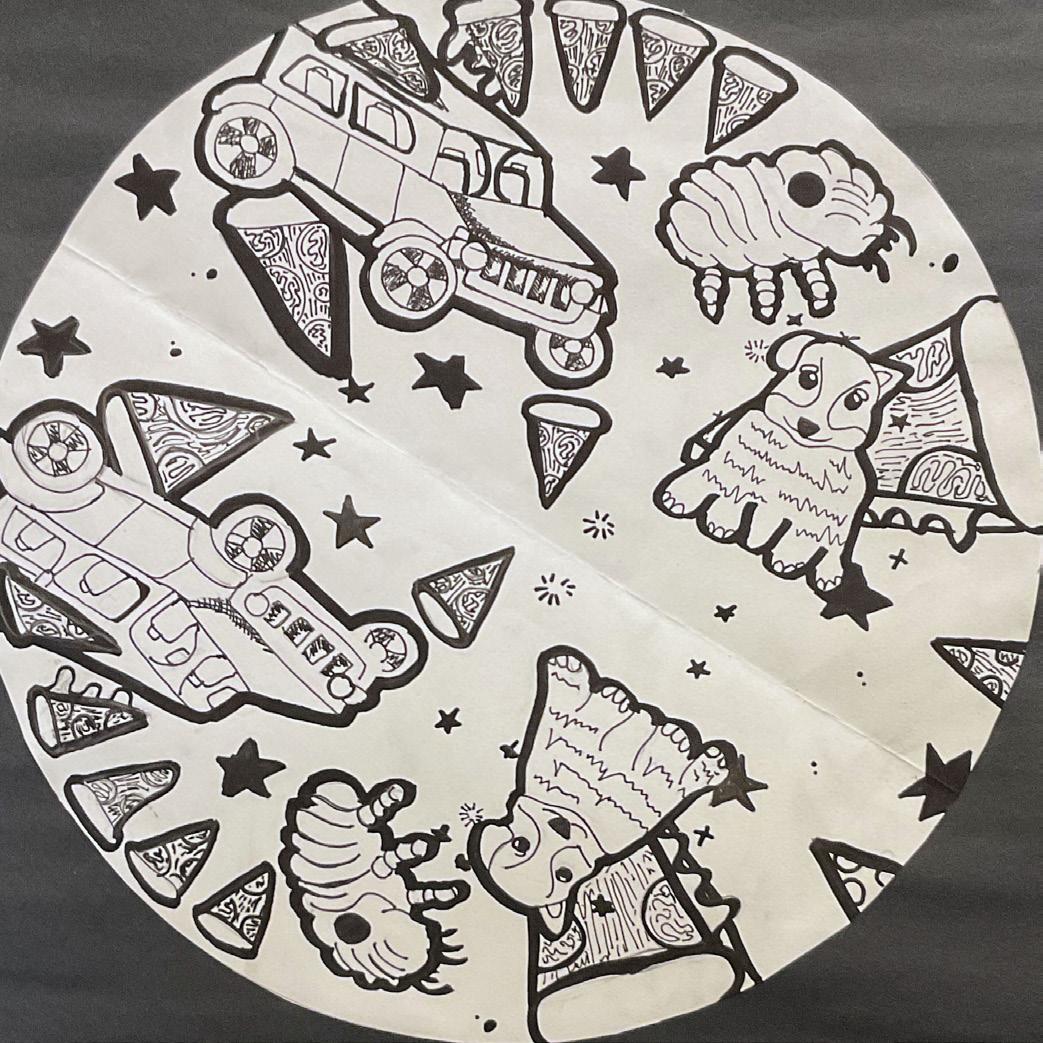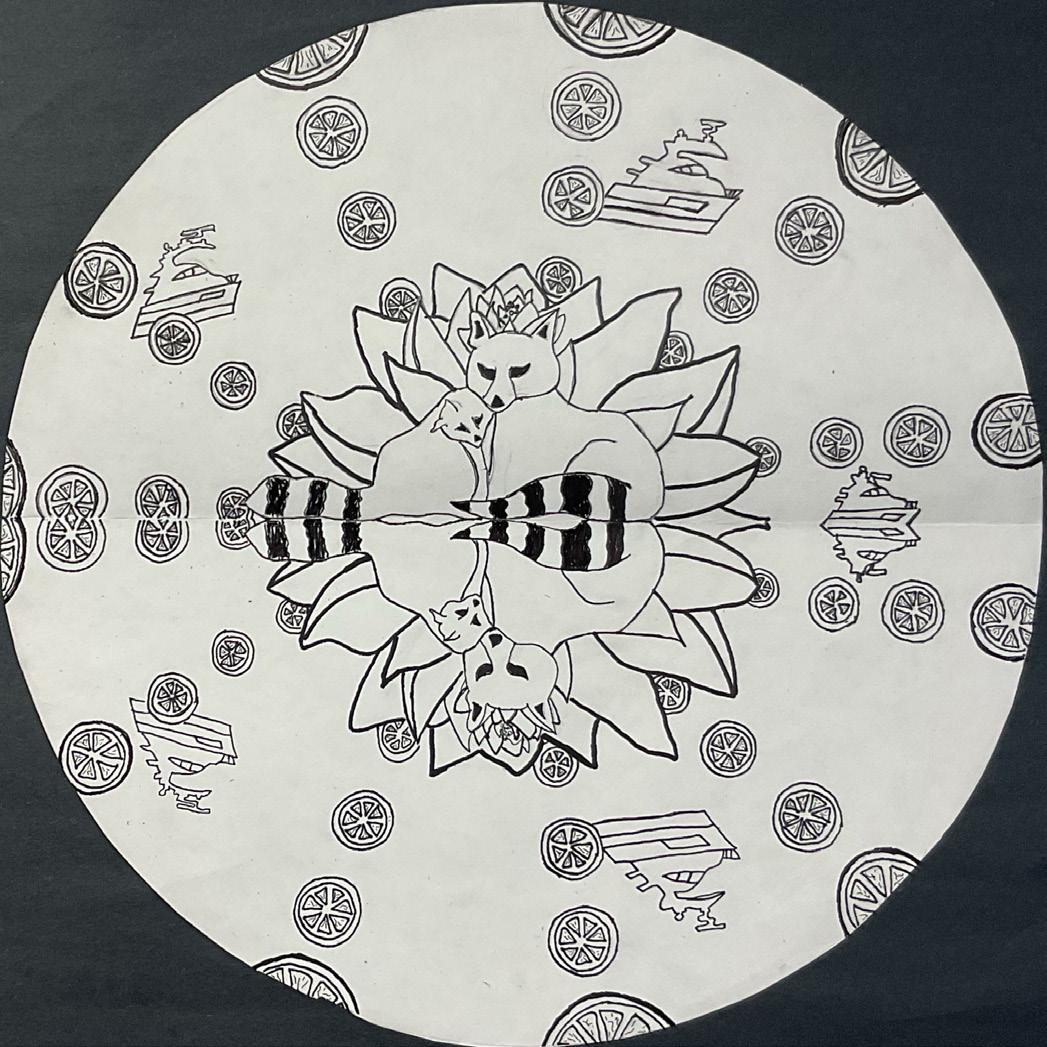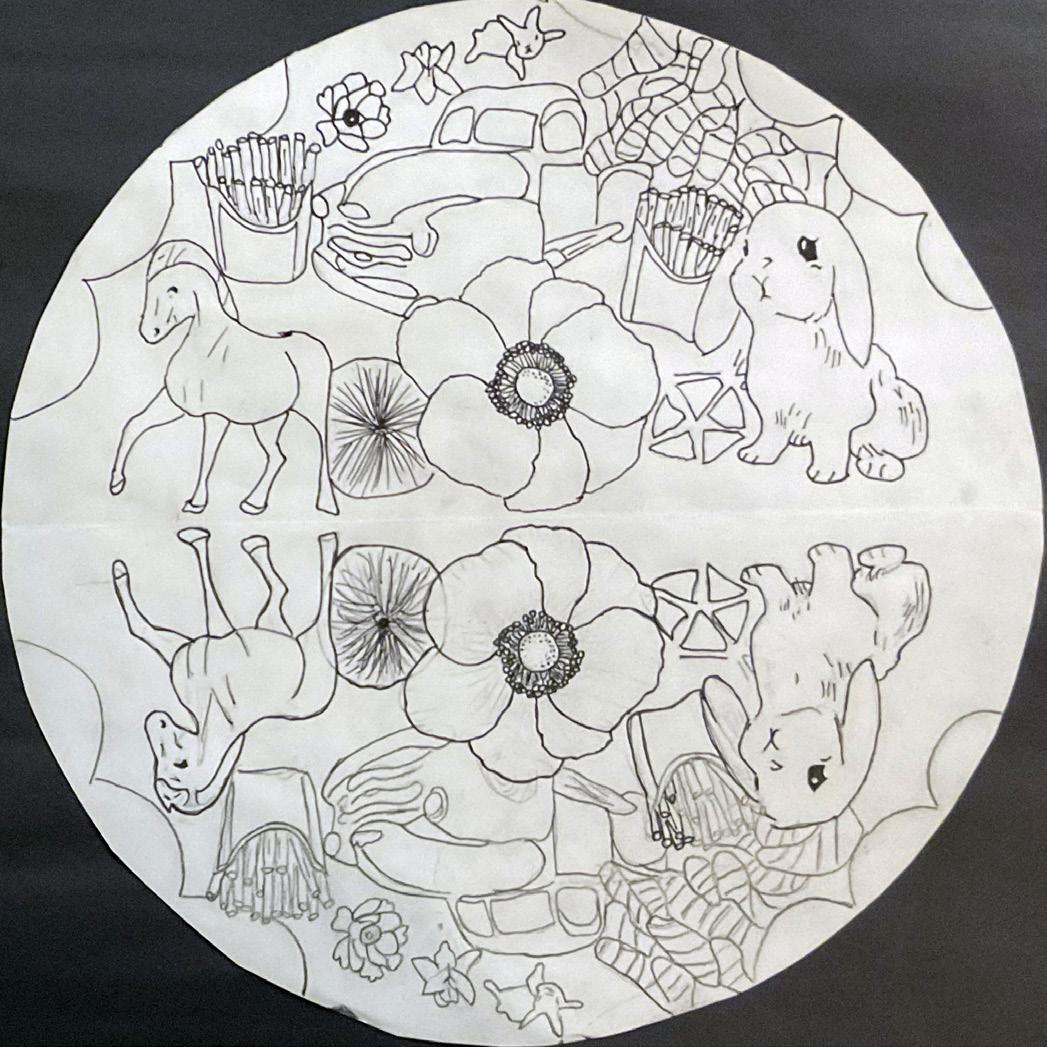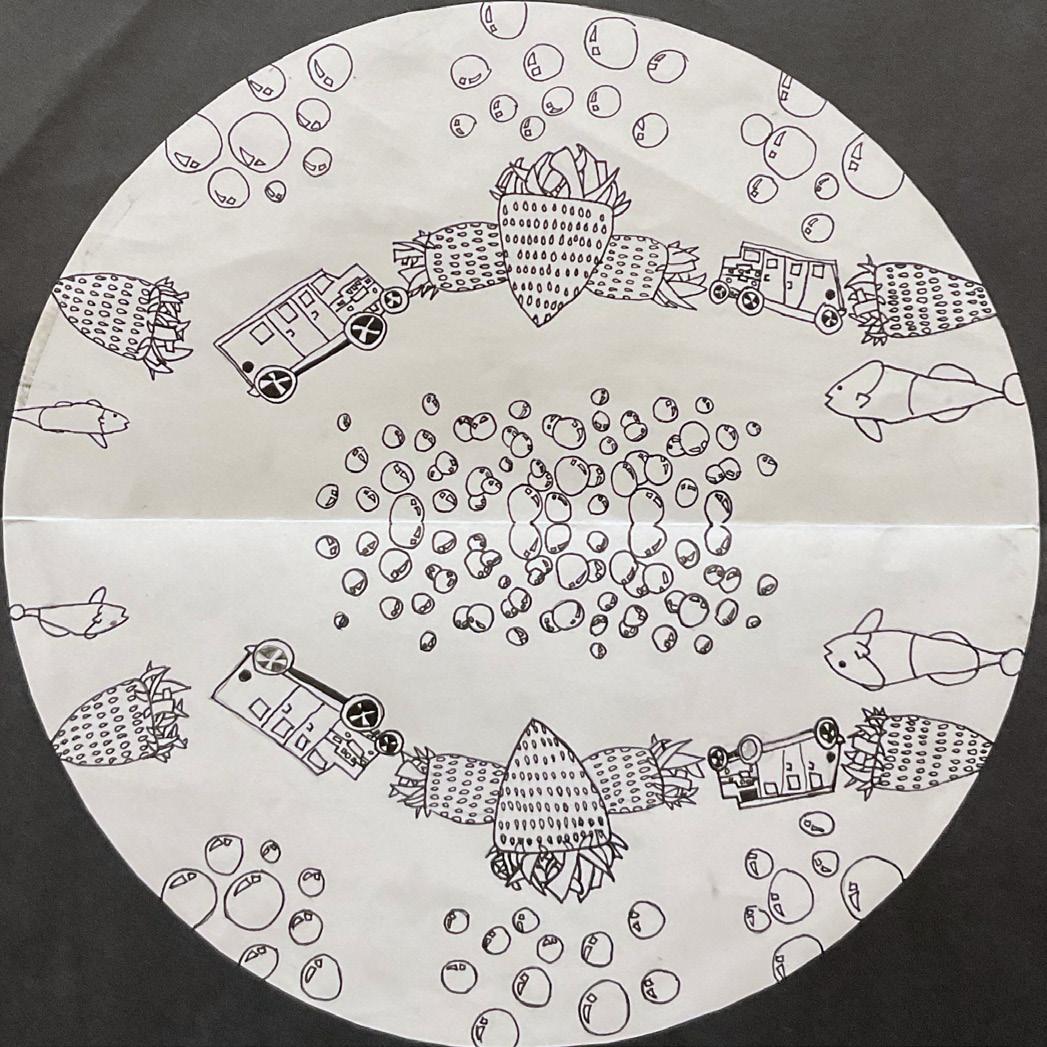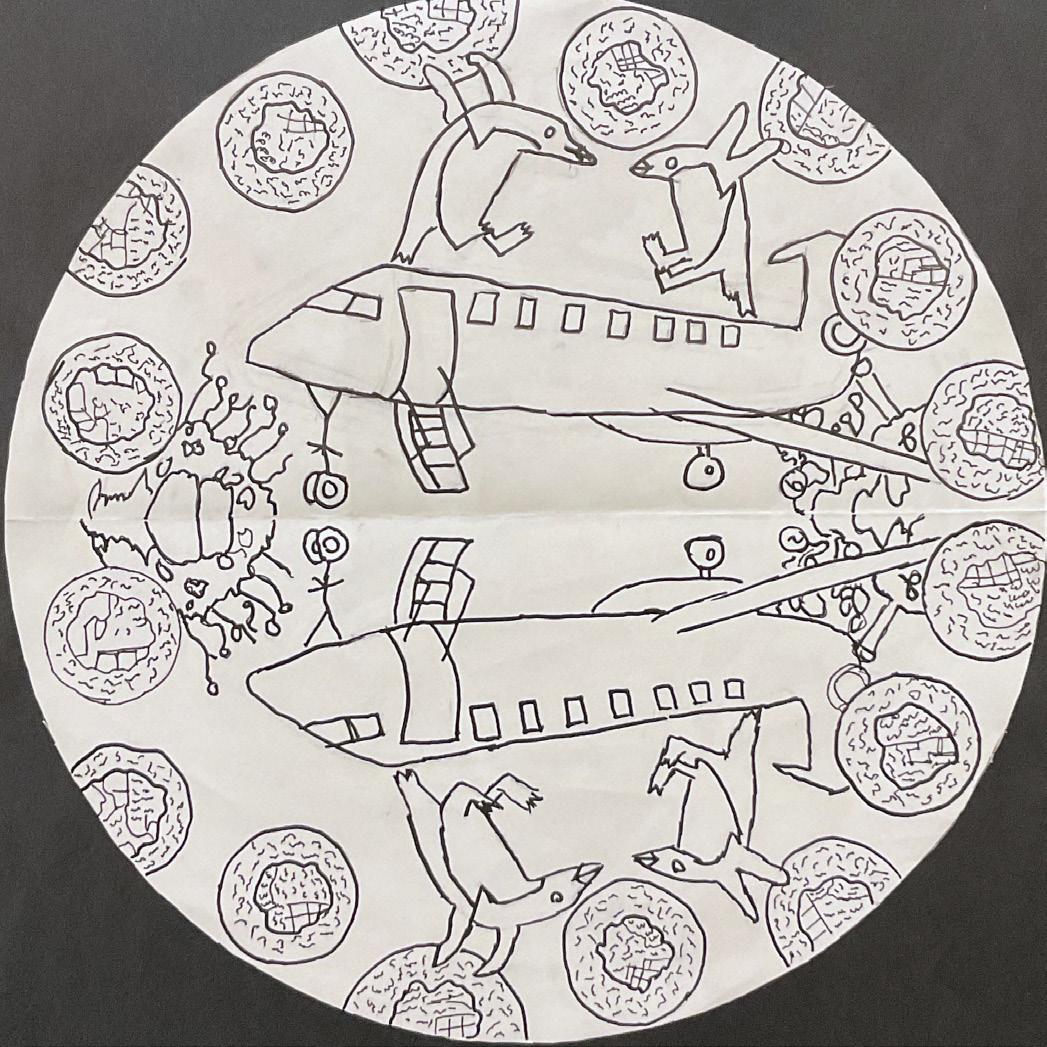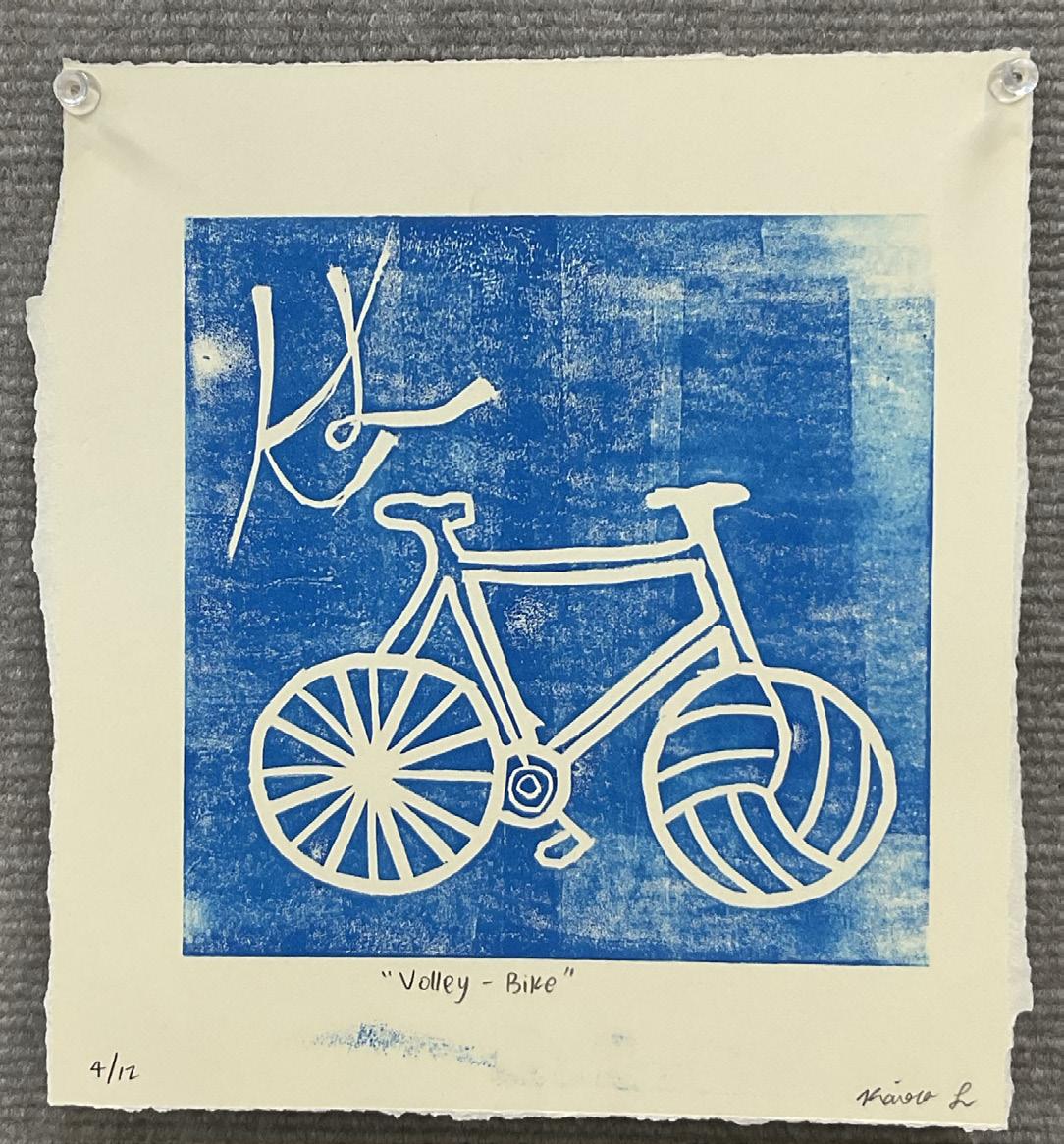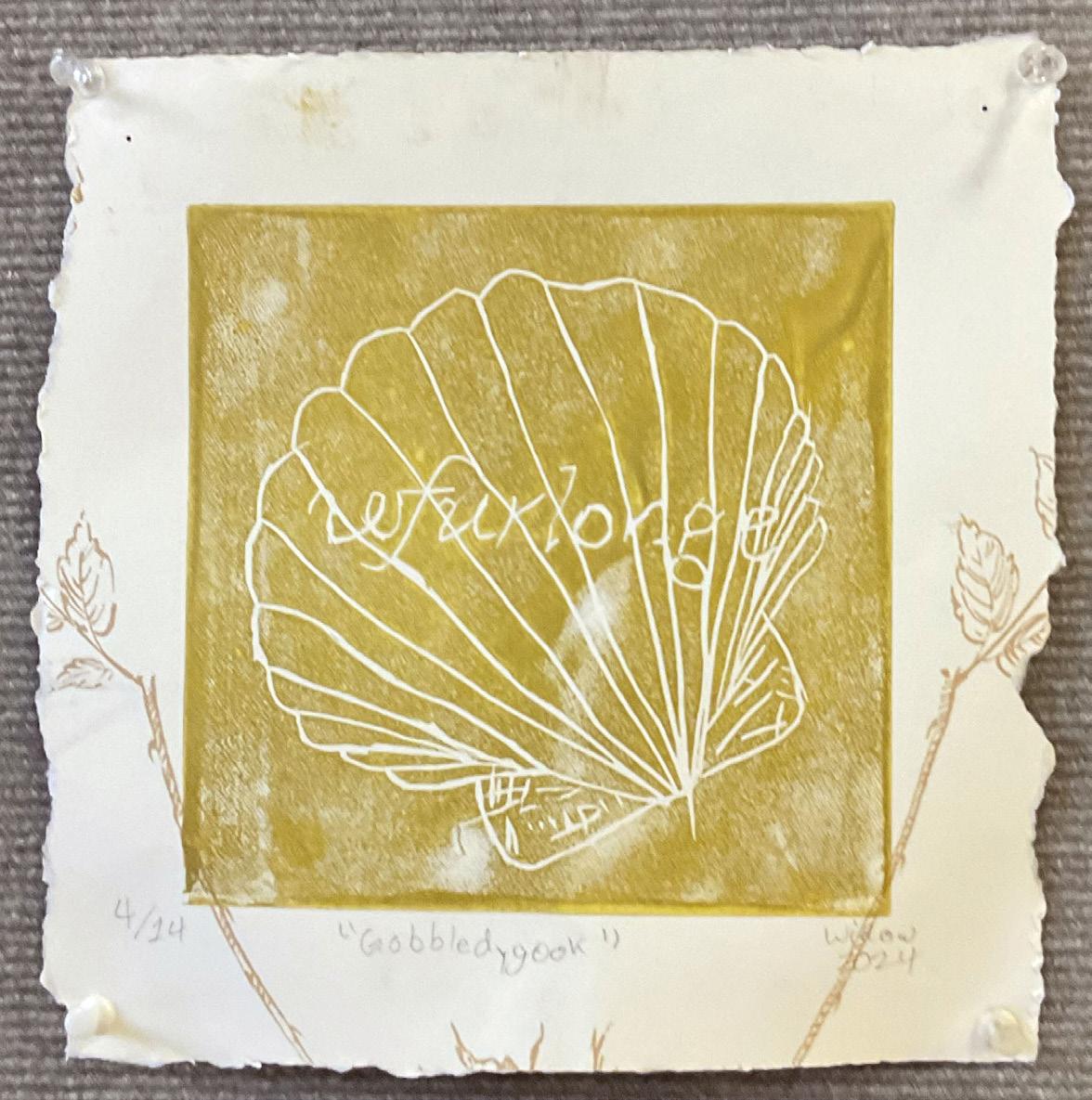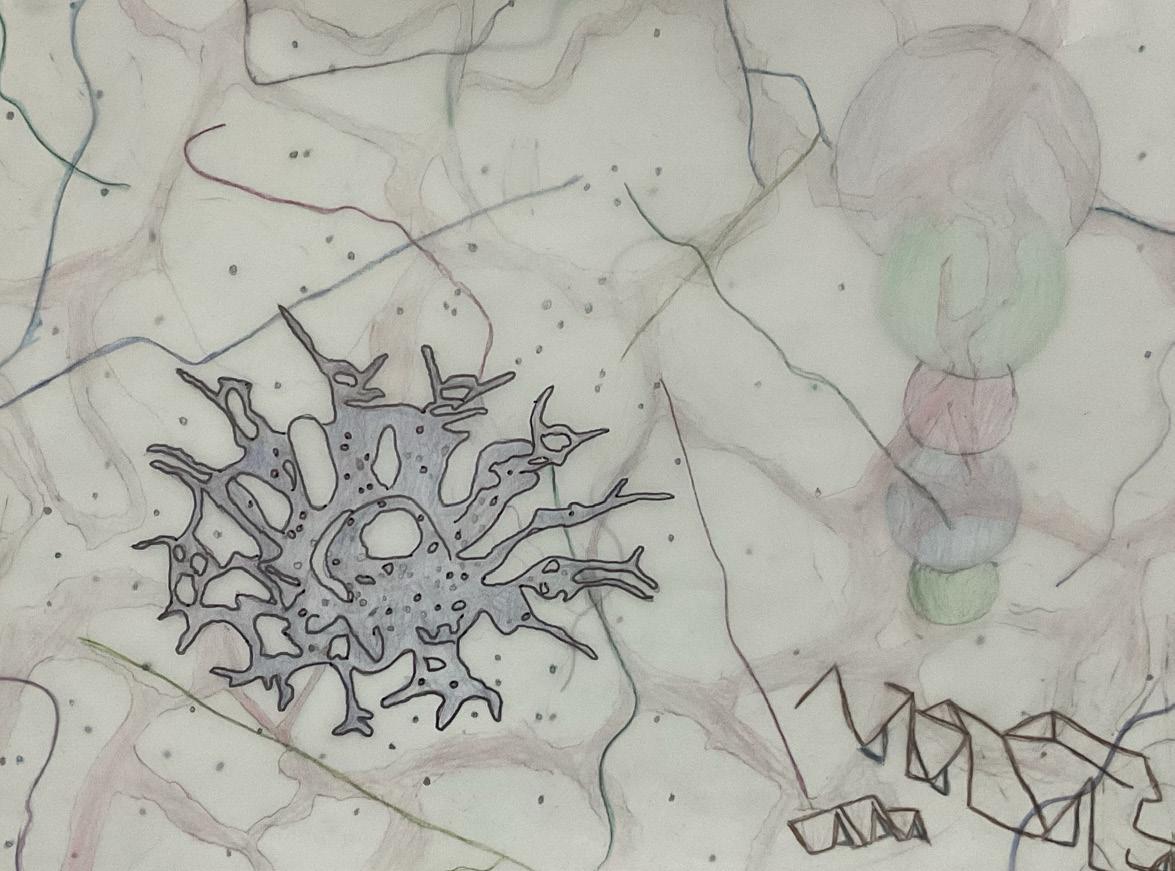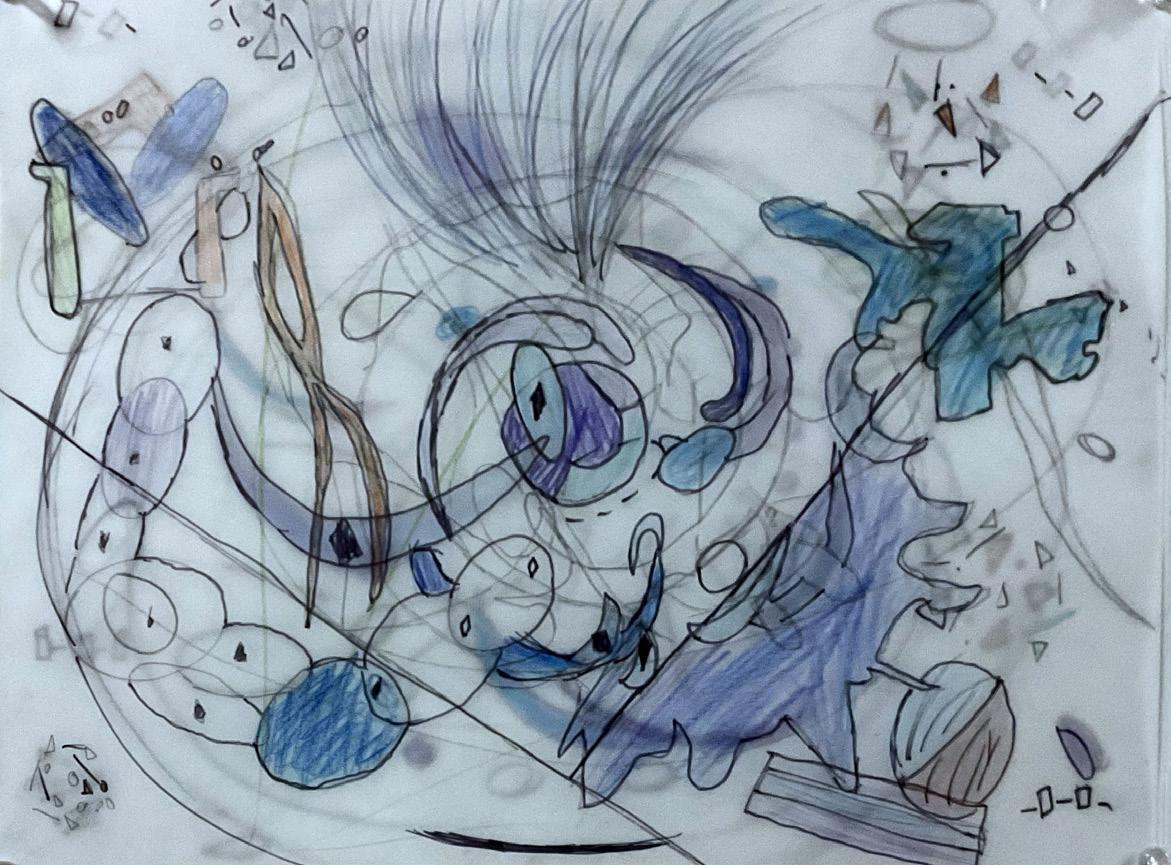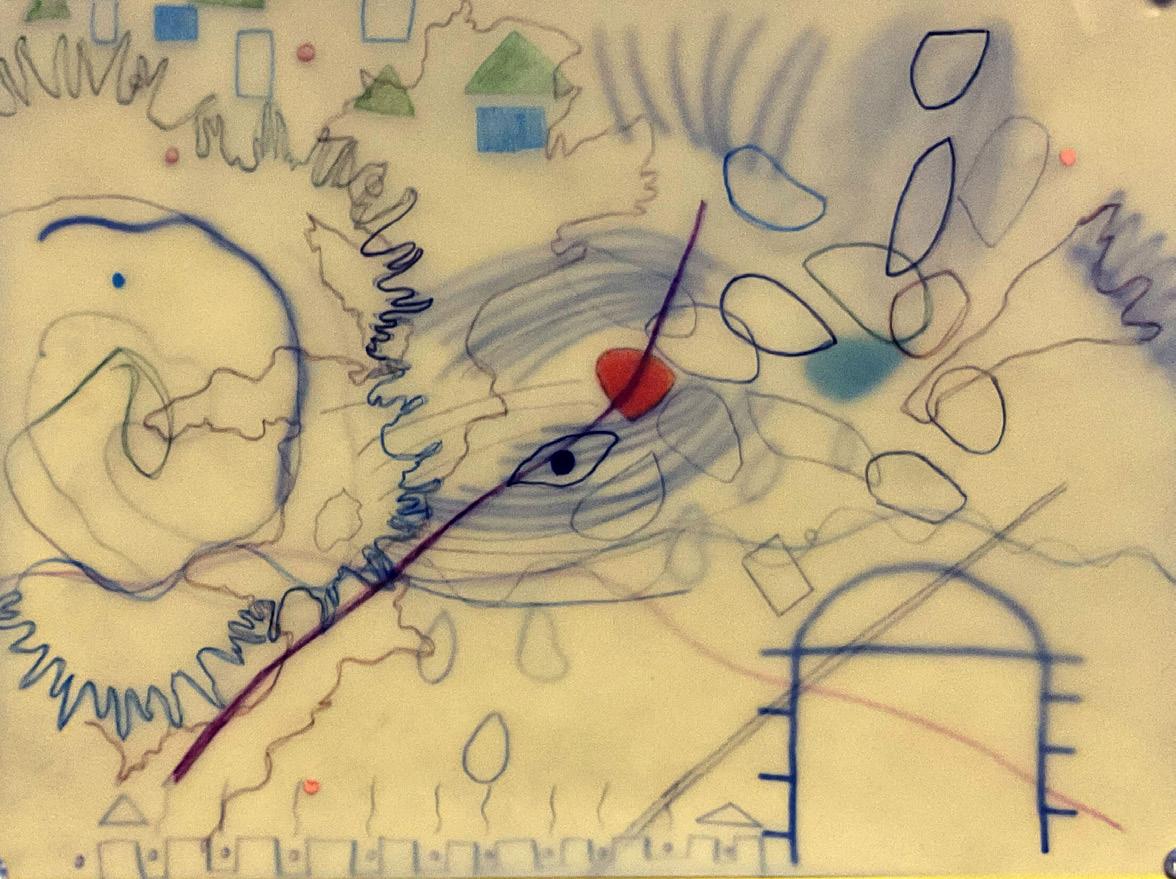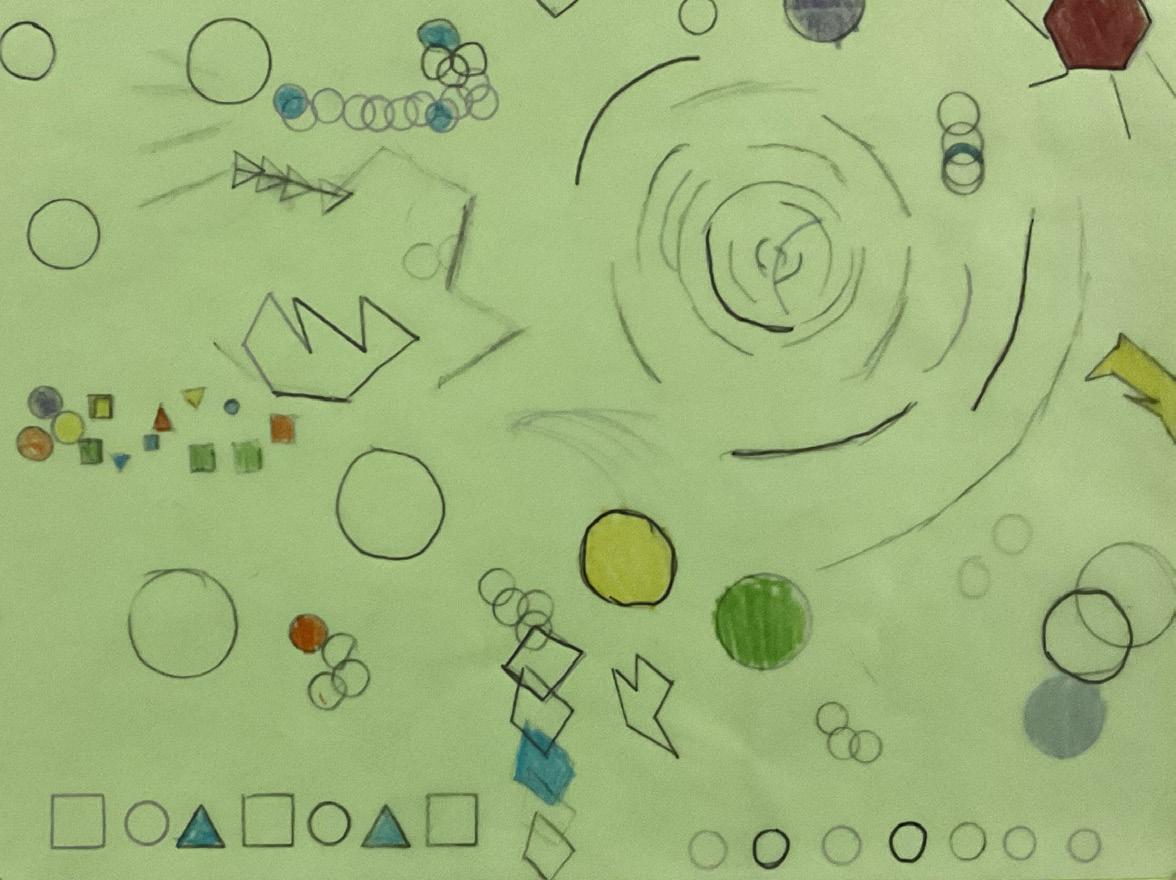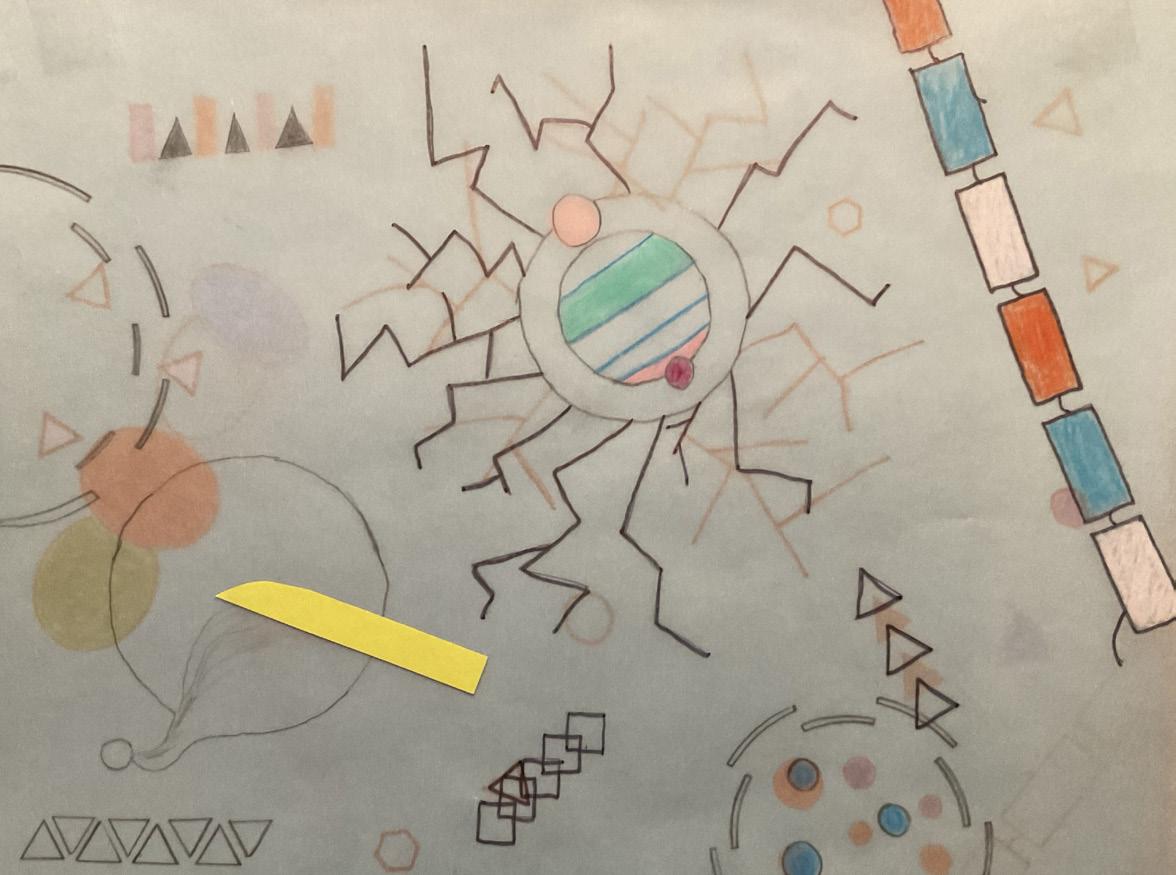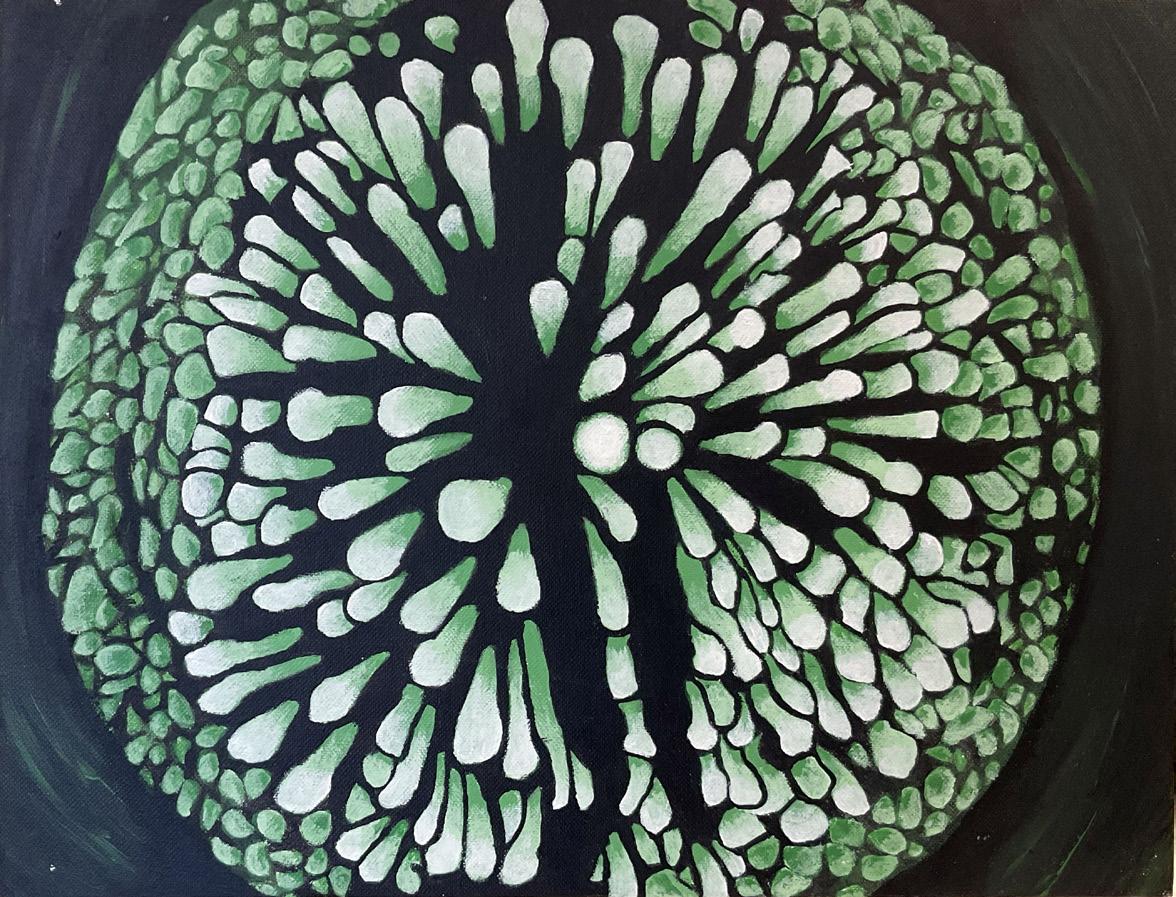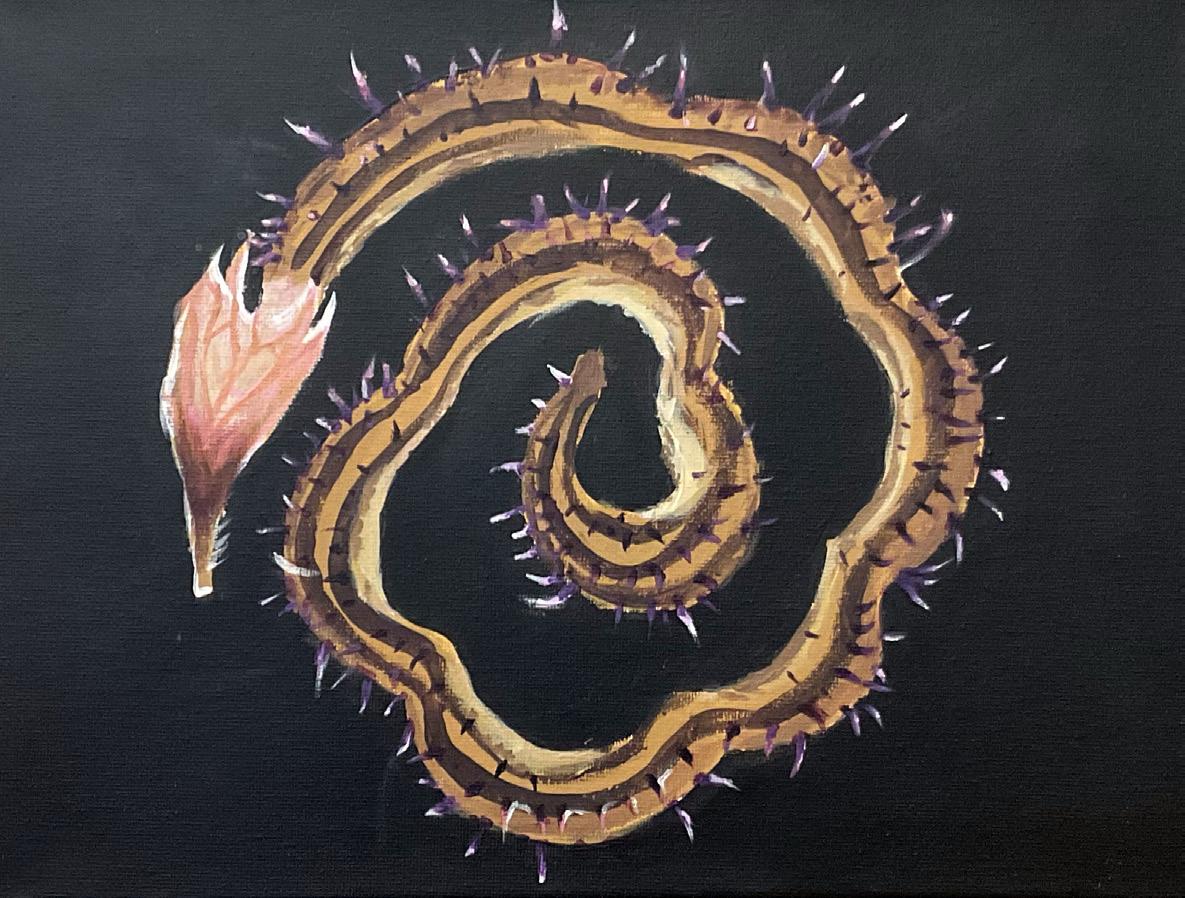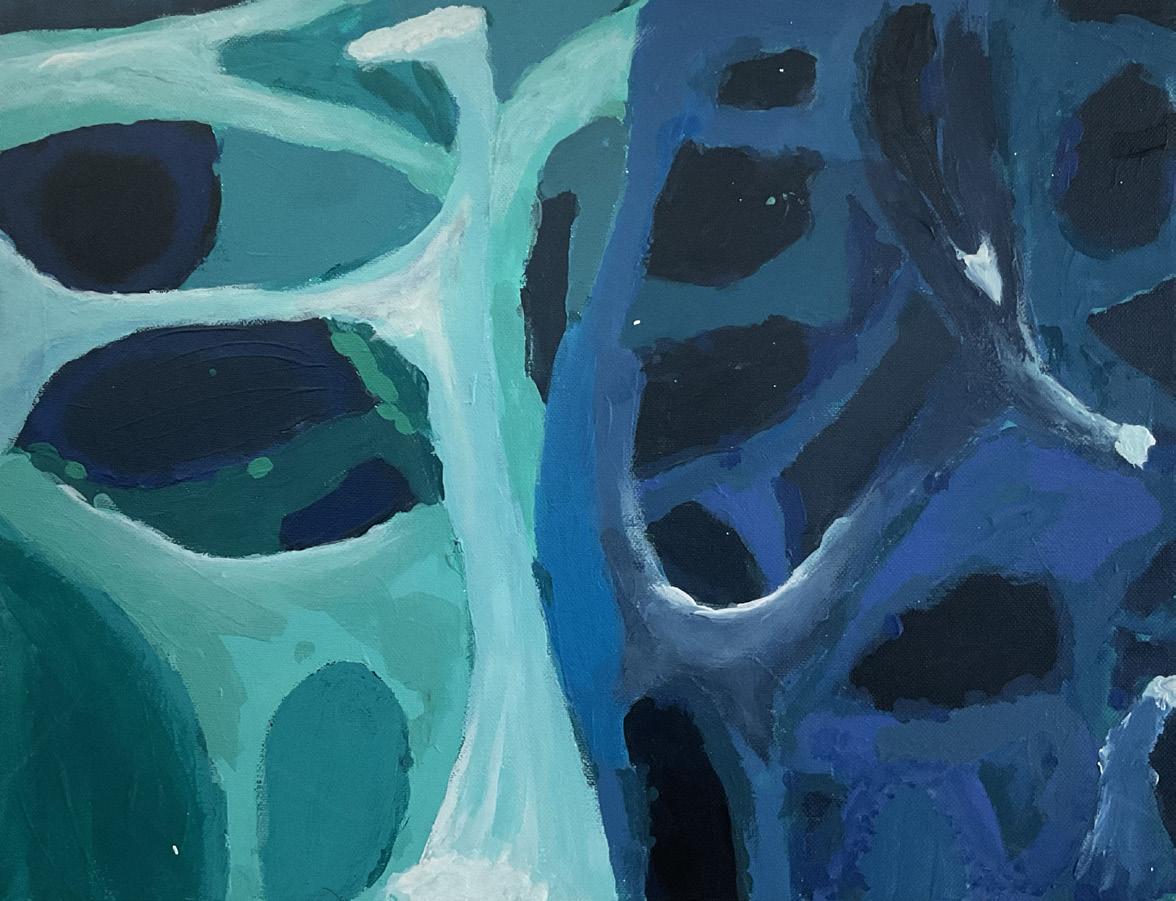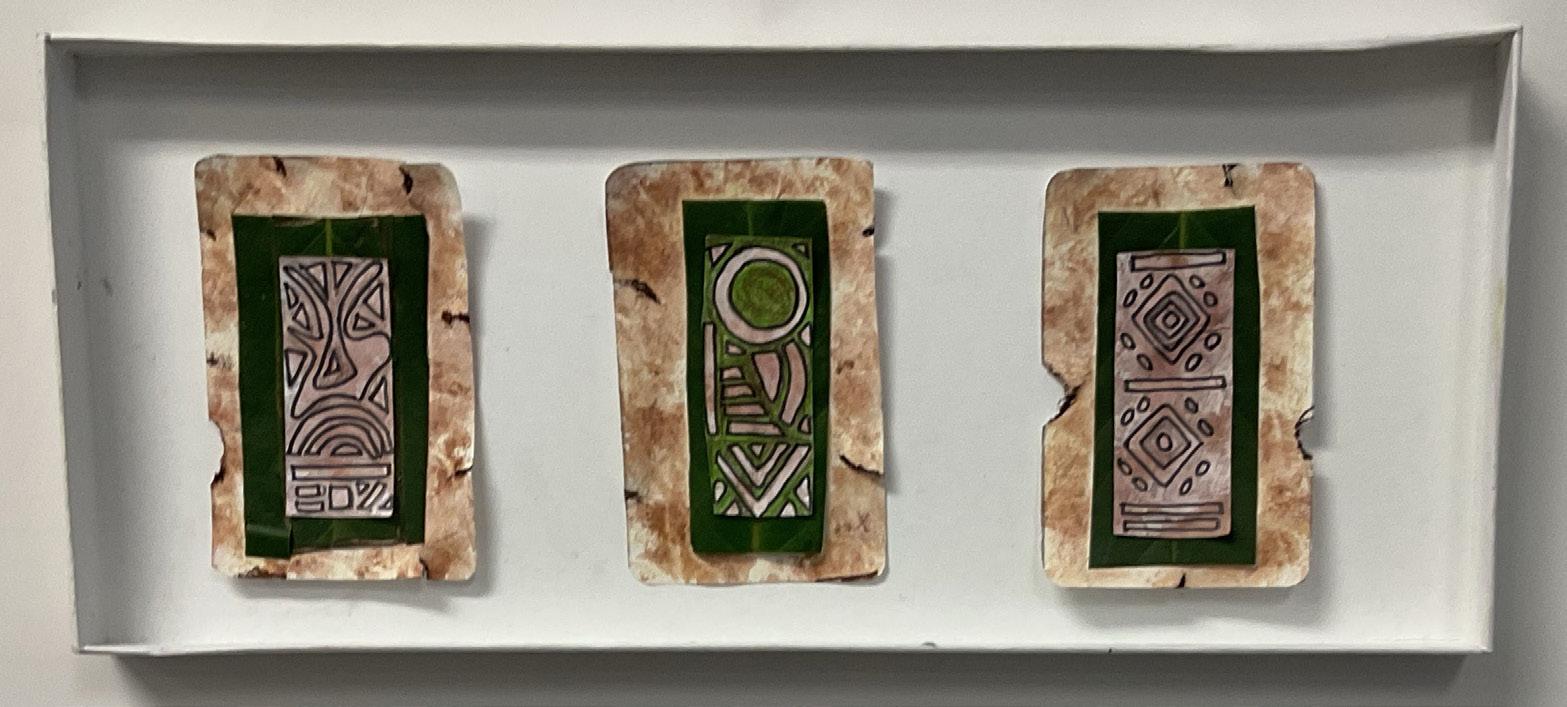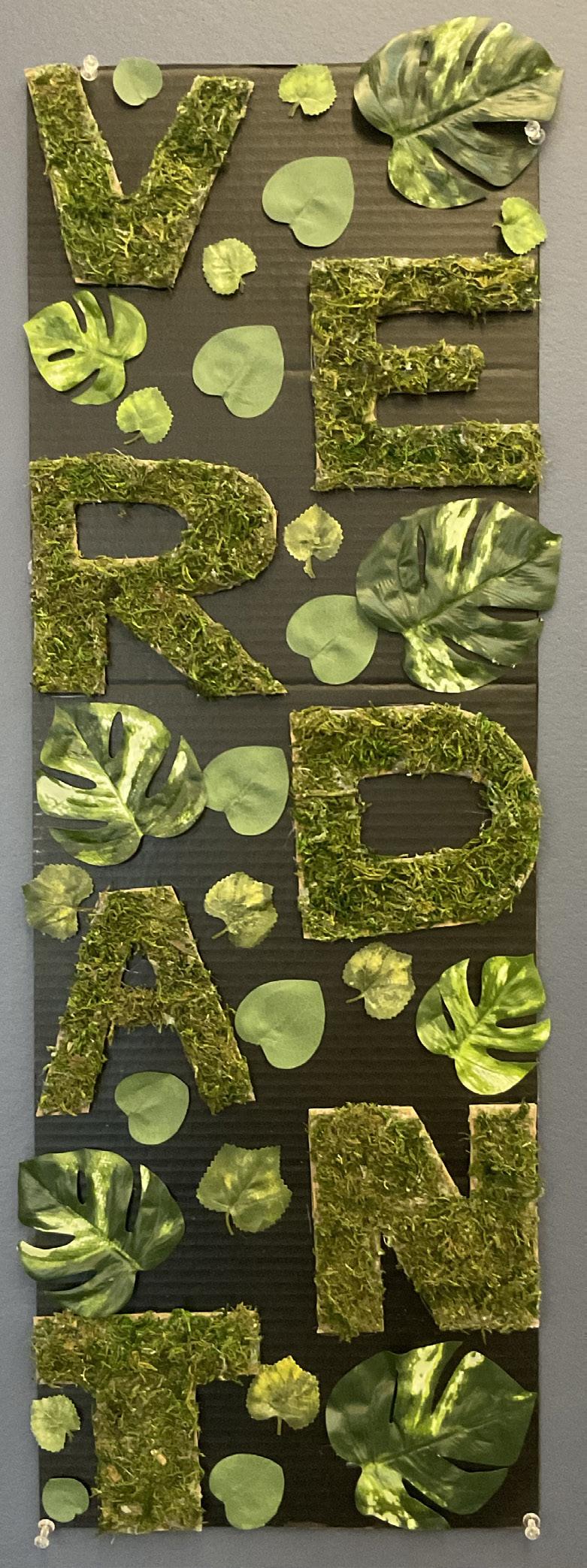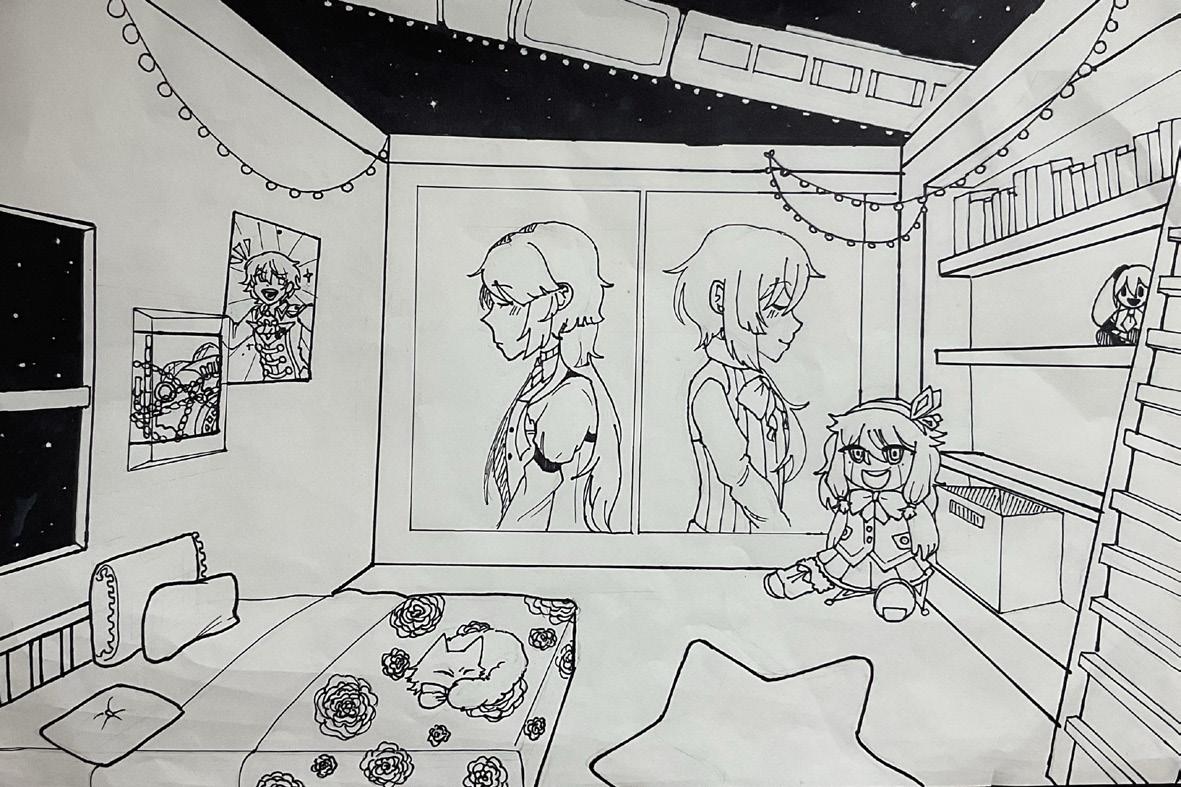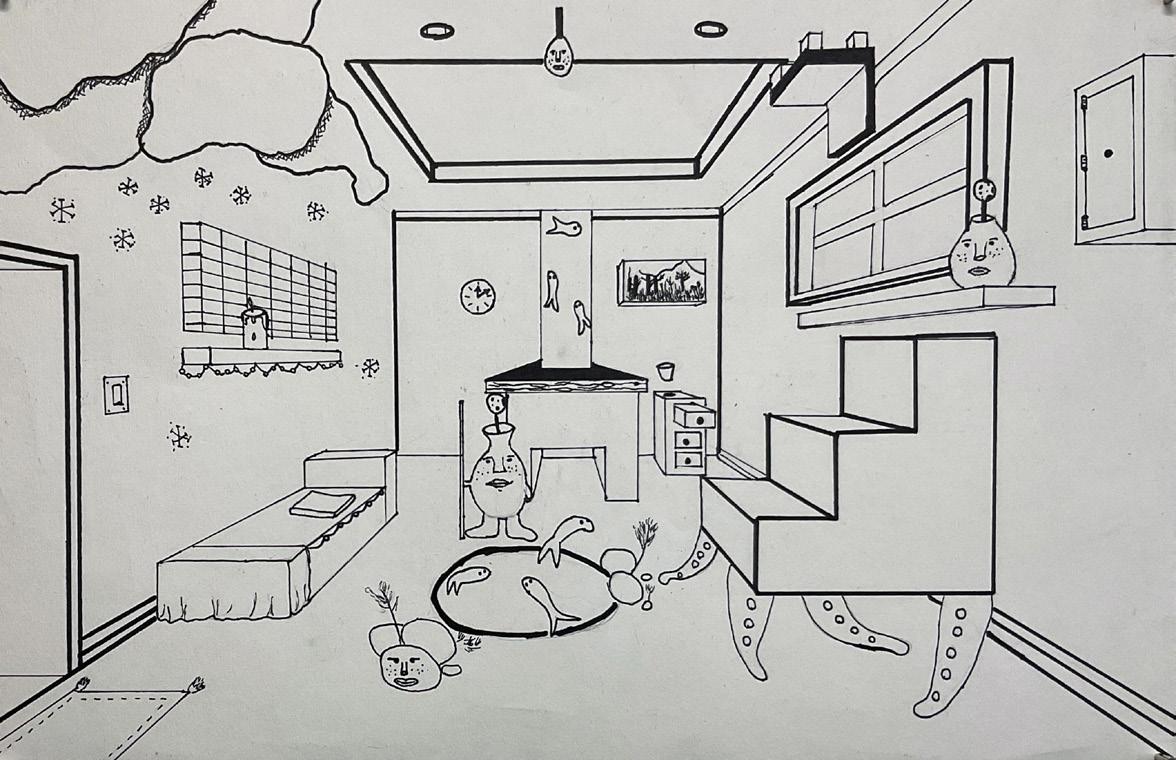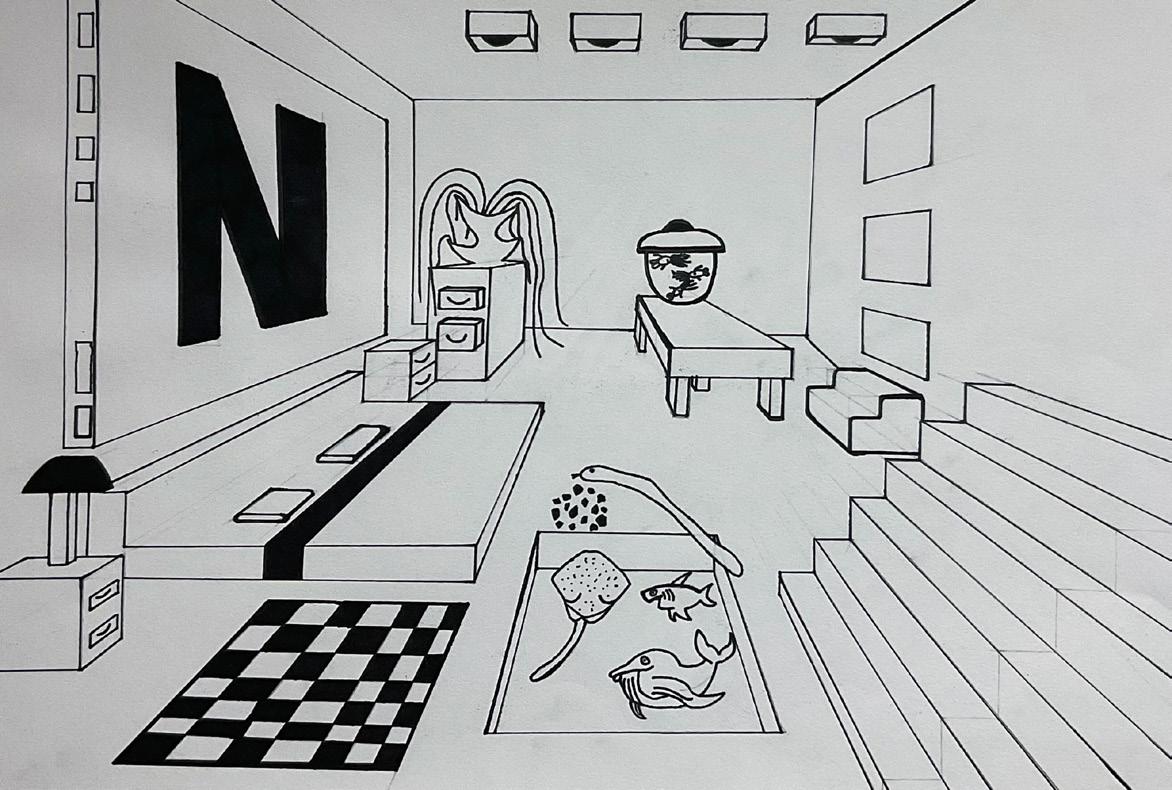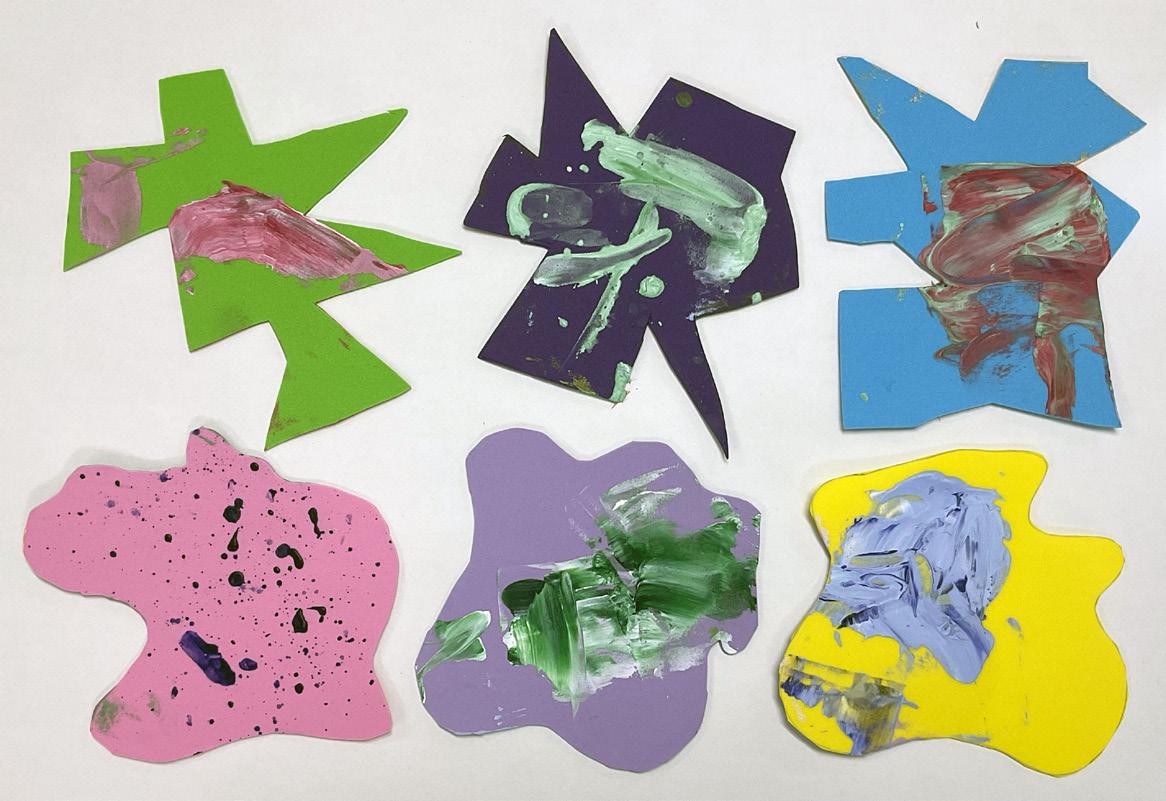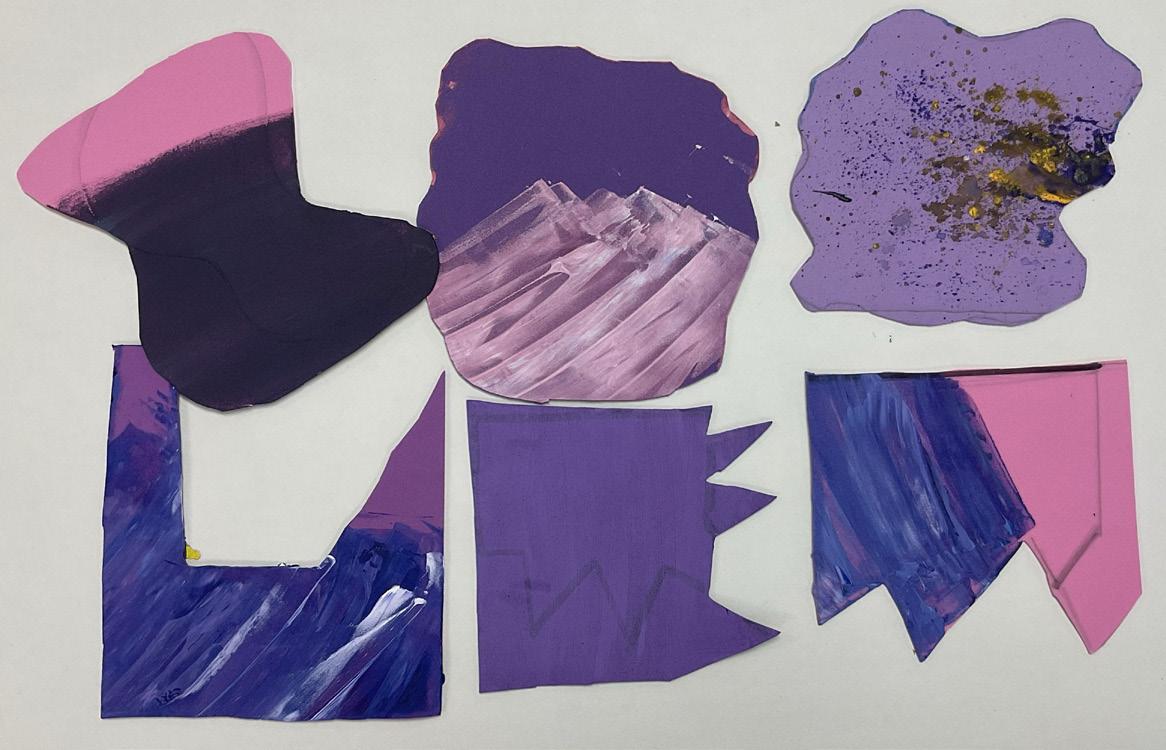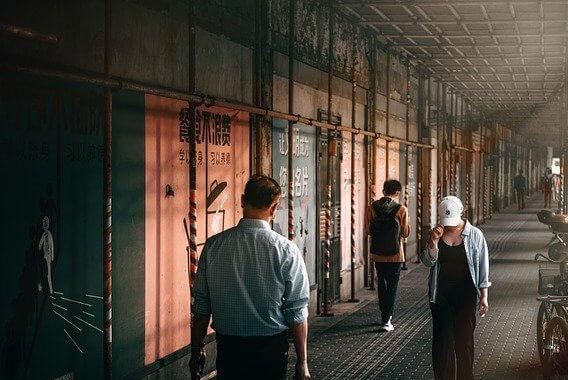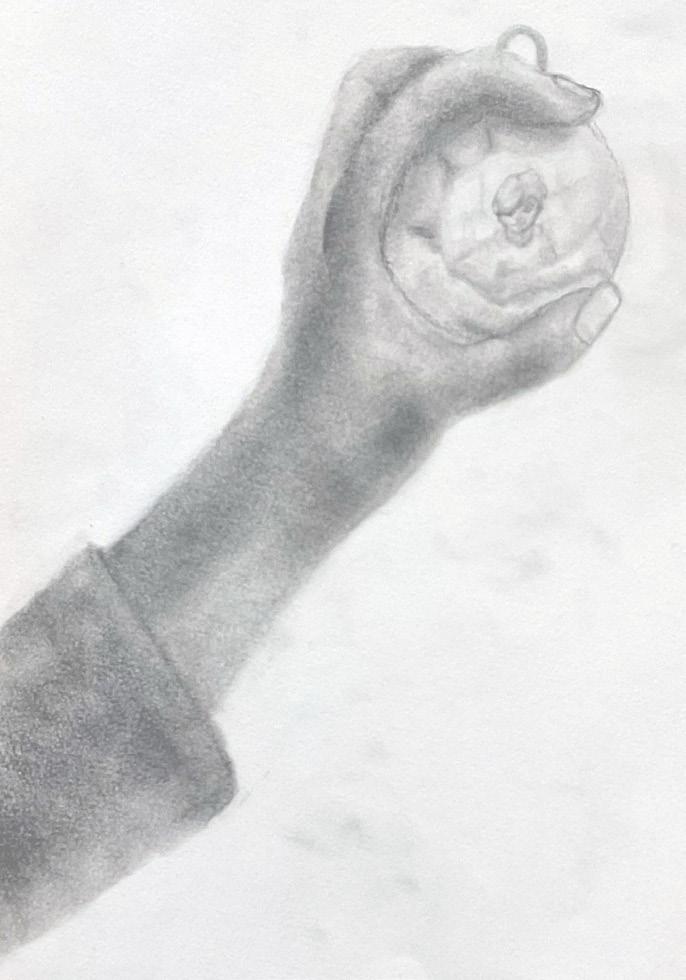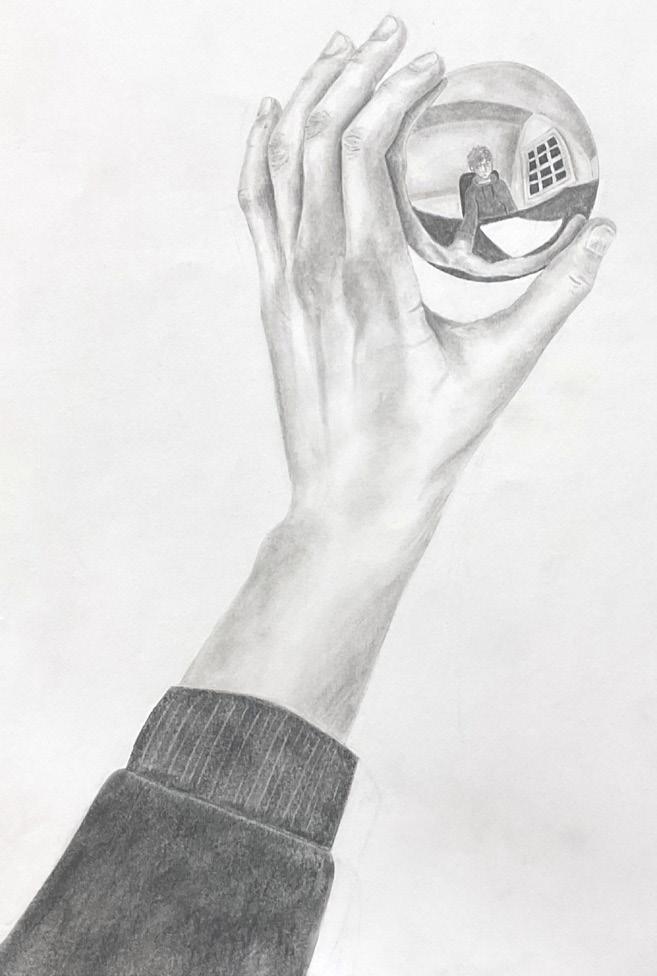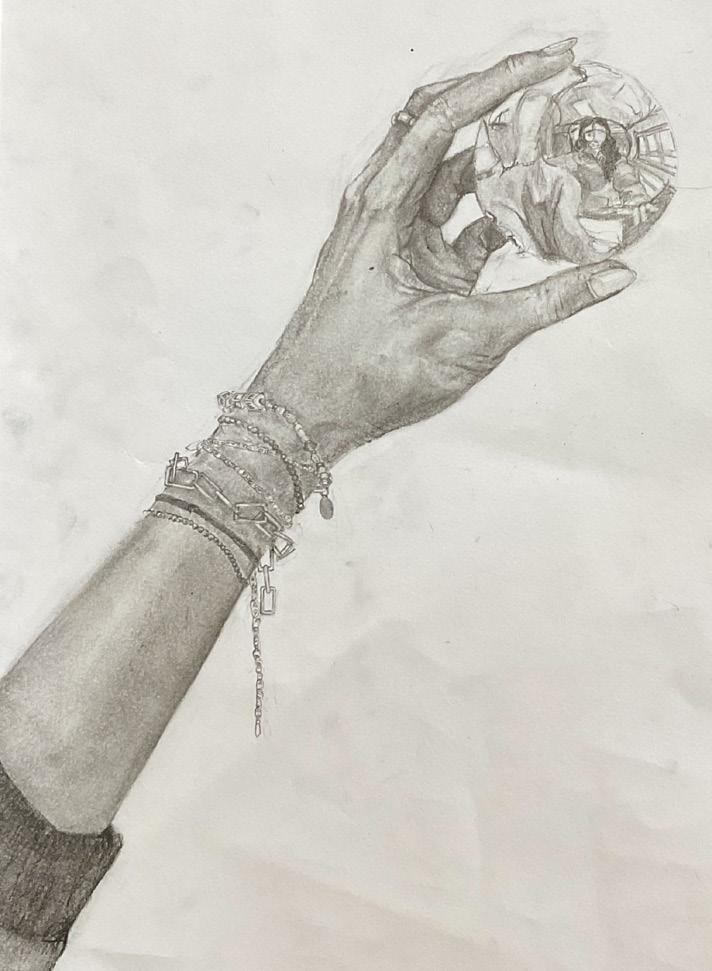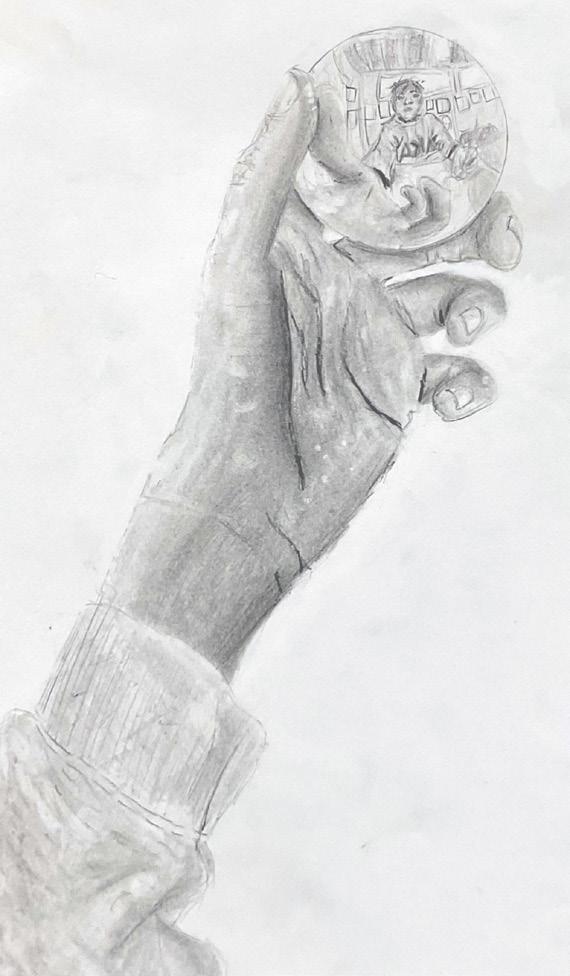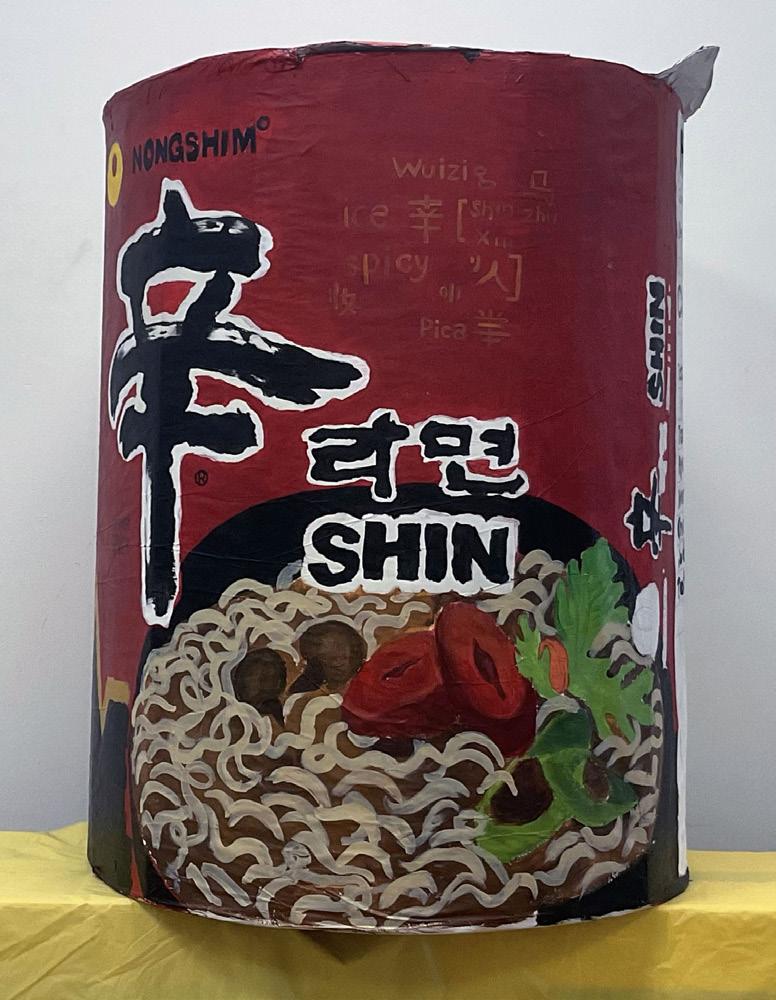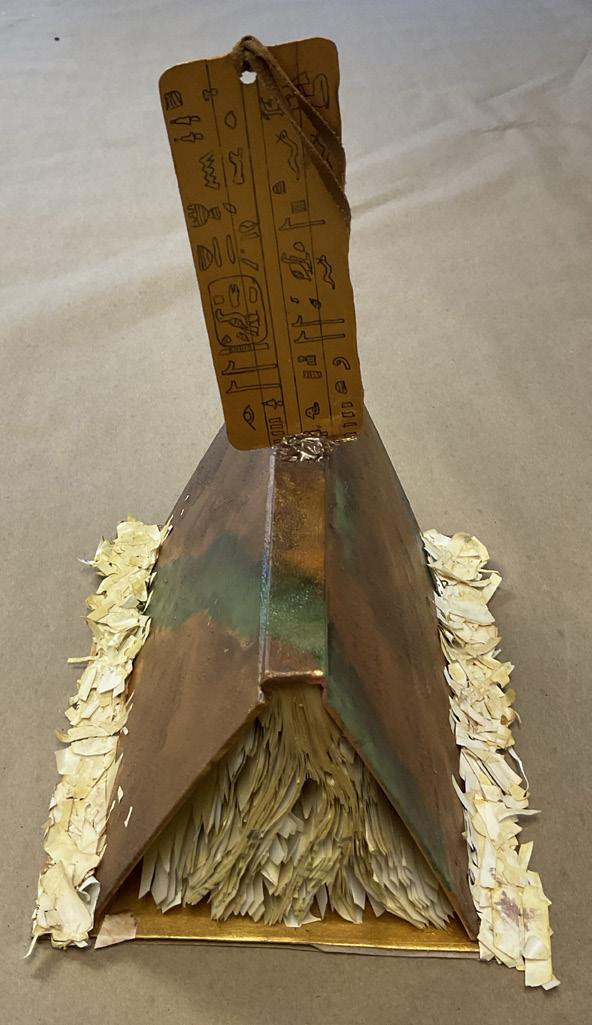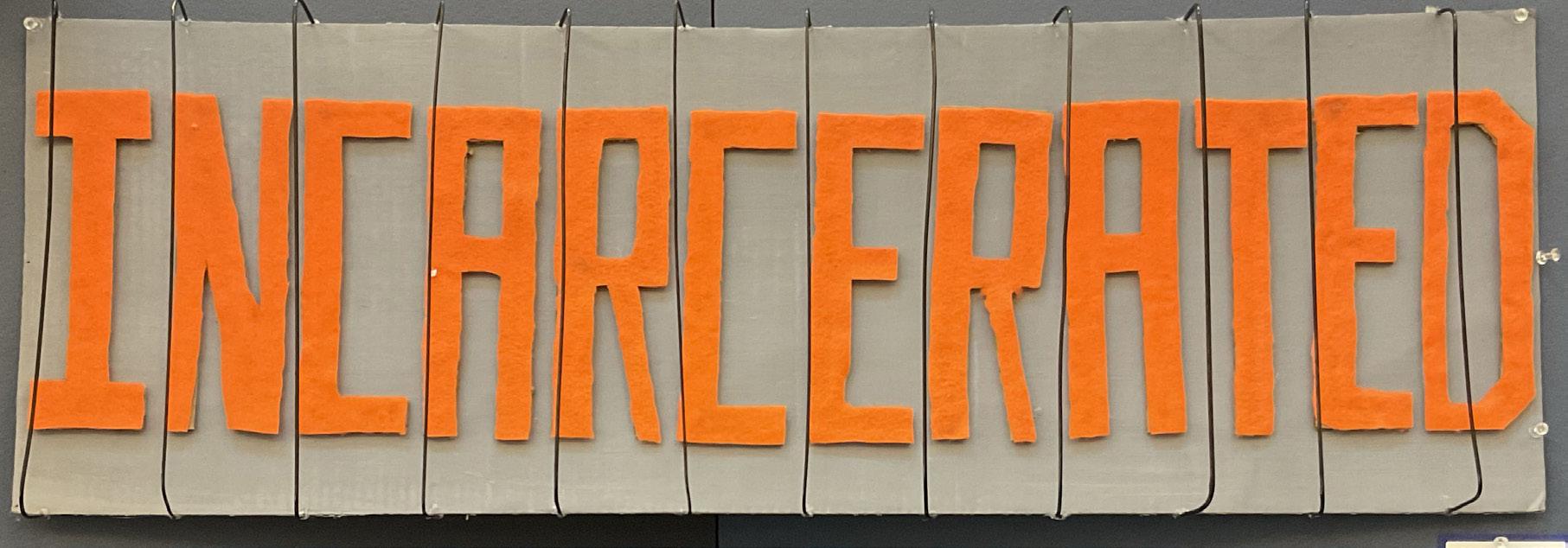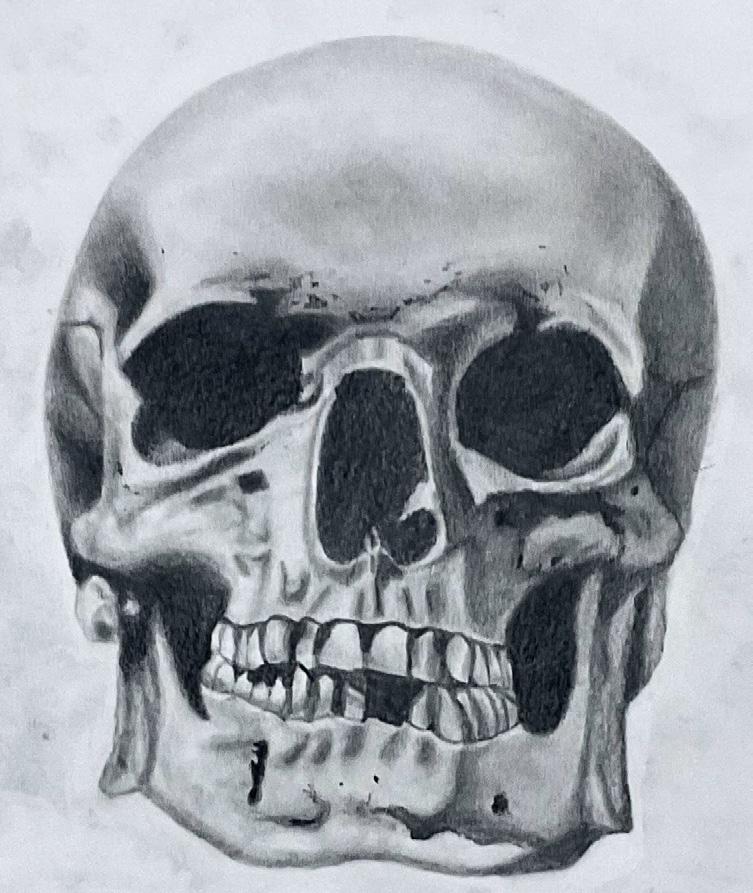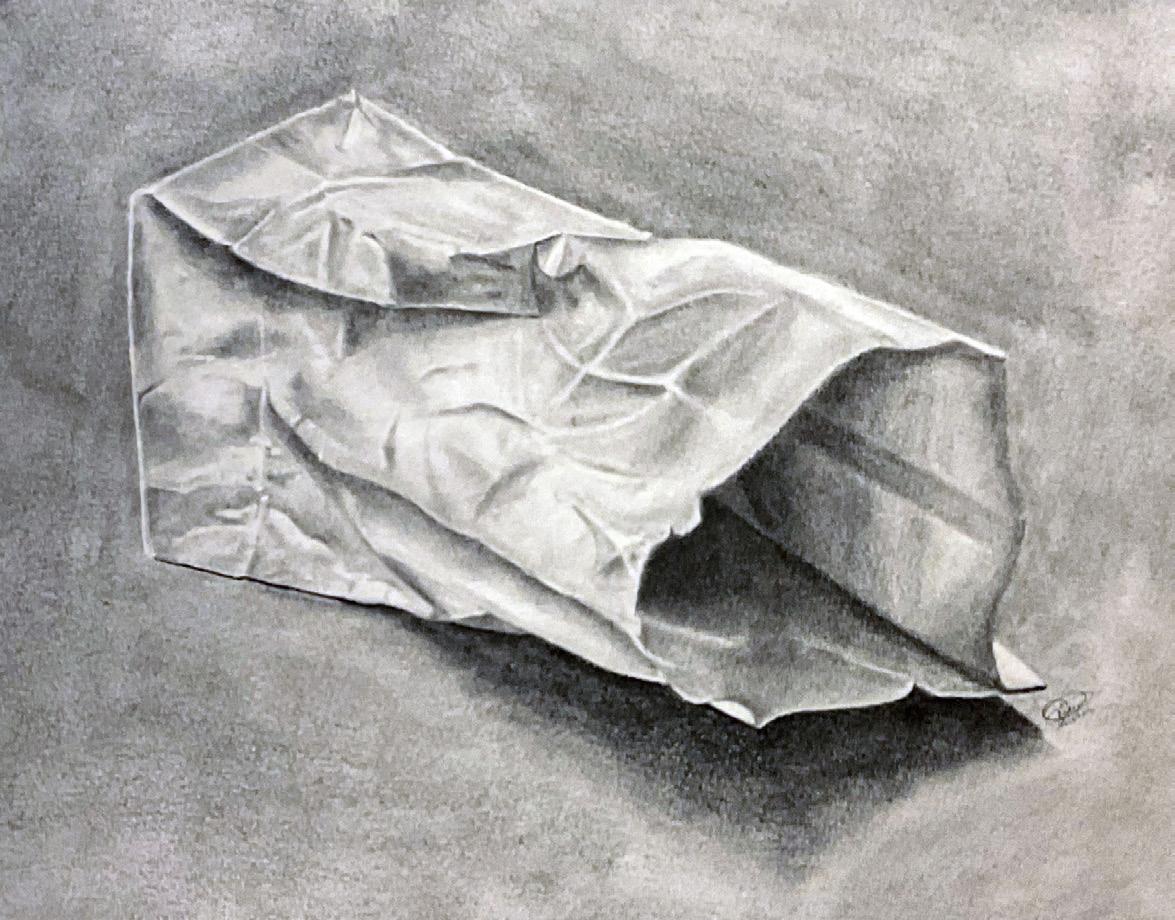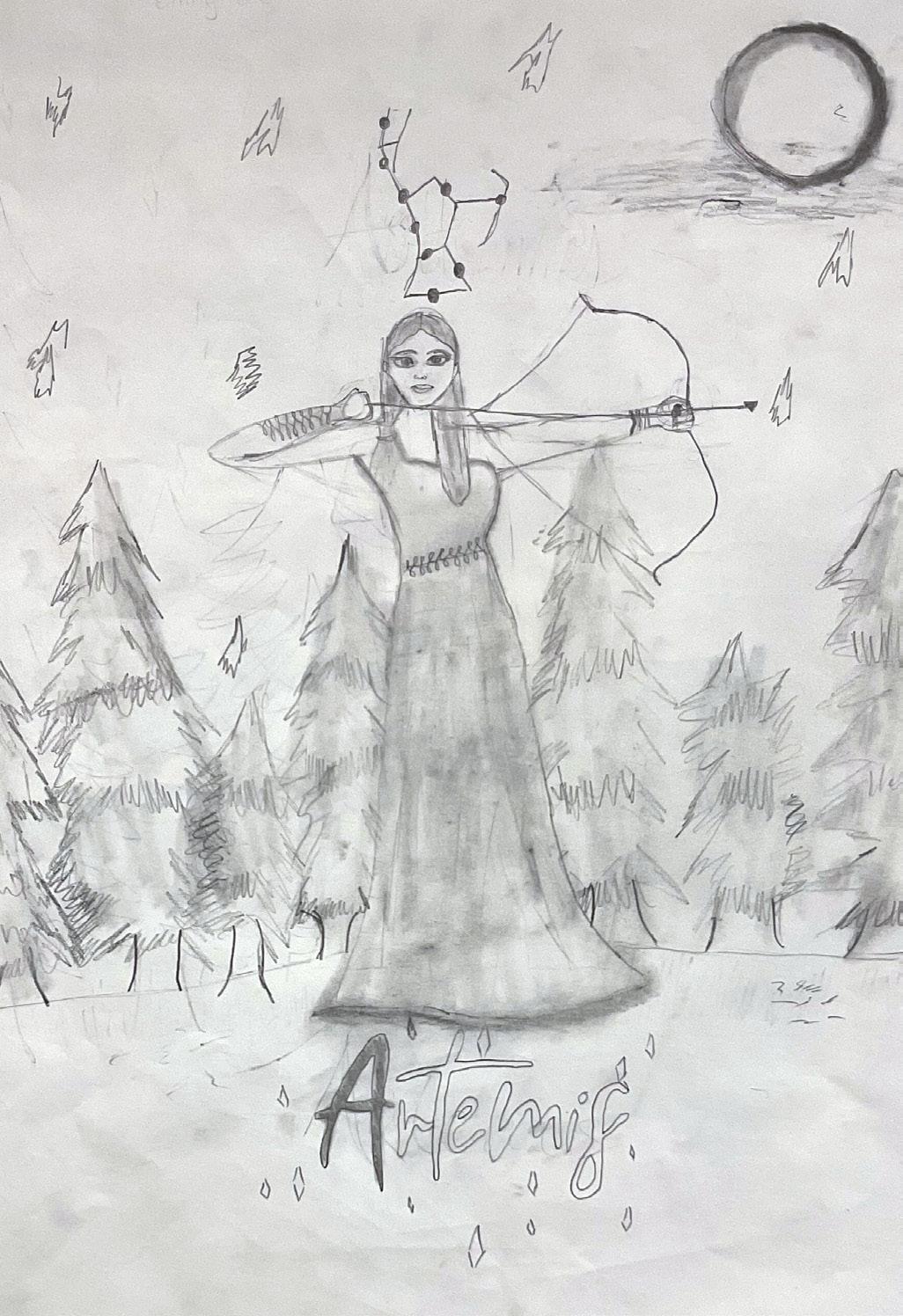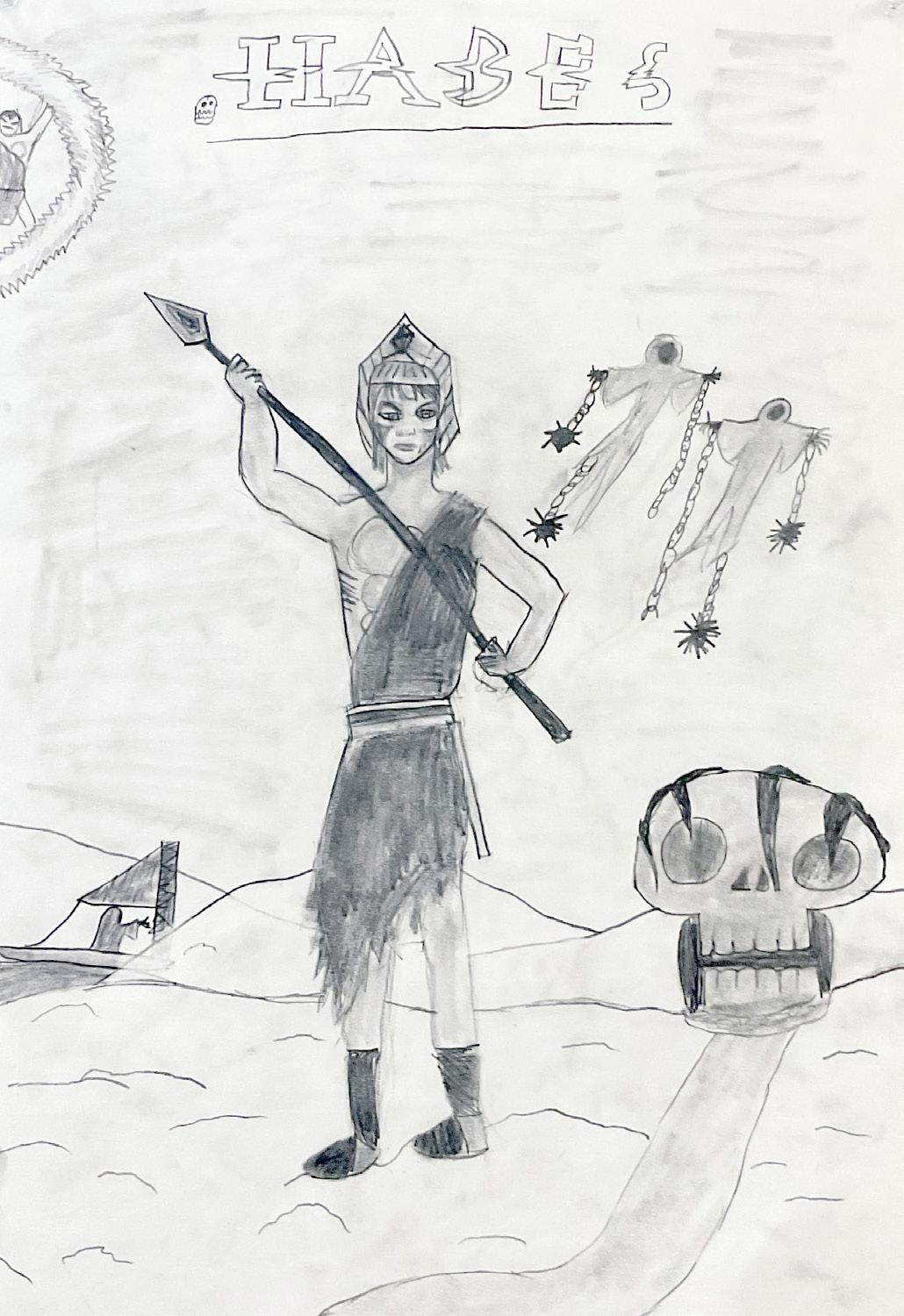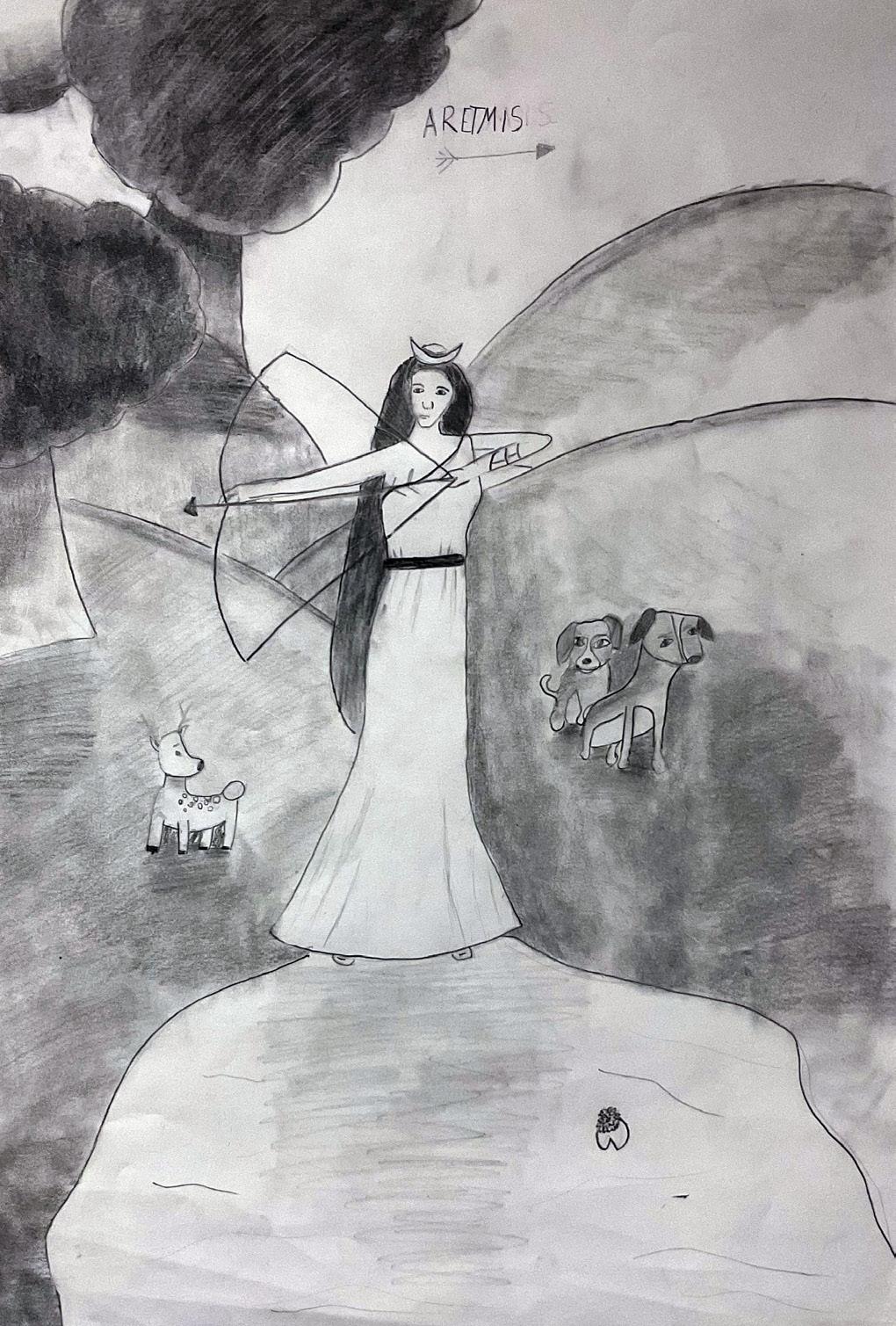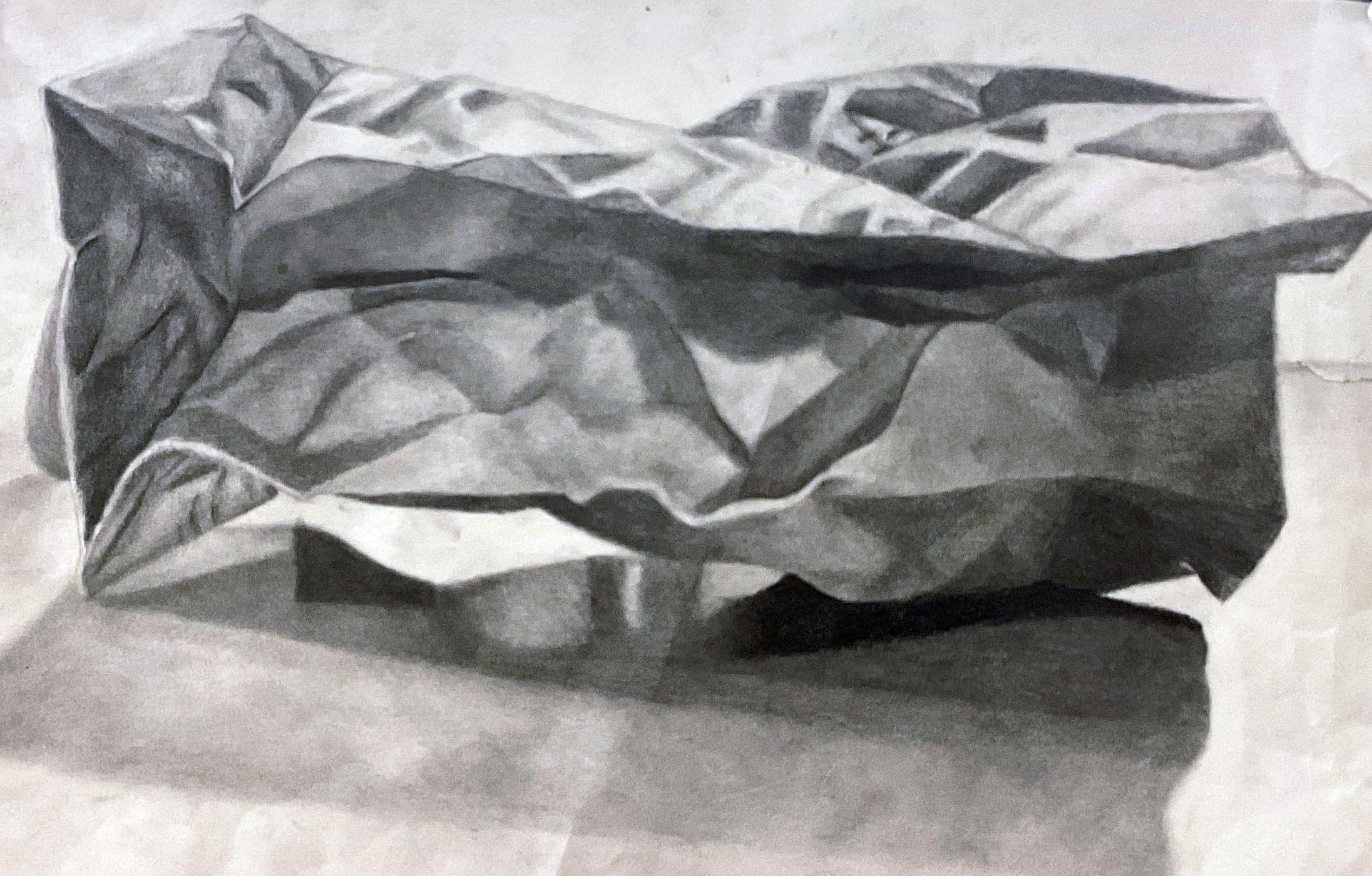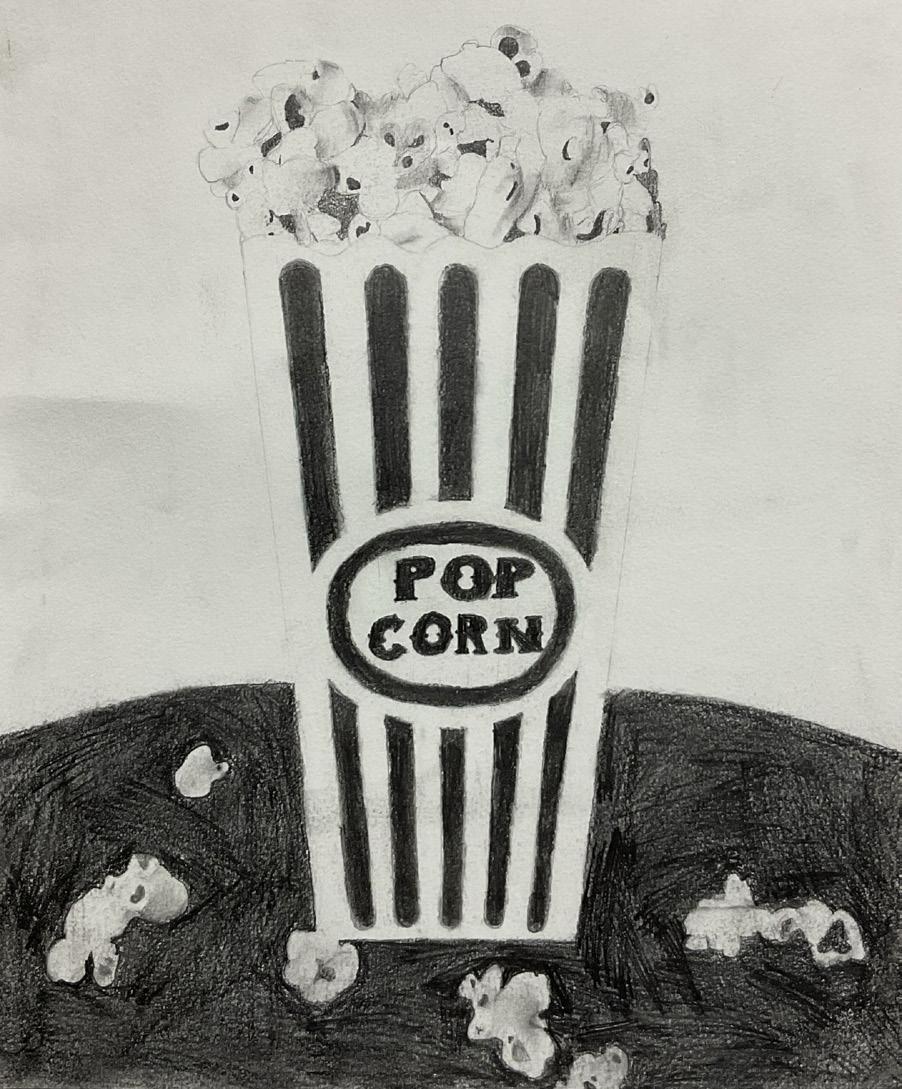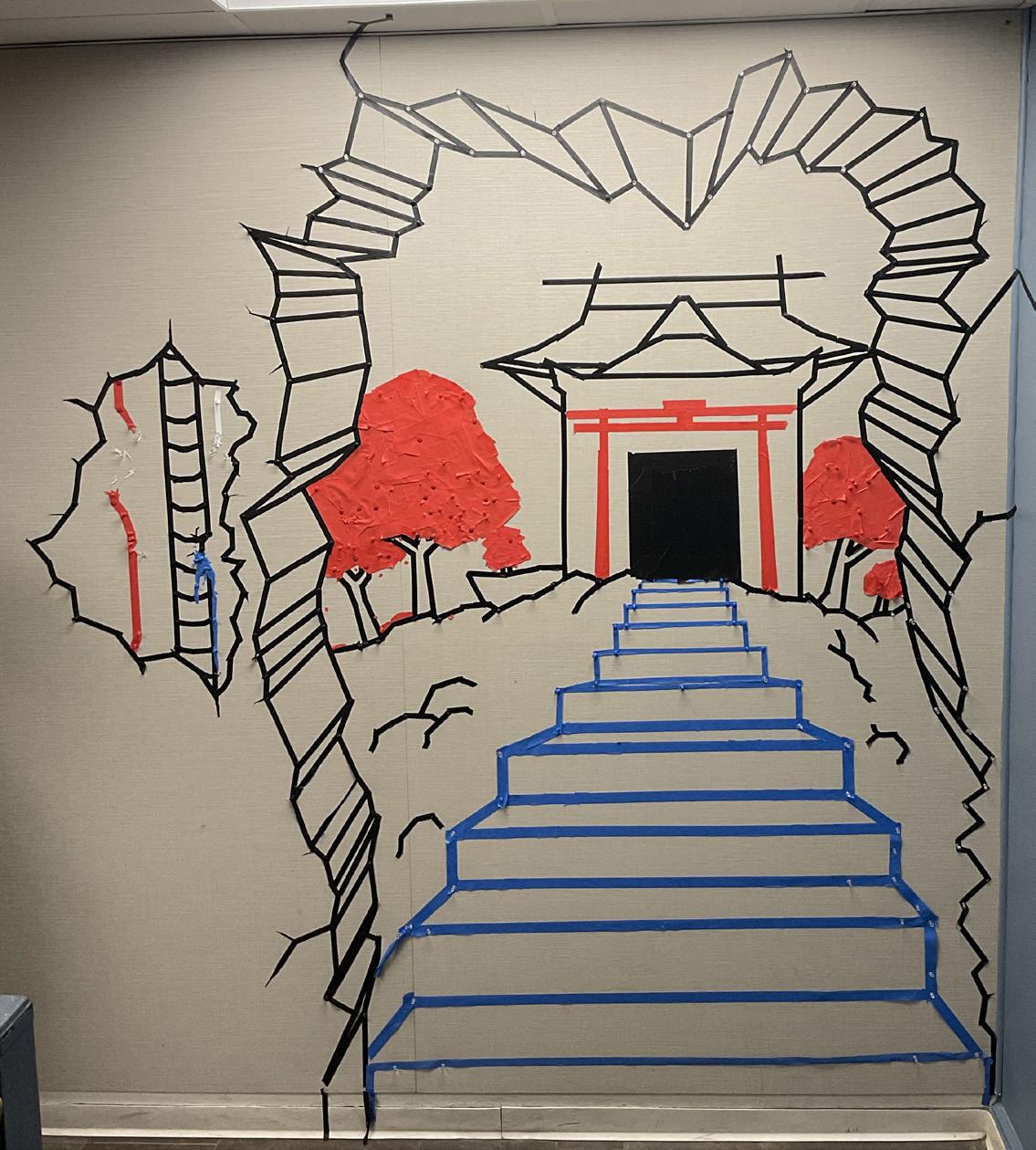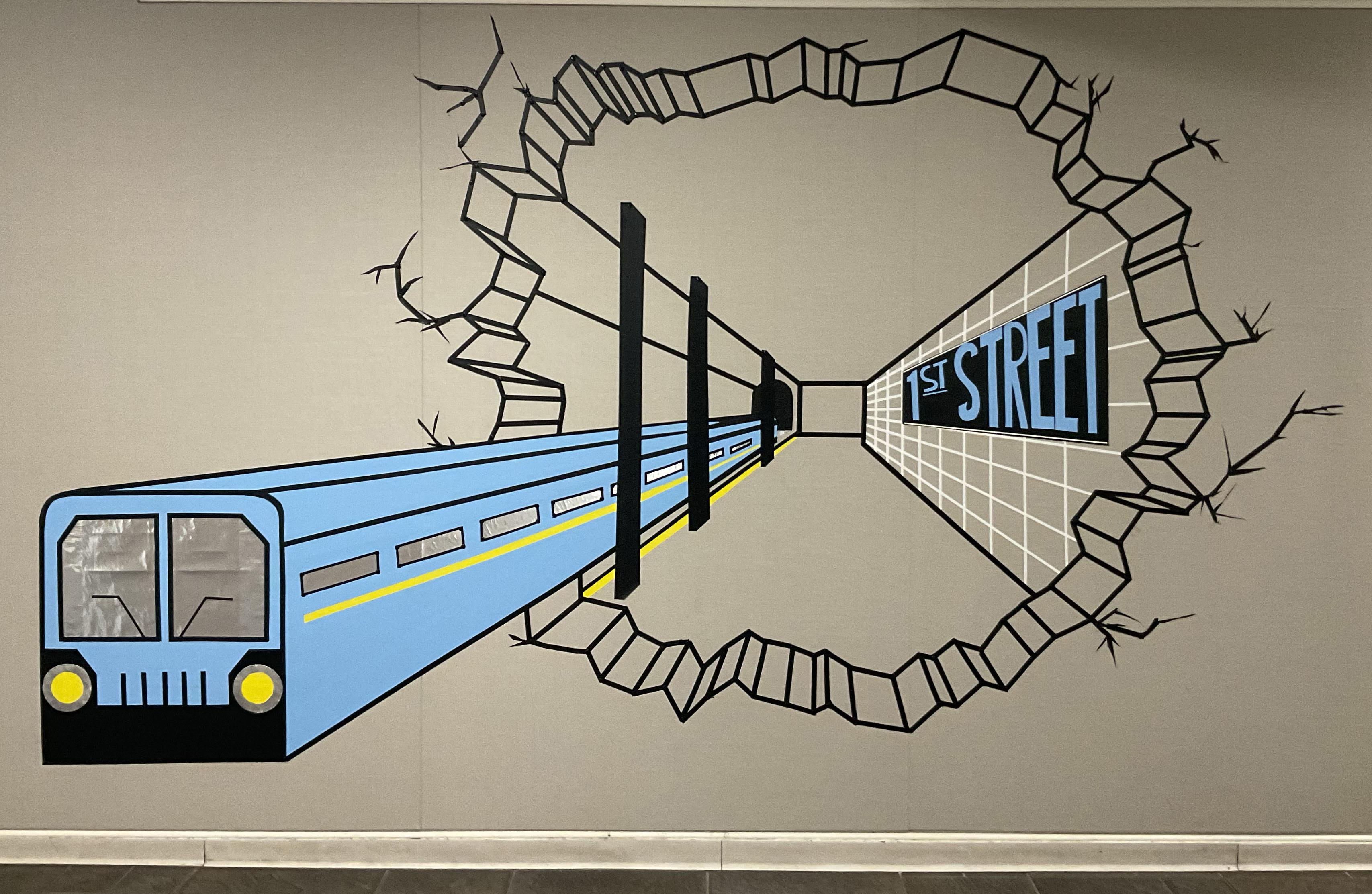To Be Yourself
Be smart, They are told, Be smart, To rid your woes, Not you, They say, You are already there, You know this, They exclaim, Then, They walk away, I try, To find my crowd, I fail at this, for sure,
For my answer is the same, And here I remain, Near the dirt with the plants I stay.
-Abigail K. Bashur ’30
Nolan Treadaway ’28
Oliver Hejna ’28
Aubrey Goldstein ’28
Rowan Kuick ’28
Sophia Ochs ’28
Joonkyu Shim ’32
“Eyes”
“Hairs “ by Sandra Cisneros inspired pieces
By Elle Maghsoudlou ’29
Everybody in our family has different eyes. My mom’s eyes are warm and brown, like chocolate. My eyes are like chestnuts. When they’re raw, they’re bitter. But when they’re soft, they’re sweet. Grandma’s eyes are small and sour, like a bad piece of candy.
My dad’s eyes on the other hand, they’ve got a look, one look of something you almost can’t grasp, you almost can’t see, one look that comes every so often with a sound of spirited laughter, that one look which can make you feel so sorry and leaves you speechless, but if you’re lucky, that same look will make you see stars, bright and shiny ones, dull and gloomy ones, slow and scared ones. Stars of all kinds and looks of sentiment all set in a pair of sights.
“Eyes”
By Naz Johnston ’29
Everybody in our family has different eyes. My dad’s eyes are as blue as ice, speckled with green like shards of prismatine. My sister’s eyes are just like mine, brown, dark, and rich as chocolate. Bolo, my dog, his eyes are incredibly human, as light as wood planks, and deeply saturated.
But my mom’s eyes, my mom’s eyes, like little bronze stars shining from above, like beacons of care that reach far into the ocean and guide me to shore, like a safety net of love and trust because she knows what you need always, and when one of you is sad, the other cares, and when both of you are sad, you hold each other and stay in that infinite embrace for as long as you need, when tears are pouring and you both need someone. Me, my mom, and her beautiful bronze eyes.
“Voices”
By Tej Bakaya ’29
Everyone in my family has a different voice. My brother’s voice is high and silly, like a cartoon character always ready to tell a joke. My mom’s voice is like a chihuahua, sometimes calm, sometimes angry, sometimes happy. My voice is like a perfectly off-tune song, occasionally high, sometimes low, most times in the middle. And my aunt’s voice is multi-accented, like a book with different languages.
My dad’s voice, however, is like a playlist with many different genres. When angry, his voice is fierce and strong, a lion’s roar. When he is calm, he is as cool as a summer breeze, and when he is happy, he has the enthusiasm of a child’s birthday party, joyful and light, he makes you happy, even if you are not, he keeps you calm, even if you are not, he is a beacon in a dark city.
Georgia Aitken ’28, Oliver Hejna ’28, and Eliza Bishop ’28
Aubrey Goldstein ’28, Tamara Regular ’28, Stella Kilcullen ’28, and Madison Lee ’28
Graham Killebrew
Crime and punishment were much more brutal in old colonial Virginia than today. They were not able to use our methods of punishment, so they used humiliation in place of prisons. In the Virginia colonial cities of Jamestown and Williamsburg, punishment for crimes was humiliating and public because it needed to function as a deterrent and keep law and order due to the lack of resources provided to prisons. They believed that making all of the punishments public would let everybody else see what happens when you break a law and get caught. Most importantly, it embarrassed the criminal and could make them an outcast because everybody would remember what the offender did and the punishment that followed.
Prisons were not viable in the old colonial cities of Virginia because money for their resources came out of citizens’ pockets, and they valued their own lives more than criminals. The prisons were terrible because prisoners needed warmth, food, water, and shelter, but the money for those resources had to come from innocent people who valued their own needs more than a stranger that had committed a crime.1 People didn’t want to use the money they would have spent on themselves just so a convict could be more comfortable; however, this could result in death for some or most inmates. Since the people that paid for the prisoners got to choose how much food, water, and warmth each of them got, most inmates had to bribe people on the outside to keep them alive with enough resources, and the ones that didn’t have the money would die of neglect.2 Since no one on the outside was paying for the inmates’ needs, the convicts bribed people to pay for their necessities, all so they could pay them back when they got out. When prisons became overcrowded, the money for resources increased, and taxpayers did not want to make a convicted life more important than their own.3 This means that jail time for criminals wasn’t a viable option because they didn’t have the resources to provide free food and shelter for everyone who committed a crime. There had to be money coming from somewhere to pay for the resources prisoners needed, and that place was taxpayers’ pockets. When they found out what they were paying for, they immediately refused to pay anymore because they valued their lives and their families’ lives more than criminals. This led to prisons not being a viable option and made the government resort to much harsher, more brutal, and more permanent tactics.
The government found using public shame for the crimes committed was the best way to humiliate and punish the criminal. They invented the scarlet letter, which would hold someone’s head in an uncomfortable position to publicly shame them. Everybody would gather around to shame the convict, holding them for hours, even days, without letting them move until they were free to go.4 This was an easy way to publicly humiliate the criminal because, for the rest of their lives, everyone in the community would see them as a convict. The community would often call people who committed crimes sinners. One of the common shaming punishments was forcing them to sit in the stocks in public view. This was one of the mildest punishments for warnings and fines, but bystanders and citizens were also allowed
1 Jim Cox, “Colonial Crimes and Punishments” [Colonial Crimes and Punishments], Colonial Crimes and Punishments, accessed November 2, 2023, https://research.colonialwilliamsburg.org/Foundation/journal/spring03/branks.cfm.
2 James Cox, “Bilboes, Brands, and Branks Colonial Crimes and Punishments” [Bilboes, Brands, and Branks Colonial Crimes and Punishments], Colonial Williamsburg, accessed November 15, 2023, https://research.colonialwilliamsburg.org/ Foundation/journal/spring03/branks.cfm#:~:text=Colonial%20 practice%20took%20the%20matter,way%20back%20to%20 the%20flock
3 Cox, “Colonial Crimes,” Colonial Crimes and Punishments.
4 Cox, “Bilboes, Brands,” Colonial Williamsburg.
to throw garbage at them.5 This was extremely effective because they didn’t have to hurt you or do anything permanent, but it encouraged regular citizens to treat you like you weren’t even human. Humiliation was used as the most useful punishment to compel people to never commit a crime again.6 These methods would scar lawbreakers for the rest of their lives and make them an outcast to everyone who remembered the time that they were humiliated.
Another method of shaming involved branding letters directly on the skin to leave scars for everyone to see, labeling them as convicts. Burglars were punished by branding a capital B on the right hand for the first burglary and again on the left for the second burglary. If either were committed on the Lord’s Day (Sunday), the brand would go on his forehead.7 This was an easy method because it would permanently scar the burglar. For the rest of their lives, they would have to live either trying to hide it so people would accept them and interact with them, or they would have to just become an outcast in society since no one wanted to be around a burglar. They would brand an M on you for manslaughter, a T if you were a thief, and an F for forgery.8 This also made others distrustful from the moment they saw the branded letter. Cutting people’s ears off was another form of disfigurement to permanently remind them and others of their behavior. They put criminals in headlocks and nailed their ears to the board behind them. The only way to free their ears from the nails when they were allowed to leave was to either rip them off or get someone to cut off their ears. Crowds would gather to watch things like this.9 If bystanders couldn’t participate in the humiliation of the criminal, the second best thing they could do is gather around and watch this brutal torture. The citizens thought of this as a source of entertainment even though it was so violent. They were taught to help shame the person even more, as if getting their ears nailed to a board wasn’t enough. The fear of these permanent torture methods scared many into abiding by the rules and laws.
For a long time in old colonial Virginia, the death penalty was used as the most extreme of the four main punishments. Still, the death penalty wasn’t of much help for long because of a rule that let criminals avoid it by just reciting a line from the Bible. Public hangings were completely normal and a punishment that they turned to often because it would be humiliating for the family of the accused, and the citizens would never have to worry about that person ever committing another crime.10 If a public hanging could accomplish humiliating a person’s family and other citizens could also see the lifeless body dangling from the rope every day until it’s taken down, it could also deter others from committing a crime because they would be aware of the consequences. It wasn’t as useful as time went on because when word spread of a way to get out of the death penalty by reciting a passage from the Bible, everyone started using it. Since the most common death penalty was being hung, they called this strategy “the neck verse.”11 There was a rule put in place early on that if a person read a passage from the Bible about God wanting them to have a second chance, the judge would have to let them live. This wasn’t a bad thing for a while since not many people could read. However, soon more people learned how to
5 Cox, “Bilboes, Brands,” Colonial Williamsburg.
6 Cox, “Colonial Crimes,” Colonial Crimes and Punishments.
7 Natasha Frost, “Was the Colonies’ First Death Penalty Handed to a Mutineer or Spy?” [Was the Colonies’ First Death Penalty Handed to a Mutineer or Spy?], HISTORY, accessed August 24, 2018, https://www.history.com/news/death-penalty-jamestown-virginia-colony.
8 Natasha Frost, “Was the Colonies’ First Death Penalty Handed to a Mutineer or Spy?” [Was the Colonies’ First Death Penalty Handed to a Mutineer or Spy?], HISTORY, accessed August 24, 2018, https://www.history.com/news/death-penalty-jamestown-virginia-colony.
9 Cox, “Bilboes, Brands,” Colonial Williamsburg.
10 Frost, “Was the Colonies,’” HISTORY.
11 Cox, “Bilboes, Brands,” Colonial Williamsburg.
read, and even the ones that couldn’t were able to memorize the words of “the neck verse.” Eventually, they stopped using the death penalty for robbery, burglary, and sodomy. The only crime that could still be punished by the death penalty was murder.12 When the death penalty could not be used as much as it was previously, they had to rely even more on permanent scars like branding and public shame.
The four main punishments used to be much harsher and more brutal than any other punishments that we have today. They could use severe torture for small crimes if they thought it would be appropriate. They also tailored their punishments to fit the crime that was committed no matter how painful or cruel they were. The four main types of punishments used were public shame, fines, physical chastisement, and death.13 Any of these four punishments could be used on you if they thought it was the best option for the crime you committed. If it was an uncommon crime, they tried to make the punishment similar to the crime committed. The punishments were brutal in terms of humiliation and modern ways of torture.14 Even though it wasn’t one of the main punishments, it could fall under the category of physical chastisement. The death penalties used were burnings, hangings, and crushing people to death.15 The reason these methods were used was because they wanted everything to be public and painful for the convict. They would make the punishment fit the crime, but to an extreme level, so nobody missed the point and everyone understood what rule or law was broken.16 If the punishments fit the crimes that were committed, the person being punished would have a better understanding of what they did wrong and hopefully not make the same mistake in the future. Punishments were much harsher, more brutal, and humiliating back in old colonial Virginia. The reason the colonists made punishments this way was because it was vital that the lawbreaker would learn from what they did wrong and never do it again. There was also an easy way to punish them for the rest of their lives with something permanent like branding, or something so humiliating that no one would ever forget it. This would also act as a deterrent to let everybody watching know what would happen if they got caught in the act of a crime. The magistrates were happy when they heard public confessions of guilt
12 Lynch, “Colonial Williamsburg,” Cruel and Unusual Prisons and Prison Reform.
13 Jack Lynch, “Colonial Williamsburg” [Colonial Williamsburg], Cruel and Unusual Prisons and Prison Reform, last modified June 2011, accessed November 12, 2023, https://research. colonialwilliamsburg.org/Foundation/journal/Summer11/prison.cfm.
14 Peter Inker, ed., “Crime and Punishment…and Human Rights” [Crime and Punishment…and Human Rights], Colonial Williamsburg, last modified December 9, 2021, accessed November 2, 2023, https://www.colonialwilliamsburg.org/learn/ living-history/crime-and-punishment-and-human-rights/.
15 Cox, “Colonial Crimes,” Colonial Crimes and Punishments.
16 Cox, “Colonial Crimes,” Colonial Crimes and Punishments.
because they knew the punishment was working.17 They were satisfied when the criminal was suffering and confessing to try to get out of the punishment, and this helped them know how effective different penalties were.
Bibliography
Carter, Robert. Letterbooks. Accessed January 7, 2024. https://digitalcollections.colonialwilliamsburg.org/ CS.aspx?VP3=SearchResult&VBID=2RERI3ZAIM4F &PN=19&IID=2RERYDM9Z2.
Cox, James. “Bilboes, Brands, and Branks Colonial Crimes and Punishments” [Bilboes, Brands, and Branks Colonial Crimes and Punishments]. Colonial Williamsburg. Accessed November 15, 2023. https://research. colonialwilliamsburg.org/Foundation/journal/spring03/ branks.cfm#:~:text=Colonial%20practice%20took%20 the%20matter,way%20back%20to%20the%20flock.
Cox, Jim. “Colonial Crimes and Punishments” [Colonial Crimes and Punishments]. Colonial Crimes and Punishments. Accessed November 2, 2023. https://research.colonialwilliamsburg. org/Foundation/journal/spring03/branks.cfm.
Crime and Punishment. Vol. 1 of Crime and Punishment https://www.google.com/books/edition/Crime_And_ Punishment/4Vd0DwAAQBAJ?hl=en&gbpv=1&dq= crime+and+punishment&printsec=frontcover.
Frost, Natasha. “Was the Colonies’ First Death Penalty Handed to a Mutineer or Spy?” [Was the Colonies’ First Death Penalty Handed to a Mutineer or Spy?] HISTORY. Accessed August 24, 2018. https://www.history.com/news/death-penaltyjamestown-virginia-colony.
Inker, Peter, ed. “Crime and Punishment…and Human Rights” [Crime and Punishment…and Human Rights]. Colonial Williamsburg. Last modified December 9, 2021. Accessed November 2, 2023. https://www.colonialwilliamsburg.org/ learn/living-history/crime-and-punishment-and-humanrights/.
Lynch, Jack. “Colonial Williamsburg” [Colonial Williamsburg]. Cruel and Unusual Prisons and Prison Reform. Last modified June 2011. Accessed November 12, 2023.
Turnpike, Sherman, ed. Colonial America. Vol. 7 of Colonial America
17 Cox, “Bilboes, Brands,” Colonial Williamsburg.
The Unknown Influence the Navigation Acts Had on the Colonists and the American Revolution
Agatha Greenberg ’28
The sound of fireworks and the smell of the burgers being grilled are things countless Americans look forward to every summer. Everyone knows the Fourth of July celebrates the United States’ independence from Britain in 1776. However, what many aren’t aware of is the reason the colonials wanted their own government. When the House of Burgesses met up in Williamsburg, they complained about the taxes that England was unfairly forcing upon them. As a result, they wanted to suppress this inequality and fight back against Parliament. An example of this is the renowned story of the Boston Tea Party, a protest against the newly instituted Tea Act of 1773. But that wasn’t the first time the colonists disapproved of these statutes. The United Kingdom has been demanding money by passing unfair laws since Jamestown was founded. Not only is this legislation arbitrary, but some of it could even be considered illegal. England didn’t see a problem with this because they thought they could do whatever they wanted with their power. They were using Mercantilism, a very popular British concept in the Early Modern period. And once people get a taste of power, they usually want more. That’s why the United Kingdom created the Navigation Acts: to increase their dominance while preventing the colonies from gaining any strength of their own. In due course, the colonists became resentful of the laws passed and the taxes they had to pay due to them.1 Mercantilism and the Navigation Acts greatly impacted American history; not only did it shape the economy but it also led to the revolution.
Mercantilism played an incredibly large role in Colonial America and was the backbone of the Navigation Acts. It is an extremely important British concept concerning Economics and is a “form of economic nationalism” because it was developed to affect the public economy when feudalism was replaced by nationalism. Mercantilism was incredibly important because it made way for many advances in the economy. It allowed for the development of manufacturing, agriculture, a powerful merchant marine, and a profitable harmony of trade by installing colonies that responded to a specific country and government intervention in matters of trade in order to accumulate wealth through gold, silver, and various resources by trading with many powerful nations. Additionally, Mercantilism was a practice the British government set in place to be able to intervene in commerce and establish colonies so that the country would increase its profits. It was a concept that stated that colonies would only be allowed to trade with their mother country. In England’s situation, this meant that the Thirteen Colonies would send over raw agricultural materials, and in response, England would send back finished luxury goods. The entire idea of Mercantilism is that a country makes more money by exporting more than they import. If England were to buy cheap resources from their colonies and send back expensive commodities, they would make a large profit. An added consequence is that it also helped many other aspects of the economy. This is why England used it.2 In reality, Mercantilism was responsible for the development of the American economy.3 Without Mercantilism, the colonies wouldn’t be able to get their feet off the ground. The support from Britain was the only way the colonies were able to survive because they helped
1 “1651 — Navigation Acts,” Stamp Act History, accessed December 6, 2023, http://www.stamp-act-history.com/timeline/27/
2 Mark Mayo Boatner, Encyclopedia of the American Revolution (New York: Stackpole Books, 1994), 700.
3 “Mercantilism,” American History, last modified 2023, https://americanhistory.abc-clio.com/Topics/Display/1183173?cid=41 &sid=1183173.
with shipping, expansion, and investment opportunities.4 When the colonists first landed, they had nothing. So they needed help from a developed European country like Britain. It was used because it was constantly guaranteed that money and goods would be traded, which was a stable and reliable way of increasing both economies.5 However, the colonies weren’t allowed to manufacture things due to English law and were forced to import every luxury item from Britain. This allowed Britain to obtain a profit because the colonies were paying them more for luxury goods than they were paying the colonies for agricultural goods. If the colonies were able to make their own items, Britain would lose out on this money. And after the English recession of 1620, the UK was keen on being profitable.6 Due to Mercantilism, colonists could not accumulate wealth or gain any “economic independence,” but the English prospered substantially.7
England thought it was okay to tax the colonies because they founded the “New Land” with the sole objective of amassing wealth. They believed that the Thirteen Colonies would supply the United Kingdom with many resources that would increase their profits during trade.8 This supported their Mercantilist ideals and would help Britain get back on their feet after their recent economic decline. When people came looking for the “New World,” they came looking for money and gold. North America, from the beginning, was only thought of as a place to find economic gain. That is why England felt no guilt when taxing the colonists. They figured that they should tax the place that is supposed to be providing them with lots of money.9 The thought was that it was a mutual understanding that Virginia was founded solely for wealth accumulation and written in their laws were mercantilist ideals.10 In fact, taxation was a part of the colonies before anyone even stepped foot on the foreign continent. Because noblemen invested in private investment companies, which were established by the royal charter, the colonies were able to produce many goods to ship back to England.11 Charter companies consisted of a group of wealthy landowners who financed the trips to the “New World” in hopes of receiving some profit in return. As well as money, they received benefits from the King himself. This is a perfect example of Mercantilism in a smaller frame. Similar to countries and their colonies, the nobles are giving the people boarding the ship a chance to start anew, but once they arrive the wealthy want something in return.12 This made sense, of course, in the 17th century. In the age of Mercantilism, Britain saw Colonial America as land that could be easily acquired and would provide them with many raw materials.13 England figured they could tax the colonies however much they wanted because the “New Land” was founded with promises of resources and profits in return for protection.
The Navigation Acts were legislation that supported mercantile values and were set in place to increase the dominance of Britain while restricting the colonies’ strength. Due to the recession of 1620 in England, British civilians decided to focus more on their policies of trade. They needed a strategy to increase their profits.14 It was quickly decided; Mercantilism was the answer. In order to
4 “Mercantilism.”
5 “Mercantilism.
6 “Mercantilism.”
7 “Mercantilism.”
8 Boatner, Encyclopedia of the American, 700.
9 U.S. Department of State, “The U.S. Economy: A Brief History (Outline of the U.S. Economy),” USEmbassy.gov, accessed November 1, 2023, https://usa.usembassy.de/etexts/oecon/chap3.htm.
10 U.S. Department of State, “The U.S.,” USEmbassy.gov. 11 “Mercantilism.”
12 U.S. Department of State, “The U.S.,” USEmbassy.gov. 13 “Mercantilism.”
14 “1651 — Navigation Acts,” Stamp Act History, accessed December 6, 2023, http://www.stamp-act-history.com/timeline/27/.
get their economy back on track, they concluded that their amount of imports must surpass their amount of exports.15 That is why they passed The Navigation Acts. They allowed Britain to be more in control of Colonial America because it didn’t allow America to trade with anyone but England. The Thirteen Colonies were loaded with valuable resources that were in demand in Europe. But because of the Navigation Acts, they were only allowed to trade with England. Not only did it put England in control and increase their profits, but it also limited the UK’s trade competition with other European countries and prevented any growth or success for the colonies in terms of trading.16 The British made sure the Navigation Acts prevented the colonies from receiving a large profit from their trade by enforcing many rules about shipping and trade, setting taxes on many items in order to acquire wealth as a European country, and limiting attempts at manufacturing because if the colonies had factories, they would not need any goods from England and the UK would no longer be exporting more than they were importing.17 Additionally, the Navigation Acts differentiated between the goods imported from other European countries and from English colonies in America, Asia, and Africa. It stated that goods from other European countries could ship their goods in British ships or the vessel of the country from which the products were from, but English colonies must ship resources on English ships only. If the “New Land” sent their crops on ships of different countries, England couldn’t control the price. And that was the only goal of the kingdom, to make money.18 One of the first Navigation Acts was passed in 1651 and it was called the “Navigation” Act because it was a law that regulated trade, or navigation. In this law, it emphasized that no foreign ships were allowed in Colonial ports from the 1650 ordinance and that British vessels must include a crew of 50% Englishmen. Not only was England limiting who the colonies were trading with, but they also created a law stating that only English ships could sail into colonial ports. This shows just how nervous the English are about their competition with other European countries. They are guarding colonial resources like it was gold. But in the 17th century these things could be considered just as valuable as gold because they were necessities. This exemplifies how the Navigation Acts were not only created to make a profit for the UK, but they were also set in place to preserve the British economy when the Netherlands were their biggest competition in the trading world. Although it is a relatively small country, it historically had a lot of dominance. And Holland dominated the trade in the 17th century, so they were a nation to look out for.19 The first great Navigation Act mentioned above was written in response specifically to the Dutch, but quickly grew into legislation aimed towards all of England’s rivals. The British didn’t want any other nations stealing their resources.20 However, the next Navigation Act of 1660 was more universal. It listed certain products that had to be shipped directly to England via English shipping before getting shipped to other foreign ports. All other goods could be sent directly. These goods included sugar, indigo, tobacco, rice, and molasses.21 And starting in 1664, English colonies
15 “1651 — Navigation,” Stamp Act History.
16 “Mercantilism,” American History, last modified 2023, https://americanhistory.abc-clio.com/Topics/Display/1183173?cid=41 &sid=1183173.
17 The Editors of Encyclopædia Britannica, “The Navigation,” Britannica.
18 The Editors of Encyclopædia Britannica, ed., “The Navigation Acts,” Britannica, last modified October 10, 2023, accessed November 9, 2023, https://www.britannica.com/event/Navigation-Acts.
19 “1651 — Navigation,” Stamp Act History.
20 The Editors of Encyclopædia Britannica, “The Navigation,” Britannica.
21 The Editors of Encyclopædia Britannica, “The Navigation,” Britannica.
had to get European goods from English ships exclusively.22 Following Navigation Acts a couple decades later stated:
Be it enacted, . . . that after the five and twentieth day of March, one thousand six hundred and ninety-eight, no goods or merchandises whatsoever shall be imported into, or exported out of, any colony or plantation . . . or shall be laden in, or carried from any one port or place in the said colonies or plantations to any other port or place in the same, the kingdom of England, dominion of Wales, or towns of Berwick upon Tweed,...23
As exemplified above, the rules about shipping and trade only got stricter over time as the threats towards England grew stronger. However, when the Navigation Acts started to limit the colonist’s rights to such a great extent, they started to get mad.
The Colonists, angered by this new legislation, were quick to retaliate. They became resentful of the laws passed in the Navigation Acts and the taxes they had to pay due to them.24 In the Magna Carta, it states that no taxation should take place without representation. The Thirteen Colonies had no one in Parliament speaking for them, and they found it unjust that England was demanding money from them regardless. They decided in the House of Burgesses that they were not going to sit still while England stripped their rights from them. Instead of acquiescing to the new statutes, they would put up a fight. Colonists were also upset at the new laws because they were not getting as good of a price for their products as they would receive from the Dutch. Keen on getting the best prices, the colonists tried to be noticed.25 And it worked. In 1651, recently after the first Navigation Act was passed, troops were sent down to the rebelling colonies of Virginia and Barbados. The colonies were upset at the new legislation. They didn’t want their profit limited because the English wanted more money.26 Although the protests were shut down, the colonists continued to smuggle goods and trade with Holland because there were no officials present to catch them.27 But, over time, the first Anglo-Dutch war in 1652 began because the English were angered that the Dutch were still trading with English colonies and ignoring the new legislation. In the end, the Dutch finally accepted the new laws. But over the next 100 years, the colonists continued to rebel against the unfair laws.28
The Navigation Acts were the first set of laws set in place of many that enacted unfair taxation upon the Thirteen Colonies. Most Americans were farmers and self-sufficient. They started to realize they didn’t need to rely on the British to ship them any overpriced goods. They began to make everything themselves.29 However, it didn’t start this way. Merchants were the first in the colonies to disapprove of the Mercantilist ways of Britain. They were the ones witnessing the Navigation Acts everyday as they negotiated for the goods that recently came off the ships. Although the merchants were not the first to realize how unfair these acts were, they were the first to come up with the idea of revolution.30 And the Navigation Acts were not the
22 The Editors of Encyclopædia Britannica, “The Navigation,” Britannica.
23 “Navigation Acts,” Digital History, accessed December 22, 2023, https://www.digitalhistory.uh.edu/disp_textbook.cfm?smtID=3&psid=4102.
24 “1651 — Navigation,” Stamp Act History.
25 “1651 — Navigation,” Stamp Act History
26 “1651 — Navigation,” Stamp Act History
27 “1651 — Navigation,” Stamp Act History
28 “1651 — Navigation,” Stamp Act History
29 U.S. Department of State, “The U.S.,” USEmbassy.gov.
30 Mark Mayo Boatner, Encyclopedia of the American Revolution (New York: Stackpole Books, 1994), 701.
only laws that restricted trade and increased taxes in the colonies. After events that took place in the 1760s, merchants were forced to choose where their loyalties would lie with the war on the horizon. Did it lie with the colonies, who were showing more and more signs of growing independence from European rule? Or did it lie with England, who was predicted to win and convince the merchants of this with conservative ideas?31
The impact the Navigation Acts had on Colonial America was immeasurable. Not only did they anger the colonists, but they were also part of the reason the Thirteen Colonies desired their own government. Mercantilism was a common concept in the 17th and 18th centuries, and this was the practice that led to the creation of the Navigation Acts. England thought it was okay to set in place as much legislation as they pleased because they believed that they could do whatever they wanted with their power. This is a common misconception from officials. They will do horrendous things in order to obtain more dominance. They believe that because they have superiority, they can do whatever they wish to those who don’t. In the case of Britain, the people making laws for the colonies were not elected by the colonists themselves. After the revolution, people in the United States voted for all their politicians, but that is not the case everywhere in the world. Is it fair for some countries to have laws made for them by legislators whom they did not choose? In the case of the “New Land,” when the colonists did not determine their lawmakers, the statesmen selfishly created statues instead of what was best for the majority of the population because they did not have to rely on the approval of the nation to get reappointed to their positions. Should people with this insensitivity and opportunism be creating regulation?
Bibliography
Boatner, Mark Mayo. Encyclopedia of the American Revolution. New York: Stackpole Books, 1994.
The Editors of Encyclopædia Britannica, ed. “The Navigation Acts.” Britannica. Last modified October 10, 2023. Accessed November 9, 2023. https://www.britannica.com/event/ Navigation-Acts.
This source is a web page with lots of historical information on it. I am using an article called The Navigation Acts. Britannica has been spreading information for over 250 years. They always use trusted sources and make sure to have correct information in their articles.
Koot, Christian J. “Smuggling in Early America.” Oxford Research Encyclopedia. Last modified January 4, 2016. Accessed December 10, 2023. https://oxfordre. com/americanhistory/americanhistory/view/10.1093/ acrefore/9780199329175.001.0001/acrefore9780199329175-e-263#:~:text=Smuggling%20in%20 colonial%20British%20America,limited%20where%20 one%20could%20trade.
“Mercantilism.” American History. Last modified 2023. https://americanhistory.abc-clio.com/Topics/ Display/1183173?cid=41&sid=1183173.
This source is a database that specializes in American History. I am using a source about Mercantilism. This source has many great articles that are useful to my topic. Also, it has only factual information because it uses trusted sources to get their information.
“Navigation Acts.” American History. Last modified 2023. https:// americanhistory.abc-clio.com/Search/Display/298791.
“Navigation Acts.” Digital History. Accessed December 22, 2023. https://www.digitalhistory.uh.edu/disp_textbook. cfm?smtID=3&psid=4102.
This website has primary sources. This primary source is a copy of all the Navigation Acts from 17th-century England.
Seavoy, Ronald E. An Economic History of the United States: From 1607 to the Present. London, England: Routledge, 2006. This book is about the economy from 1607 to the present. I am using the information about from 1607 until the end of the American Revolution. The author, Ronald E. Seavoy, is a professor emeritus at Bowling Greens State University in Bowling Greens, Ohio. He has written many other books as well.
Sherman, Roger. Letter, “Alexander Hamilton’s Financial Program,” 1790. Accessed November 3, 2023. https://www.digitalhistory. uh.edu/disp_textbook.cfm?smtID=3&psid=268.
This is a letter authored by Roger Sherman to Governor Samuel Huntington. Roger Sherman was a congressman from Connecticut who wrote the Connecticut Compromise at the Constitutional Convention. Governor Samuel Huntington was the governor of Connecticut from 1786 until his death in 1796. He was also the former president of the Continental Congress from 1779-1781 and a signer of the Declaration of Independence. Neither of them were founding fathers but they were both very significant.
Simpson, Stephen D. “Understanding Finance vs. Economics: What’s the Difference?” Investopedia. Last modified September 13, 2023. Accessed October 30, 2023. https://www.investopedia. com/articles/economics/11/difference-between-finance-andeconomics.asp.
“1651 — Navigation Acts.” Stamp Act History. Accessed December 6, 2023. http://www.stamp-act-history.com/timeline/27/.
Trevino, Marcella Bush. “Labor and Employment in the Colonial and Revolutionary Era.” In Labor and Employment in the Colonial and Revolutionary Era. N.p.: Facts On File, 2016. http://online.infobase.com/Auth/ Index?aid=17980&itemid=WE52&articleId=396927. Infobase Learning is a database with lots of information. I am using this part of the database for American history. The article I am taking notes from is about Labor and Employment. This is very important for the economy because changes in employment affect the economy.
University of Minnesota. “Explaining Economic Sectors.” Carlson School of Management. Accessed November 1, 2023. https://carlsonschool.umn.edu/degrees/public-and-nonprofitmanagement/explaining-economic-sectors.
U.S. Department of State. “The U.S. Economy: A Brief History (Outline of the U.S. Economy).” USEmbassy.gov. Accessed November 1, 2023. https://usa.usembassy.de/etexts/oecon/ chap3.htm.
,
.
Aubrey Goldstein ’28
Kamsiyo Nwabueze-Pryor ’28
Lake Stanford ’28
Joonkyu Shim ’28
Madison Lee ’28
Rowan Kuick ’28
Tamara Regular ’28
The 18th century represents a dark period in American history when the institution of slavery thrived, and the exploitation of enslaved Black women flourished. The cruel realities endured by Black women during this time were not only a consequence of their enslavement but were also magnified by both their race and gender, perpetuating a cycle of inequality and suffering. Beyond the physical captivity, these women endured a complex oppression that not only involved grueling labor but also made them victims of sexual violence. The harsh reality of this oppression becomes evident when one reflects on how the clothing worn by enslaved Black women served as a physical manifestation of their fragile existence. The clothes they wore were not just rags or pieces of fabric used to cover their bodies; they represented a system that dehumanized and abused them. During the 18th century, an enslaved Black woman’s gender and race primarily affected the way she lived and thrived in an illiberal society. Understanding the exploitation of enslaved Black women during the American colonial era requires a closer look into the sweat of their daily labor, the sexual abuse they endured, and the clothing they wore that bound them to such a harsh life.
However, before any discussion regarding the exploitation of enslaved Black women is made, one must first consider that the racial stereotypes and discriminatory practices against enslaved Black women during the colonial era were the underlying causes of their mistreatment. The widely accepted racist ideas of Antebellum white slaveholders led them to think of their enslaved people as both biologically and culturally inferior. Due to their superiority complex, slaveholders often whipped and physically mistreated enslaved women under their supervision.1 In addition to the racist beliefs they held, slaveholders also created various stereotypes about enslaved black women. One such popular stereotype was the “Mammy” caricature. The mammy caricature depicted enslaved Black women as enjoying their servitude, being physically unattractive, and only fit to be domestic workers.2
In contrast to the mammy caricature, slave owners also created a more promiscuous stereotype of enslaved Black women: the “Jezebel” figure. The Jezebel caricature was used during slavery to justify a slaveholder’s objectification and sexual exploitation of enslaved Black women.3 The Mammy and Jezebel caricatures, along with various other derogatory stereotypes that plagued enslaved Black women, heavily influenced how the rest of the white population during the Antebellum period perceived and treated Black women. Sadly, these caricatures endured for decades even after colonial times. Even today, Black women are oftentimes stereotyped as being hypersexual, unattractive, or possessing some other demeaning attribute. With racial stereotyping forming the underlying cause of discrimination against Black women, white slave masters subjected Black women to harsh labor conditions. Enslaved women were often forced to work in the fields from sunrise to sunset where they endured physical and emotional abuse. On larger farms and plantations, for example, women were forced to perform tasks like hoeing and ditching entire fields. These were the most exhausting and uninteresting forms of fieldwork.4 Slaveholders also held enslaved women accountable for
1 LDHI, “Hidden Voices: Enslaved Women in the Lowcountry and U.S. South,” LDHI, accessed November 27, 2023, https://ldhi.library.cofc.edu/exhibits/show/hidden-voices/enslaved-womens-work.
2 LDHI, “Hidden Voices,” LDHI.
3 LDHI, “Hidden Voices,” LDHI.
4 Jennifer Hallam, “The Slave Experience: Men, Wom-
cleaning and tidying communal areas like stables and expected them to spread manure as a fertilizer.5 Moreover, slave owners frequently questioned how much time off enslaved women needed to adequately take care of their families and children. When not offered any downtime by their slaveholders, enslaved women had to bring their children with them to the fields and strap them to their backs as they worked tirelessly without any pay.6
Black women’s exploitation extended beyond the fields. In many instances, the labor performed by enslaved women was prolonged and complicated. For example, many enslaved women began to work for slaveholders at a very young age. There was little free time for enslaved women to rest, given that most women worked for their masters five to six days a week. This included keeping the owner’s homes clean, cooking food, and washing their clothes.7
In short, enslaved women were expected to work tirelessly, both in the fields and in the house. The slave masters did not care about these women’s well-being and exploited them for their free labor. Long days performing menial, exhausting tasks, sometimes in the hot, baking sun, was what many Black women had to endure. After working prolonged, hard days for the slaveholders, these women had to care for their own families, which was often a physical and mental challenge due to exhaustion and limited time availability. But if they did not work hard enough to meet the expectations of their enslaver, they would oftentimes be taken advantage of by being sexually or physically assaulted, as a form of punishment. Unfortunately, this possibility became a reality for many enslaved Black women.
Indeed, as the slave population in America grew larger, slaveholders began to consider enslaved Black women primarily as reproducers of a valuable labor force rather than merely a part of the labor force. The sexual exploitation of Black women extended from sexual gratification of their white slaveholders to include reproducing offspring that would expand their workforce. Though slave owners valued enslaved women as laborers, they were also well aware that female slaves could be used to successfully reproduce new labor (more children who would grow up to be slaves) by continuing their role as full-time mothers.8 This presented slaveholders with a dilemma because West African women usually had some prior agricultural experience (like growing tobacco and rice) which could be used to the slaveholders’ benefit. But these women also could be raped or otherwise made to have children, which would produce more slaves for the slave owner and ultimately make him richer.9
In 1756, Reverend Peter Foutain of Charles City County, Virginia, stated that Black females were “far more prolific than... white women.” This form of racial stereotyping made enslaved women extremely vulnerable to physical assault.10 Many white enslavers raped Black women for sexual pleasure, as well as for their ability to produce children who would become slaves and ultimately increase their wealth. Instead of perpetuating the stereotype that all enslaved Black women were unattractive and were only fit to be domestic workers, they now were feeding into the stereotype that they were promiscuous and desired sex. This form of physical exploitation was pervasive en & Gender,” Slavery and the Making of America, accessed November 27, 2023, https://www.thirteen.org/wnet/slavery/ experience/gender/history.html.
5 Emily West, Enslaved Women in America: From Colonial Times to Emancipation (Lanham: Rowman & Littlefield Publishers, 2017), 29
6 West, Enslaved Women, 28.
7 LDHI, “Hidden Voices,” LDHI.
8 West, Enslaved Women, 28.
9 West, Enslaved Women, 29
10 West, Enslaved Women, 31.
throughout the Antebellum South.
In addition to labor and sexual exploitation, clothing was another form of exploitation that enslaved Black women were forced to endure. While these women often knitted or otherwise made beautiful garments for white women and their children, the fabrics that enslaved Black women wore themselves offered minimal protection from the weather and had to be inexpensive and easy to make.11 Their clothing was so cheap in quality that it often disassembled or tore within weeks. As a result, enslaved women often borrowed clothing from one another or even stole clothing from the slave master’s house. They did this to give themselves or their families warm, sustainable garments, and sometimes, to blend into the free population.12 Enslavers also made enslaved women wear poor, rugged clothing to symbolize a Black woman’s low status and to cultivate racial stereotypes depicting Black women as inferior. Therefore, one reason why enslaved women wanted to steal white people’s clothes was because they wanted to appear as free Black people with increased status.
Despite being subjected to clothing exploitation, many enslaved women nevertheless tried to continue to be connected to their former culture by wearing West African garments. Enslaved women working in slaveholders’ homes were expected to cover their heads with lightweight white caps, which other members of the household also wore. However, to continue the West African tradition, many enslaved women also chose to wear brightly colored head wraps that surrounded their heads and were secured with knots and tuckings.13 They also sometimes wore Cowrie shells in their hair; shells were very expensive and far more valuable than money. These cowrie shells also appeared in spirit bundles as parts of clothing and jewelry, implying their use as amulets.
Black women not only wore these West African garments to remain connected with their former cultures, but they also wore the garments as a form of resistance against enslavement.14 Enslaved Black women despised their status as slaves but were able to feel proud about and connect to their former West African heritage when they wore their West African headdresses. Culturally significant garments like this made these Black women feel strong and empowered and signaled to the slaveholders that Black women shouldn’t be taken advantage of or misjudged just because of their torn and cut clothing.
During the 18th century, the exploitation of enslaved Black women through their gender and race greatly influenced the way they survived and flourished in a prejudiced society. Enslaved women were exploited in numerous ways and were expected to address the needs of others to the detriment of caring for themselves and their families. They worked extremely hard, both in the house and in the field, and did whatever they were commanded to do, withstanding both physical and emotional abuse. They were oftentimes raped through their shabby
11 Daina Ramey Berry and Deleso A. Alford, eds., Enslaved Women in America: An Encyclopedia enhanced credo edition ed. (Santa Barbara, CA: Greenwood, 2012), 34 and 35.
12 Katherine Gruber, ed., “Clothing and Adornment of Enslaved People in Virginia,” Encyclopedia Virginia, last modified December 7, 2020, accessed November 5, 2023, https:// encyclopediavirginia.org/entries/slave-clothing-and-adornmentin-virginia/.
13 Gruber, “Clothing and Adornment,” Encyclopedia Virginia.
14 Smithsonian and National Museum of African American History and Culture, “Cowrie Shells and Trade Power,” National Museum of African American History and Culture, accessed November 15, 2023, https://nmaahc.si.edu/cowrie-shells-and-trade-power#:~:text=Europeans%20in%20the%20 16th%20century,at%20their%20use%20as%20amulets.
clothing and were physically assaulted by their masters for punishment as a means to increase their profit. But still, an enslaved Black woman was able to overcome these acts of exploitation non-violently and create her own peace by wearing and displaying garments that were distinct to her West African culture. Given all that these enslaved women endured, we should respect and admire their ability to overcome such incredible hardships and ultimately produce future generations of beautiful, strong, educated, proud, and free Black women.
Bibliography
Berry, Daina Ramey, and Deleso A. Alford, eds. Enslaved Women in America: An Encyclopedia. Enhanced Credo edition ed. Santa Barbara, CA: Greenwood, 2012.
Gruber, Katherine, ed. “Clothing and Adornment of Enslaved People in Virginia.” Encyclopedia Virginia. Last modified December 7, 2020. Accessed November 5, 2023. https:// encyclopediavirginia.org/entries/slave-clothing-andadornment-in-virginia/.
Hallam, Jennifer. “The Slave Experience: Men, Women & Gender.” Slavery and the Making of America. Accessed November 27, 2023. https://www.thirteen.org/wnet/slavery/experience/ gender/history.html.
LDHI. “Hidden Voices: Enslaved Women in the Lowcountry and U.S. South.” LDHI. Accessed November 27, 2023. https:// ldhi.library.cofc.edu/exhibits/show/hidden-voices/enslavedwomens-work.
Smithsonian, and National Museum of African American History and Culture. “Cowrie Shells and Trade Power.” National Museum of African American History and Culture. Accessed November 15, 2023. https://nmaahc.si.edu/cowrie-shellsand-trade-power#:~:text=Europeans%20in%20the%20 16th%20century,at%20their%20use%20as%20amulets.
West, Emily. Enslaved Women in America: From Colonial Times to Emancipation. Lanham: Rowman & Littlefield Publishers, 2017.
Oliver Hejna ’28
Oliver Hejna ’28
Music is a common form of expression that has been used since the beginning of history. It is a beautiful way to express emotions, ideas, beliefs, and opinions. From pop to rap to heavy metal, there is a form of music for everyone. Often, different styles tend to combine and influence each other to create new styles, and every group of people in history has influenced each other’s music in many ways. Music is an irreplaceable part of a large amount of cultures, some of which were the colonists, Native Americans, and the enslaved population of Colonial America. They all benefited greatly from having music in their lives, and the music of their culture developed thanks to the interaction between these groups. Music was important and influential for colonists, enslaved people, and Native Americans during the colonial era.
Music was undeniably influential for all people in the colonial era, but it was instrumental in keeping the spirits of enslaved people high by providing them with an outlet to express themselves in times when the quality of treatment from their slave owners was at a disgusting low. Music was exceptionally important to the progression of enslaved people’s history not only because of its use for emotional expression, but also for communicating with one another while working. This method of communication was called a field holler, which was sung by a single person at a time and was used to communicate across fields. Another example of this was referred to as work songs, which were sung by groups of enslaved people working in fields to align their pace.1 This provided comfort and something to pass the time, and none of the workers could be too slow or too fast if they were all working in concert. Coming from a musically diverse background, the way African-American enslaved people sang their songs was difficult to describe in a proper musical score. Vocalizations were described as “odd turns made in the throat” by European observers, and irregular rhythmic patterns that were unheard of in European and English music made writing it down a challenge. The difficulty of recording the music on paper made it all the more unique and expressional.2 While listening to music that would have been sung in the fields by the enslaved people, lots of passion and spirit can be heard. In addition to most of the songs being call-and-response, whoops, woos, and hollers are interjected into the music.3 The emotion and passion of the music they were creating allowed them to express their thoughts where they otherwise couldn’t. The enslaved people sang about their working and living conditions and the way they were treated. For example, some lyrics like “We cook the meat, and you give us the skin,” and “We bake the bread, and you give us the crust,” and “We beat the corn, and you give us the husk” are indicative of their treatment. The lyrics describe if they were to cook and bake for their owners, they would get scraps left behind for a meal, or beating corn and only receiving the husk in return for their work.4 One thing that can be said about the music of the enslaved population was it was full of life. It was one of the few ways they could have fun and express themselves in such difficult times. Music held great importance to the enslaved people of the American Colonies because of the uniqueness, expressionism, and passion that is consistent throughout all examples that have been recorded. Another important part of the use of music for enslaved people was that it was crucial for the enslaved people who escaped
1 Mintz S and McNeil, “Music under Slavery,” Digital History, last modified 2018, accessed November 3, 2023, https://www.digitalhistory. uh.edu/era.cfm?eraID=6&smtid=6
2 S and McNeil, “Music under,” Digital History.
3 From Ear to Ear, performed by Kathaleen Getward-Holiday and Greg James, produced by Rex Ellis, Colonial Williamsburg Foundation, 2006, compact disc
4 From Ear to Ear.
slavery. Different songs had different meanings when it came to communication between the enslaved. A song called “Wade in the Water” would be used to tell enslaved people who were escaping to stay in the river to travel, in order to avoid search dogs. Lyrics such as “Wade in the water, children” and “Man went down to the river” indicated to the enslaved people that this really meant to travel by river.5 Another song called “Sweet Chariot” was sung by an enslaved person to let others know an escape was being done soon. Some example lyrics are “Swing low, sweet chariot, Coming for to carry me home…Tell all my friends I’m coming too.” Here, the enslaved sang about waiting for the escape opportunity to arrive, disguised as a chariot in the lyrics.6 The most notable and recognizable of these songs was “Follow the Drinking Gourd.” It contained a set of instructions with the information necessary for the enslaved people to find their way to a safe house. For example, the lyric “When the sun goes back and the first quail calls” is an indication of spring, when the quails start singing. “Follow the Drinking Gourd” itself is code for the big dipper constellation that guided the escaped enslaved individuals. Other lyrics such as “Now the river bed makes a mighty fine road” and “Dead trees to show you the way” are a signal of location, saying that the escapees should use the river as a path so the search dogs cannot find their scent.7 However, looking past the audible lyrics that had a hidden meaning in the songs, the alternative was field hollers. They were a key method of communication between enslaved workers, most commonly used in fields that seemed like random vocalizations, but had meanings that ranged from greeting each other to warning runaway enslaved people to communicating escape opportunities.8 Music was tremendously important to the freedom of the enslaved people because it helped them get vital information concerning escape.
Music served many purposes for the colonists. It was most notably used for entertainment and religious services, but was also used for social functions such as ceremonies and dancing. It was also used for theater and the military. Several other forms of music were ballads, carols, folk songs, hymns, and ribald songs.9 A very widespread use for music, especially among Anglicans, was for religion. Organs and choirs were slowly introduced to churches,10 but originally, most were not open to instrumental music in church, with only the use of psalms. However, because these psalms were not written down, the attendants of church had to go by ear, resulting in an unpleasant array of sounds. Soon, though, most churches had professional musicians teaching choirs and other musicians.11 After listening to an example of colonial music, it can be said that it was precise. Everyone singing has a clear role that they stick to, sounding much like church choirs today.12 Music traveled from England with the colonists. Along with being used in church, people sang for their own entertainment. Sometimes they sang madrigals, other times they sang along with lutes, virginals, violins, and trumpets.13 Music was essential to English and European churches, and people’s entertainment.
The interaction of these three groups of people caused their
5 Wade, “Signal Songs,” Discovery Theater.
6 Wade, “Signal Songs,” Discovery Theater.
7 Wade, “Signal Songs,” Discovery Theater.
8 Wade, “Signal Songs,” Discovery Theater.
9 McNeil and Mintz S, “Music under Colonial Era,” Digital History, last modified 2018, accessed November 3, 2023, https://digitalhistory.uh.edu/ era.cfm?eraID=2&smtid=6.
10 McNeil and S, “Music under,” Digital History.
11 Clint Twist, ed., Colonial America (Danbury, Conn.: Grolier Educational, 1998), 79.
12 McNeil and S, “Music under,” Digital History.
13 Twist, Colonial America, 79.
styles of music to combine and create new styles of music. For example, the arrival of Europeans in North America not only influenced the people, but it also influenced the music. The Native Americans had a strong culture that persevered through European influence. However, they did pick up some aspects of European music. One of these changes was that they adapted European musical forms and ways of keeping themes and time.14 While the European influence had a profound effect on the Native Americans, they, in return, also had some influence on the Europeans. Some Native Americans converted to Christianity, and became closely tied with music in French and Spanish churches where they were allowed to compose and perform church music.15 Some of the music that the Native Americans wrote is visible in church music today, while it may be subtle. Contrary to the indigenous music of the Native Americans, the music style brought from Africa by the enslaved people was heavily influenced by popular white music while still retaining its own unique qualities. This music style developed into what we now call gospel and blues.16 Music was not only important and influential to the people of the colonial era, but its influence from one type of music to another also created the music that is familiar in the present day. Music was of great value to the people in colonial America. It not only made the quality of life better, but the development of music as a whole benefitted from the interaction of these people. Music made otherwise unbearable lives much more tolerable, such as in the enslaved worker’s case. Music was an integral part of a culture that helped the Native Americans worship and practice their religion, and it became an irreplaceable part of Christian churches throughout the development of the colonies. In the present day, music plays a predominant role in the daily lives of most people, whether it is noticed or not. For example, most people notice the presence of music in advertisements only when there is a lack of it. For many, music is a job, a pastime, or a passion. It is important to appreciate the beautiful form of expression that has been carried on for all of human history. Often, as a society, we take for granted the gifts we have, and making sure those subjects are discussed makes it all worthwhile.
Bibliography
Apold, Juliette. “Appreciating Native American Music.” Library of Congress Blog. Last modified November 4, 2021. Accessed November 23, 2023. https://blogs.loc.gov/ nls-music-notes/2021/11/appreciating-native-americanmusic/#:~:text=Music%20serves%20as%20a%20 medium,%2C%20moral%2C%20and%20cultural%20events.
From Ear to Ear. Performed by Kathaleen Getward-Holiday and Greg James. Produced by Rex Ellis. Colonial Williamsburg Foundation, 2006, compact disc. This is my primary source.
Hildebrand, David K. “Early American Music.” Mount Vernon. Last modified September 18, 2001. Accessed November 23, 2023. https://www.mountvernon.org/library/digitalhistory/colonialmusic-institute/essays/early-american-music/.
While this source was written in 2001, it has updates, the most recent of which was in January of 2023.
Jennings, Matthew. “Music.” In Encyclopedia of Native American History, Volume 2. N.p.: Facts On File, 2011. http://online.infobase.com/
14 Matthew Jennings, “Music,” in Encyclopedia of Native American History, Volume 2 (n.p.: Facts On File, 2011), African-American History.
15 Jennings, “Music”.
16 Clint Twist, ed., Colonial America (Danbury, Conn.: Grolier Educational, 1998)
Auth/Index?aid=17980&itemid=WE01&articleId=359394.
This source is a book source that I found in a database. I hope that this source can help me illustrate some aspects of Native American Music. I also hope to show what aspects of European music the Native Americans adopted as well.
Mari, Adriana. “Follow the Drinking Gourd.” Genius. Accessed November 17, 2023. https://genius.com/Richie-havensfollow-the-drinking-gourd-lyrics.
This website will allow me to cite the lyrics of an old song originating in Colonial america.
McNeil, and Mintz S. “Music under Colonial Era.” Digital History. Last modified 2018. Accessed November 3, 2023. https:// digitalhistory.uh.edu/era.cfm?eraID=2&smtid=6.
The title of this source is what tabs the website is on- not the actual name. This source may help me describe what purpose music served for the colonists. I hope that in my body paragraphs, this source can help me illustrate how music was a big part of religion and a part of their social lives.
S, Mintz, and McNeil. “Music under Slavery.” Digital History. Last modified 2018. Accessed November 3, 2023. https://www. digitalhistory.uh.edu/era.cfm?eraID=6&smtid=6.
The title of this source is simply what tabs the website is on- it is not the actual name. I hope this source will help me describe what kind of music African American enslaved people sang, how they sang it, and for what purpose.
S, Mintz, and McNeil S. “Music under the First People.” Digital History. Last modified 2018. Accessed November 25, 2023. https:// www.digitalhistory.uh.edu/era.cfm?eraID=1&smtid=6.
Twist, Clint, ed. Colonial America. Danbury, Conn.: Grolier Educational, 1998.
This is a book source. I hope this source will help me answer what purpose music served to the enslaved and how white music affected the African culture that turned into slave songs.
Wade, Phyllis. “Signal Songs of the Underground Railroad with Dr. Phyllis Wade.” Discovery Theater. Accessed November 9, 2023. https://discoverytheater.org/forms/guides/2017/ feb/Signal%20Songs%20of%20the%20Underground%20 Railroad%20Learning%20Guide.pdf.
This is a PDF I found online- I wasn’t sure what kind of source it was meant to be listed as. I hope this source will help me describe different songs of the enslaved people, and how they helped people escape. Another thing that may be worth mentioning in my paper is how the songs were used by the underground railroad. The author completed a bachelor’s degree in voice at Roberts Wesleyan College.
Aubrey Goldstein ’28
Georgia Aitken ’28
What caused the law in the United States to look the way it does today? During colonial times, during the beginning of the revolution and the forming of a new nation, the trials and lives of many people had lasting impacts on the legal system. They caused changes that helped form and reform the legal system that is enforced today. Some of these trials affected how strict laws were, how harshly religious laws were enforced, and how all different people were treated both in the courthouse and in daily colonial life. Anne Hutchinson, Elizabeth Key, and Mary Dyer’s trials, as well as the Salem Witch trials and the Boston Massacre trials, were turning points in the legal system’s perception, enforcement, and impact in Colonial America.
The life and trial of Anne Hutchinson show how laws around religion were enforced and impacted law in Colonial America, changing the religious lives of many. Hutchinson was born in England in 1591 to a father who was a Puritan minister, who was sentenced to three years of house arrest for criticizing the church the year she was born.1 As a result of Hutchinson’s living situation, she likely had a lot of time to read and learn about Puritan laws and why her father was punished. Hutchinson went to Boston in 1634 where she, six weeks later, was given a membership to the Boston church. In this Puritan community, religion was very important and strict.2 In Boston, women were banned from church service participation, not allowed to be ministers, not allowed to vote on church issues, not allowed to talk in church, and were forced to enter the church through a separate door. Hutchinson started calling herself an interpreter of the Bible and influenced many people, mostly women, in women’s religious study groups.3 This is an example of how the Puritan religion was very important and influential in Boston and the laws concerning it affected Hutchinson and forced her to find a way around it. In 1636, seven ministers called her to a meeting where they demanded her to share her views on religion. Later, ministers identified 82 errors found in the meeting with Hutchinson. She was consequently banned from leading religious discussion groups. In November 1637, Hutchinson’s Trial began. There were 9 magistrates and 31 deputies of Massachusetts’ General Court.4 People were very against Hutchinson’s sharing of her ideas and took her to court for doing so. After many hours in court, Hutchinson was banished for not being a woman “fit” for society and was to be imprisoned until her banishment. 5 After the verdict was given, Hutchinson had to stay in her house for months until she, her family, and many others left for Rhode Island where they founded Portsmouth.6 This demonstrates how important laws about women’s roles in religion were, and how severe the results were. Plus, Hutchinson’s influence was demonstrated by how many people left for Rhode Island. Hutchinson’s trial gave her a chance to speak up to her whole colony and led to the beginning of a nation in which liberty would have a large and important meaning. It resulted in more religious freedom in Massachusetts and, eventually, helped guarantee religious freedom for all people.7 Anne Hutchinson’s trial changed how people felt about their laws and started the influence of liberty during the start of a new nation.
The life of Elizabeth Key shows how impactful slave law was 1 History.com, ed., “Anne Hutchinson,” History, last modified June 23, 2023, https://www.history.com/topics/colonial-america/Hutchinson-hutchinson.
2 Douglas O. Linder, “The Trial of Anne Hutchinson,” Famous Trials, https://www.famous-trials.com/hutchinson/2395-hutchinson-1637-account.
3 Linder, “The Trial,” Famous Trials.
4 Linder, “The Trial,” Famous Trials.
5 Linder, “The Trial,” Famous Trials.
6 History.com, “Anne Hutchinson,” History.
7 Linder, “The Trial,” Famous Trials.
and her trials were a major turning point for laws concerning enslaved people. Key sued for her freedom from slavery and won, becoming the first woman of African ancestry in the American colonies to do so. She won freedom for her sons and herself on July 21, 1656, in Virginia, suing on the fact that she was a baptized Christian and her father was an Englishman.8 Key’s trial made her a huge historical figure as the first woman to stand up against enslaved laws. Key was born in Virginia; her mother was a slave and her father, Thomas Key, was a white Englishman who was a burgess in Virginia’s colonial assembly.9 Her father arranged for her godfather, Humphrey Higginson, to have possession of her for nine years, requiring him to be her guardian, treat her like a family member, and free her at the age of 15. However, when her father died, Higginson sold her to Colonel John Mottram, where she had to serve nine years before being released. She was taken to Northumberland County, where Coan Hall, a plantation, was built.10 The legal system in Colonial America restricted what Key could do because of the laws about who was considered a slave. When her father died, laws about enslavement foiled his plans for her to live freely. Key’s lawsuit was one of the earliest lawsuits for freedom filed by someone of African ancestry in the American colonies. With her husband, William, as her lawyer, she used an English law stating that if a child had a free father, the child was free too, and Key was given freedom.11 However, the decision was soon overturned by the Virginia General Court. Key, though, wouldn’t back down and fought to be heard by the Virginia General Assembly, and Key, finally, won her freedom.12 This shows how much restraint the legal system had on the enslaved and how hard it was to pursue freedom as an enslaved person, even when her father was white and she was a baptized Christian. In 1662, as a result of Key’s case, a law was passed clarifying that a child of African descent’s freedom, or lack thereof, would be decided by the condition of their mother, rather than English law, which stated it was based on the condition of the father. This ensured that all children of women slaves could be kept for labor unless distinctly freed; additionally, this caused some fathers to not acknowledge their children as their own, supporting them, arranging for apprentices for them, or emancipating them.13 Key’s trial affected the lives of future enslaved people; although the results weren’t exactly helpful for the enslaved, she showed that freedom could be won legally.
The life and trial of Mary Dyer show how dangerous it was to have different religious beliefs. Dyer was born around the early 1600s in Somersetshire, England.14 In the summer of 1635, Dyer and her husband set sail for Boston where they settled into Puritan life. They arrived in Boston as the Puritans were beginning to divide. Dyer became good friends with Hutchinson and attended Hutchinson’s lectures frequently with her husband.15 This suggests that Dyer’s surroundings, including both people and location, likely had an impact on her religious ideas. Dyer moved back to England in 1652, where she lived for five years. During her time in England, she became a member of the Quakers, a religious group.16 The Quakers were a group that had different beliefs than the Puritans. They believed everyone was equal
8 History of American Women, “Elizabeth Key,” History of American Women, https://www.womenhistoryblog.com/2008/01/Key-key.html.
9 James Almeida and Steven J. Niven, “Elizabeth Key,” Enslaved. org, https://enslaved.org/fullStory/16-23-101311/.
10 “Elizabeth Key,” History of American Women.
11 “Elizabeth Key,” History of American Women.
12 Almeida and Niven, “Elizabeth Key,” Enslaved.org.
13 “Elizabeth Key,” History of American Women.
14 Encyclopedia Britannica, ed., “Mary Dyer,” Encyclopedia Britannica, last modified May 28, 2023, https://www.britannica.com/biography/ Dyer-Barrett-Dyer.
15 Douglas O. Linder, “Mary Dyer Trials,” Famous Trials, https:// famous-trials.com/dyer.
16 “Mary Dyer,” Encyclopedia Britannica.
and wouldn’t take government oaths.17 Dyer came back to the Colonies, arriving in New Haven in 1658, to protest inhumane punishment: three of Dyer’s friends had their ears cut off for being Quakers. She and a few other protesters were thrown in jail and, a few months later, were banished under an anti-Quaker law. When Dyer later returned to Boston from Newport to support her friends who were arrested for holding Quaker meetings, she was sent to jail for a third time.18 Dyer stuck with her beliefs, despite the dangers she knew came with them. In 1659, Dyer and others were called to the General Court where they were lectured and sentenced to their hanging.19 In October of 1659, Dyer, along with two others facing the same punishment, were walked to the gallows where there were many soldiers with guns, swords, pikes, and flags. After her two companions were hanged, she was reprieved and temporarily returned to her cell before being sent to Rhode Island. She went off to Shelter Island with her neighbors for a few months where she held more Quaker meetings. In late April of 1660, Dyer left for Boston where she was given a trial. In June of 1660, Dyer was, once again, sent to the gallows where she was hanged.20 This shows how strongly Dyer felt about her beliefs, returning to face the punishment of death to prove a point, and how strongly and passionately she felt about what religious rights should look like. In the years after Dyer’s trial, King Charles signed the Rhode Island Charter, which was the first document to give religious freedom.21 Dyer’s trial and life had a major lasting impact, starting the change that eventually gave people religious freedom in the colonies and, in the years to come, the United States.
The Salem witch trials resulted in the creation, and later termination, of a new court and new laws, reforming what trials looked like in Colonial America. The Witchcraft Act of 1604 deemed witchcraft a felony.22 Additionally, the punishment for being a witch, which was defined as consulting with a spirit, is death.23 The Court of Oyer and Terminer was set up by the new governor, William Phips, to hear the cases of those accused of witchcraft.24 The trials had such an impact on the courtrooms that a whole new court had to be assembled specifically for the Salem witch trials. ‘Spectral evidence’ was the term used for claims from the victim that they had been attacked or witnessed witchcraft caused by the accused, who Satan allegedly used to perform his evil work. Many of the accused confessed to witchcraft and were spared the court’s punishment, believing that God would punish them. Those who didn’t admit to witchcraft were forced to become martyrs to the court’s idea of justice. Many community members didn’t say anything to object to these events because they feared being punished or accused of witchcraft.25 This had a major impact: the Salem witch trials resulted in the death of twenty people.26 Those affected were so terrified of being found guilty that they would give a false confession and then live most of the rest of their lives in fear of God’s punishment. The trials made citizens so scared that they didn’t dare to object to
17 Linder, “Mary Dyer,” Famous Trials.
18 Linder, “Mary Dyer,” Famous Trials.
19 Linder, “Mary Dyer,” Famous Trials.
20 Linder, “Mary Dyer,” Famous Trials.
21 Linder, “Mary Dyer,” Famous Trials.
22 New England Law, “The True Legal Horror Story of the Salem Witch Trials,” New England Law Boston, https://www.nesl.edu/blog/detail/a-true-legal-horror-story-the-laws-leading-to-the-salem-witch-trials#:~:text=Without%20specific%20colony%20laws%2C%20the,form%20of%20 an%20unwilling%20person.
23 General Laws and Liberties of the Massachusetts Colony, image, 2023, https://americanhistory.abc-clio.com/Search/Display/293243.
24 Key Frost-Knappman, “Salem Witch Trials,” American History, last modified 2023, https://americanhistory.abc-clio.com/Search/Display/252793.
25 Wallenfeldt, “Salem Witch,” Encyclopedia Britannica.
26 Sarah Gilman, The Salem Witch Trials (n.p.: Enslow Publishing, 2017), 32.
these unjust rulings and the often made-up spectral evidence. When accusations of witchcraft reached Governor Phipps’ wife, he ended the Court of Oyer and Terminer, instead establishing a Superior Court of Judicature, which didn’t permit spectral evidence. In the following two months, only three of the 56 accused were found guilty; all were pardoned by Phipps and the trials ended around May 1693.27 The General Court, in 1702, officially announced that the trials weren’t lawful.28 The trials needed spectral evidence for people to be proven guilty, as there was very little other concrete evidence. The accusations were formed off of so little that, when spectral evidence was taken away, it was very hard to prove that anyone was a witch. The fact that spectral evidence was no longer allowed after the Salem witch trials and that the trials were later ruled unlawful shows how greatly the trials affected the development of law.
The Boston Massacre trials were another test of the legal system in Colonial America and greatly impacted the development of the legal system. The Boston Massacre took place on March 5, 1770, and was between British troops and a crowd of citizens in Boston, Massachusetts. The crowd threw snow, ice, and oyster shells at the troops.29 The Boston Massacre was a big event that, consequently, would need many trials to decide how people should be punished. John Adams agreed to defend the accused in the Boston Massacre trials despite how it could’ve risked his and his family’s safety, as well as his legal practice. He believed that, in a free country, no man accused of a crime should be denied the right to a fair trial.30 The technicality of the trials meant that few people were willing to defend those accused of crimes; Adams did it anyway, inforcing a belief that is still used today. The first Boston Massacre trial was Captain Preston’s. He had been in jail between the day of the Boston Massacre and October 24, 1770, but was found not guilty a week after his trial.31 The second trial was that of eight soldiers: Wemms, Hartigan, McCauley, White, Kilroy, Warren, Carroll, and Montgomery. Kilroy and Montgomery were the two found guilty of manslaughter, not murder; they called on the “benefit of the clergy,” an early English law that stated that secular courts didn’t have authority over clergymen. Kilroy and Montgomery were branded with an “M,” standing for manslaughter, which greatly affected their future daily lives.32 The trials permanently altered the lives of those accused, either leaving them with a physical mark that would make it extremely difficult to socially interact with others in the future, or taking away months of their life by keeping them in jail. Despite what had been expected and feared, the released trial verdicts didn’t cause any riots, saving Adam’s law practice.33 The Boston Massacre trials are often seen as one of the first tests of the legal system in the colonies and are believed to have laid the groundwork for the United States to be a nation that, rather than be ruled by the arbitrary choices of people in power, is ruled by laws.34 Though the verdicts of the trials may not have caused an immediate result, they had major long-term impacts on the future United States and how the country would be run.
Changes in the view, application, and effects of the legal
27 Wallenfeldt, “Salem Witch,” Encyclopedia Britannica.
28 Wallenfeldt, “Salem Witch,” Encyclopedia Britannica.
29 Jeff Wallenfeldt, “Boston Massacre,” Britannica, last modified October 17, 2023, https://www.britannica.com/event/Boston-Massacre.
30 PBS, “The Boston Massacre,” PBS, https://www.pbs.org/wgbh/ americanexperience/features/adams-boston-massacre/.
31 Massachusetts Historical Society, “Perspectives on the Boston Massacre,” Massachusetts Historical Society, https://www.masshist.org/features/massacre/trials.
32 Society, “Perspectives on the Boston,” Massachusetts Historical Society.
33 PBS, “The Boston,” PBS.
34 Brendan O’Shaughnessy, “The Rule of Law Prevails,” University of Notre Dame, last modified 2015, accessed November 30, 2023, https:// www.nd.edu/stories//the-rule-of-law-prevails/.
system were caused largely by the trials of Anne Hutchinson, Elizabeth Key, Mary Dyer, the Salem Witch trials, and the Boston Massacre trials. These trials show the struggles and successes of the legal system in Colonial America. They show times when laws help make people’s lives easier, and times when they cause them distress and difficult times. The legal system affected everyone, for better or worse. The trials of these people all had lasting effects on the development of law during the revolutionary times and the building of a new nation.
Bibliography
Almeida, James, and Steven J. Niven. “Elizabeth Key.” Enslaved.org. https://enslaved.org/fullStory/16-23-101311/.
Britannica, Encyclopedia, ed. “Mary Dyer.” Encyclopedia Britannica. Last modified May 28, 2023. https://www.britannica.com/ biography/Mary-Barrett-Dyer.
Frost-Knappman, Elizabeth. “Salem Witch Trials.” American History. Last modified 2023. https://americanhistory.abc-clio.com/ Search/Display/252793.
General Laws and Liberties of the Massachusetts Colony. Image. 2023. https://americanhistory.abc-clio.com/Search/Display/293243.
Gilman, Sarah. The Salem Witch Trials. N.p.: Enslow Publishing, 2017.
History.com, ed. “Anne Hutchinson.” History. Last modified June 23, 2023. https://www.history.com/topics/colonial-america/annehutchinson.
Law, New England. “The True Legal Horror Story of the Salem Witch Trials.” New England Law Boston. https://www.nesl.edu/ blog/detail/a-true-legal-horror-story-the-laws-leading-tothe-salem-witch-trials#:~:text=Without%20specific%20 colony%20laws%2C%20the,form%20of%20an%20unwilling%20person.
Linder, Douglas O. “Mary Dyer Trials.” Famous Trials. https://famoustrials.com/dyer.
“The Trial of Anne Hutchinson.” Famous Trials. https://www.famoustrials.com/hutchinson/2395-hutchinson-1637-account.
O’Shaughnessy, Brendan. “The Rule of Law Prevails.” University of Notre Dame. Last modified 2015. Accessed November 30, 2023. https://www.nd.edu/stories//the-rule-of-law-prevails/.
PBS. “The Boston Massacre.” PBS. https://www.pbs.org/wgbh/ americanexperience/features/adams-boston-massacre/.
Society, Massachusetts Historical. “Perspectives on the Boston Massacre.” Massachusetts Historical Society. https://www. masshist.org/features/massacre/trials.
Wallenfeldt, Jeff. “Boston Massacre.” Britannica. Last modified October 17, 2023. https://www.britannica.com/event/BostonMassacre.
“Salem Witch Trials.” Encyclopedia Britannica. Last modified October 31, 2023. https://www.britannica.com/event/Salem-witchtrials.
Women, History of American. “Elizabeth Key.” History of American Women. https://www.womenhistoryblog.com/2008/01/ elizabeth-key.html.
The Root of America Gabe Rosenthal ’28
The French and Indian War is known as the First World War. It was fought in the colonies but spread to political battles in Europe. After the French and Indian War, colonists and Native Americans began to kill each other over land in the Colonies. To put an end to it, Great Britain issued the Proclamation of 1763, which set borders on where colonists could settle. To add on, the War was so expensive that Great Britain was forced to find a way to make new money in the colonies. This resulted in Britain heavily taxing colonists without representation. With boundaries on where to stay and heavy taxes, the colonists got angry with Britain. This anger turned into rebellions and the start of the American Revolution. The French and Indian War ultimately led to the American Revolution because it started fights between Native Americans and the Colonists, set limits on where colonists could and couldn’t settle, stretched Britain’s economy, caused taxation without representation in the colonies, and eventually, started the first armed conflicts between the Patriots and British Soldiers.
The effects of the French and Indian War became the causes of the American Revolution. The French and Indian War was part of the long imperial struggle between Britain and France. When France expanded into the Ohio River Valley, major conflicts repeated between Britain and France leading to the official British declaration of war in 1756.1 While this was happening, the Native Americans who lived in the Ohio River Valley were sandwiched and forced to pick a side. They sided with the French, hence making it the French and Indian War. This decision caused the Native Americans to lose their land in a series of fights with colonists after the war ended. Boosted by the financing of future Prime Minister William Pitt, the British gained victories at Louisburg, Fort Frontenac, and the French-Canadian stronghold of Quebec.2 In 1763, after seven years of fighting, the British defeated the French for control of Canada and the eastern half of what became the United States. The War negatively affected Britain’s economy which caused British Officials to order colonists to help pay for the defense of the colonies through taxes.3 The taxes the French and Indian War, also known as the 7 Years’ War caused were relentless and only increased. Without representation, colonists began to get angry, and tension between Britain and the colonies rose. The French and Indian War also led to land disputes between colonists and Native Americans in the area. Pontiac’s Rebellion and the Proclamation of 1763 shortly followed.
Though the British gained France’s land in North America after defeating them in the War, conflicts over land began between the colonists and the Natives. After the French and Indian War, the tribes that once lived in French territory were now in British territory. These tribes thought the British authorities didn’t care for their needs as the French did. In 1763, Pontiac, the Ottawa Indian Chief, called on support from almost every tribe from Lake Superior to the lower Mississippi for a joint battle to expel the British from the land. Pontiac planned to have each tribe seize the nearest British fort and then help wipe out other settlements.4 In the spring of 1764, two British Armies were sent out; one into Pennsylvania and Ohio and the other to the Great Lakes. This was a success for the British that forced the Delawares and the
1 History.com Editors, “American Revolution,” History.com, last modified November 9, 2009, accessed November 8, 2023, https:// www.history.com/search?q=american%20revolution.
2 History.com Editors, “American Revolution,” History.com.
3 Michael Burgan, The Split History of the American Revolution: A Perspectives Flip Book (North Mankato, MN: Compass Point Books, a Capstone imprint, 2013), 6
4 History.com Editors, “American Revolution,” History.com.
Shawnees to sue for peace, breaking Pontiac’s alliance. Without help from the French and tribes in the West, Pontiac had no other option but to sign a treaty with the British in 1766. Pontiac was eventually murdered by a Peoria tribesman in 1769 and his death led to an immense war among the tribes.5 Pontiac’s rebellion caused Britain to get strongly involved to stop the wars between the colonists and the Indians. This led to the Proclamation of 1763. However, the colonists began to hate the power Britain had in the colonies.
Wars between the Colonists and the Indians damaged Britain’s economy because to Britain, the colonies were a source of raw materials, money, and land. If the Colonists and the Indians kept on killing each other, the colonies would die as well as a part of Britain’s economy. To stop the wars, Britain created laws setting limits on where colonists could settle. After Pontiac’s Rebellion, the British crown issued The Proclamation of 1763 which set limits on where colonists could settle in America. It was meant to appease the Native Americans and stop the attacks and rampages. The Proclamation created a boundary also known as the “Proclamation Line” to keep the colonists from encroaching on the Natives’ land. The proclamation declared that British colonists could settle anywhere between the Atlantic coast and the Appalachian Mountains, while land west of that belonged to the Native Americans.6 The Proclamation of 1763 was also the first measure that affected all thirteen colonies. The proclamation made buying land or making any agreements with natives forbidden and illegal. It also stated that only licensed traders were allowed to make deals with the Indians west of Appalachia. Furthermore, it established three new colonies: Quebec, West Florida, and East Florida; expanded Georgia’s southern border; and granted land to soldiers who fought in the 7 Years’ War.7 Along with the Proclamation, London proposed to station 10,000 soldiers in North America to enforce the new laws and asked for the colonists to cut down the cost through taxes. The Sugar Act of 1764, the Stamp Act of 1765, and the Townshend Duties of 1767 followed.8 The colonists were enraged with the soldiers, the new laws, and the power Great Britain was getting. Along with the increase in taxes, the tension between the colonies and Great Britain grew.
Great Britain began to tax the colonies heavily to accumulate new money for the colonies and pay off the cost of the French and Indian War; however, these taxes had no representation. The colonists preferred the English way of tax exemption within the empire, but Great Britain demanded that the colonists pay their taxes to the British Parliament. American leaders like Patrick Henry, John Dickinson, and Samuel Adams argued the theme of “No Taxation Without Representation.”9 The colonists began to despise taxation without representation and the continual rise in taxes. As the Americans fought against these taxes going back to the Motherland, conflicts began to occur. The Stamp Act, the Sugar Act, the Townshend Duties, and the Intolerable Acts, turned these small conflicts into large-scale rebellions from the colonies.
The Sugar Act was the first of many tax-related laws that came from the British Parliament. Passed in 1764, the Sugar Act taxed coffee, wine, sugar, and some types of cloth. This was the first law designed to make money for the defense of the colonies.10 The British
5 History.com Editors, “American Revolution,” History.com.
6 History.com Editors, “American Revolution,” History.com.
7 History.com Editors, “American Revolution,” History.com.
8 Bruce Tap, “Causes of the American Revolution,” in Encyclopedia of American Military History, Second Edition (n.p.: Facts On File, 2019), 1, American History.
9 Tap, “Causes of the American,” 1.
10 Michael Burgan, The Split History of the American Revolution: A Perspectives Flip Book (North Mankato, MN: Compass Point Books, a capstone imprint, 2013), 6.
only taxed the colonists for foreign goods until the Stamp Act. Issued in 1765, The Stamp Act became the first internal tax imposed directly on American Colonists by the British Parliament. The Act put a tax on all paper documents in the colonies, including newspapers, almanacs, pamphlets, broadsides, legal documents, and even dice and playing cards. Great Britain thought of the 13 Colonies as revenue sources; therefore, the British Empire used the Sugar Act and the Stamp Act to pay off the debt the French and Indian War caused.11 In 1767, the Townshend Acts were passed by the British Parliament which taxed goods imported to the colonies. American colonists saw the acts as an abuse of power because they had no representation in the Parliament. The British sent more troops to America to enforce the laws which raised greater tension between Great Britain and the colonies.12 The Sugar Act, Stamp Act, and Townshend Act all show how the French and Indian War was tied to heavy taxation in the colonies. As more of these acts got passed by the British Parliament, the Patriots began to fight back.
After the British Parliament passed the Stamp, Sugar, and Townshend Acts, the colonists were furious. The British were not only putting a tax on nearly everything imported and used in the colonies but also taxing them without representation. 1770, in Boston, an angry mob of colonists began to tease British soldiers. The soldiers fired at the mob and 5 colonists were killed. This shooting was later named the “Boston Massacre” by colonists.13 Three weeks later, Paul Revere illustrated “The Bloody Massacre in King-Street.” The drawing was an inaccurate representation of the event, showing that the British soldiers fired first. The propaganda spread quickly throughout the colonies. News that British Soldiers fired “with no reason” at a group of colonists only further enraged the Patriots.14 Three years later, in 1773, the British Parliament issued the Tea Act which increased the price of tea. The Tea Act put the nail in the coffin. A group of Patriots dressed and acted as American Indians and went to the Boston Harbor. The Patriots dumped around 46 tons of tea from three ships into the water. This rebellion was called the Boston Tea Party. The rebellion was widespread throughout the 13 colonies. Patriots from New York, Annapolis, and Maryland all dumped tea overboard.15 This joint rebellion from all 13 colonies didn’t pass lightly over Britain’s head.
The Boston Tea Party made King George III furious. In response, King George III punished the colonists by making them pay for the destroyed tea. The King also sent warships into Boston Harbor and forced the colonists to house the British Soldiers. The colonists called these “Intolerable Acts.”16 To show their anger and disapproval of the “Intolerable Acts,” the colonists held a Continental Congress meeting. On September 5, 1774, delegates from each of the thirteen colonies met at Carpenters’ Hall in Philadelphia, creating the First Continental Congress. Some of these delegates included John Adams, George Washington, and John Jay. At the meeting, the Congress issued a Declaration of Rights. This Declaration affirmed the colonies’ loyalty to Britain but disagreed with the British Parliament’s right to tax without representation. The Congress also passed the Articles of Association which declared that the colonies would stop importing goods from the British Isles in December of 1774 if the Intolerable
11 History.com Editors, “American Revolution,” History.com.
12 History.com Editors, “American Revolution,” History.com. w
13 Christi E. Parker, The American Revolution (Huntington Beach, CA: Teacher Created Materials, 2005), 5.
14 Paul Revere, “The Bloody Massacre in King-Street, March 5, 1770.” Boston, 1770. (Gilder Lehrman Collection)
15 Christi E. Parker, The American Revolution (Huntington Beach, CA: Teacher Created Materials, 2005), 6.
16 Parker, The American, 6
Acts were not repealed.17 However, Britain did not accept the rules of the Declaration and the American Revolution officially started on April 19, 1775.
Many factors central to the French and Indian War can be traced to the start of the American Revolution. The French and Indian War led to increased taxes in the colonies and the deterioration of the connection between the 13 Colonies and Great Britain, the “Motherland”. Without the French and Indian War, there would less likely have been an American Revolution. The American Revolution established the independence of the 13 Colonies from Britain and demonstrated that people could fight against colonial power for their rights. These ideas make up the foundation of the American Government today. A war over a River Valley can be seen as the root of America today.
Bibliography
Burgan, Michael. The Split History of the American Revolution: A Perspectives Flip Book. North Mankato, MN: Compass Point Books, a capstone imprint, 2013. In the book The Split History of the American Revolution: A Perspectives Flip Book
Colonial Williamsburg Foundation. “Roads To Revolution.” The American Revolution. Accessed November 6, 2023. https:// www.ouramericanrevolution.org/.
Gilje, Paul A. “Albany Congress.” In Encyclopedia of Revolutionary America. N.p.: Facts On File, 2010. online.infobase.com/ Auth/Index?aid=17980&itemid=WE52&articleId=501838.
“Treaty of Paris, 1763.” In Revolution and New Nation, Third Edition. N.p.: Facts On File, 2017. online.infobase.com/Auth/ Index?aid=17980&itemid=WE52&articleId=200941.
History.com Editors. “American Revolution.” History.com. Last modified November 9, 2009. Accessed November 8, 2023. https://www.history.com/search?q=american%20revolution.
Parker, Christi E. The American Revolution. Huntington Beach, CA: Teacher Created Materials, 2005.
Tap, Bruce. “Causes of the American Revolution.” Encyclopedia of American Military History, Second Edition. Facts On File, 2019. Accessed November 1, 2023. online.infobase.com/ Auth/Index?aid=17980&itemid=WE52&articleId=209499.
Paul Revere, “The Bloody Massacre in King-Street, March 5, 1770.” Boston, 1770.
(Gilder Lehrman Collection) https://www.gilderlehrman. org/history-resources/spotlight-primary-source/paul-reveresengraving-boston-massacre-1770
17 History.com Editors, “American Revolution,” History.com.
Artwork (top to bottom):
Giselle Shah ’28, Joonkyu Shim ’28, Lillian Auerbach ’28, Lily Herrigel ’28, Madison Lee ’28, Oliver Hejna ’28, and Sophia Ochs ’28
Zachary Tang ’31
Emily Bate ’31
Annabelle Coyle ’31
Alistair Townsend ’31
THUMP. I put the fifth bucket of grain down on the muddy grass, listening to each squelch as I made my way around the sheep pen, feeding my sheep and picking out my next meal. I walked back to my cave, picking up boughs that I had scavenged for my fire. Approaching the cave, I noticed an unfamiliar scent. Was it … human? I followed the source of the smell inside my cave, and when closing the door behind me, I determined that the smell was, in fact, human. I decided not to immediately confront them and to instead milk my sheep. I stoked my fire, the light enabling me to see the humans that had dared encroach on my home.
“Who are you? Where are you from? Why are you here, on my island? Are you pirates?” I asked, furious.
Only one dared to speak, explaining, ”We are from Troy. We were trying to get home, but our ship was blown off course. We serve under Agamémnon, Atreus’ son, famous for his conquests in war. We are lucky that we found this island; we are here asking for your help, or gifts, as it is polite to respect strangers. We are asking you, honor the gods’ wishes; if not, the gods will seek revenge on you.”
How dare these humans enter MY cave without my knowledge and then demand gifts?
I respond, telling them, “You are dumb to be telling me to listen to the gods! We Kyklopês do not listen to Zeus or any other gods; we are much stronger. I would not let you go unless I wanted to; I am not afraid. Now, tell me, where did you leave your ship? On the shore?”
“My ship? Poseidon, god of the sea, broke it on the rocks of your shore. My men and I are survivors of this tragedy,” the man said.
I did not respond, my hunger overwhelming me as I grabbed two of the tiny men in my hands, ridding them of their brains by bashing their heads against the floor of the cave. I then dismembered them and ate their limbs, the crunch of bones like the crunching of a carrot, chewing the strong, crispy cylinders so that they may enter my stomach. Each time I closed my jaw the strength of the bones pushed against my teeth, forcing me to gnaw on the bones until they were adequately crushed. Again and again, I savored the heavenly bones and the divine meat. As I ate, I sighed, thinking about how soon enough there were not going to be any more humans to eat and I would have to return to my usual meal of sheep. The shouting of the other humans as I ate their companions drew me out of my trance-like state of awe. When I was done with my exquisite dinner, I lay among my sheep and fell asleep. As I awoke in the morning, remembering my unwelcome visitors, I smiled at the prospect of another delicious meal. But first, I had to build a fire and milk my ewes. After completing all of my chores, I selected another two men to be my meal and then took the sheep out to graze. When I returned in the evening with the sheep and rams, I, once again, milked the ewes. The talkative man came forward when I was done with this task, offering me a bowl of dark liquid.
“Kyklops, have some wine to wash down the men. Try it, and see the kind of drink that we have brought. It is a gift if you are going to help us go home. But you are a crazy monster! Because of this, why would anyone else want to visit you?” he said.
I took the bowl, drinking all of the fine wine in one gulp. It was delectable, so I requested more.
“Give me more, please. Tell me, what is your name? I’ll give you a gift that will make you happy. Even Kyklopês know that wine-grapes are grown with rain from the heavens, but this is the drink of the gods,” I asked.
I drank three bowls hastily; it was the best wine I had ever had.
It was at that moment that the man chose to respond, saying, “Kyklops, you asked what my name was? Give me the gift you promised me and I’ll tell you. My name is Nohbdy, everyone calls me Nohbdy.”
Sophia Peguero ’31
“Nohbdy’s my meat, then, after I eat his friends. I’ll eat the others first. That’s a good gift,” I said coldly.
As I spoke, I felt my eye closing as I stumbled, wine and bits of men overflowing from my mouth. I fell asleep then, enveloped in a dream. I dreamt that I was a fish, calmly floating down a river, until suddenly …POP! A fisherman stabbed my eye with a spear. No, it wasn’t a fisherman. It was Nohbdy! I awoke, screaming, feeling the blood rush down my face, the heat of the spear in my eye, the humans underfoot as I stood up, pulling the spike out of my eye. I stumbled my way over to the entrance of my cave, opening the door and standing in front of it, waiting for the men to attempt to escape so I could prevent them from doing so. However, they were perhaps smarter than I thought, as none of them tried to escape. At dawn, I let my sheep exit the cave. All of a sudden, I heard Nohbdy’s voice coming from the sea.
“Kyklops! Will you eat my companions? Am I in your hands? How do you like the beating we gave you, you cannibal? Zeus and the gods have gotten their revenge on you,” the voice said.
I threw a rock in the direction of Nohbdy’s voice, realizing that he had lied to me about his ship being destroyed.
“Kyklops, if anyone ever asks you how you were blinded, tell them that Odysseus took your sight. Laërtês’ son, who lives in Ithaka,” the foolish liar proclaimed.
Ishan Desai-Green ’28

I woke up that morning as I would have any other. As I went through my daily routine of eating breakfast, pushing the rock door out of the way, and guiding my sheep outside into what usually would have been a luscious meadow illuminated by the rising sun if not for rain, I contemplated my life on this small yet beautiful island. I didn’t do this regularly; we Cyclopes are not well known for our brains. But I suppose the hazy rain, an uncommon occurrence on this usually bright island, brought my mind to a certain state of thinking. Life sure isn’t anything amazing here –I mean obviously I’m not going on any crazy adventures or something like that – but it is peaceful. The only thing I could think of complaining about would be my size, as the disadvantages that come with being the smallest Cyclops on the island vastly outweigh the advantages. On top of the constant bullying I receive from my brothers, I am also forced to live in the smallest cave closest to the shore. Usually, when I did use the very little brain power that I had to think, it always led to one question: what if I was bigger? I quickly shook the thought from my head as I had done every time before and returned to my daily tasks. Next, I needed to hurry and collect some food to eat for lunch. If I couldn’t get any before my brothers, I would be forced to either starve or sacrifice one of my sheep, which would mean I wouldn’t have access to a sufficient amount of milk until a new one was bred. I hurriedly walked farther down towards the shore, as that is usually where the wild boars graze during the day. On my way, however, I noticed some unusual movement near the coast out of the corner of my eye. Curiosity made my neck turn and my gaze instantly snapped away from my destination. As my eyes gained focus, I was shocked by what I saw. In the distance was a small boat laying on the beach, filled with beings I had only heard tales about from my brothers: humans. Forgetting my food, I immediately went and hid out of fear, scared for my life. Based on the stories I had heard from the other Cyclopes when I was young, humans were gruesome, merciless beasts that slaughtered Cyclopes for food. The scariest part about them, however, wasn’t their vicious behavior, but rather the fact that they had two eyes. According to my brothers, these eyes allowed the humans to shoot giant rays of light that killed anything in their path, especially Cyclopes. Wait, as I think back on what my brothers said, I realized their sarcasm. No being except the gods could possibly have an ability like that! Angered by my gullibility, I strolled back to my cave in a state of gloom, collecting my sheep along the way and leading them back inside. As I pushed the heavy boulder back into its place in front of the entryway, the question of whether or not my life would be different if I was bigger came rushing back to me. The thought of this made me even angrier; I was sick and tired of the constant bullying and teasing I was subjected to my entire life because I was the smallest. I turned around after securing the boulder in place and my anger immediately changed to a state of shock. Standing right before me were the same group of humans I had seen on the beach!
Gemma Sponzilli ’31
The day was like any other. It was another mundane evening as my sheep and I meandered across the grassy fields of my island, the flock munching on the green, grassy knolls. The wind blew as the day yawned, combing through the tufts of one of my particularly wooly livestock. As the sun set, the colors of the dusk spilled vividly into the sea. I began to retire to my cave as soon as my work was complete. Hunger had been gnawing at my stomach, and I was eager for supper. One by one, I herded my flock back into the cave that both they and I called home. After accounting for all of my sheep, I turned to move the immense boulder that I used as a door. The darkness engulfed the underground chamber as the colors of the sunset were blocked out by the massive rock. In the dim light, I dumped the dry boughs previously collected before noon. The sound of them colliding against the rock floor echoed throughout the hollow cave. After finishing the rest of my chores, I used the wood to strike a fire that revealed the shadows of a crew of intruders hiding within my cave.
“Strangers,” I began, “Who are you? And where from?” I continued to ask about their origins, motivations, why they came here, and how. What I received was impudent mockery from whom I perceived to be the captain of the lot.
“We are great heroes from the Trojan War, beholden for your kindness. To serve us would be the will of the gods, who, we all acknowledge, it would not be wise to go against.” What nerve and what dimwittedness! How could this fool believe a mighty Kyklopes such as I would follow such mortal beliefs? I was a mighty lion looming over these hares! My anger only surged when I realized my fine cheeses had been consumed for their dining pleasure. I answered his remark:
“You are a ninny! We images of power have no care for the gods.” I waltz the fool into a trick, asking where his ship was, as I was intent on destroying it. He would give no honest answer and claimed it was destroyed on arrival. My stomach moaned as I remembered my hunger. Since these swines had stolen my dinner, I would have to find a new source to satisfy my craving. Grabbing two of the sap’s companions, I feasted on their flesh. The meal sent me into a drowsy mood, and I laid down beside my pillows of sheep. I would have no fear of the intruders’ attempts at my life, for their scrawny bones could never lift the might of the door; even the dimwit realized this.
In the morning, I continued to follow my routine. Only now did I breakfast on men rather than the native wildlife. When dawn began to close her eyes, I again shepherded my sheep back to the cave. I hefted the great bulwark into place and swiftly ran through my evening chores. Dinner was two more soldiers when the ninny stepped forward with a bowl of wine by his side. He offered it to me, explaining it would be a gift if I chose to help their charity case. Why he gave it to me still, I wouldn’t know. I downed the bowl as the smooth, delicious liquor coated my throat. I had never tasted such a delicacy, as few grapes grew in the salty, island air of my home. I beckoned for another bowl and thanked the men for their kind gesture. Then, I asked the name of the ninny, promising a gift if he shared his title. Even I felt jovial, thanks to the three more bowls he brought me. “Nohbdy,” his name was, and I thought, my, what hatred his father must have harbored to give him a name such as Nohbdy! Drunk and hiccuping, I revealed to him that his gift was to be eaten last. Then I tumbled backward, nodding off into a deep slumber. What came next, I don’t quite remember. It was all such a blur. I woke up to the hot, burning sensation of my eye socket being plunged into by a scorching heat. I let out a piercing cry, shooting up from my resting place as I clawed at my own skin. I ripped the sizzling dowel out of my socket. I thrashed wildly, groping for the door. A mix of fear, pain, and adrenaline surged through my mind as I shouted for help! My brothers answered my call:
“Polyphemos? Why do you cry so sore in the starry night? Who tricked you? Ruined you?”
“Help! Help! Nohbdy, Nohbdy’s tricked me; Nohbdy’s ruined me!” I realized as I shouted that I had been tricked! The sting of my anger hurt almost as much as the burn of my eye. I called out in a fit of rage as I realized I had allowed these mortals, these fools, to make a mockery of me! In the doorway, I stood and clawed for any men who dared to try and escape. Yet in my blindness, I could only feel the soft touch of my sheep’s wool. Both parties dashed out into the cloak of the night, and I could only thump aimlessly after them. After minutes of pointless chasing, the cool, sweet sensation of the sea splashed onto my feet as I realized I had run all the way to the end of my island. A voice from the water then called out to me; the same voice who had tricked me, given me wine, and foolishly entered my home the night before. Now, with that same stupidity, he mocked me. Laughed at me, taunted me! He shouted in his hubris to inform all those who crossed me that it was he who blinded me, and then he shouted his name and his home! This was the advice I would take as I cupped my hands and prayed to Poseidon, my father. Now that the fool had given up his true title, the earth-shaker would enact vengeance on Odysseus: raider of cities, son of Laertes, and now the one who blinded me, Polyphemos.


Losing vision is a grievous expedition. My day was as ordinary as any other: tending to my sheep, observing the beautiful scenery, nothing special. Then they arrived. Those puny little creatures were nothing compared to my Titan-like build and abilities. I found them lurking in my lair with a fire. They were frightened by my presence, and I consumed them with ease. I was rewarded with delicious wine and a melodic tune as the rest were fearful for their life. They had no choice but to please me, and I was joyful. It was all secretly a ruse; that cunning mortal leader led me to my slumber, and once I was awoken, I was befuddled, and had no possible positive outcome. As I expand my thoughts now, one’s vision is something that shouldn’t be taken for granted. My single eye has sentimental value, and it was how I differentiate from all others. I am special compared to any two-eyed mortal. My eye is my life, and I have been robbed of my essence. When that mortal stabbed my eye, he not only tore my life away from me, he also changed me. You never fully appreciate a common aspect of life once it is gone, and losing my singular value of life makes it unfulfilled.

Jeremy Zeng ’31
Maggie Rooney ’31
Miles Russell ’31
“Who did this to you, Polyphêmos?” I recognized this voice as the one of my father, Poseidon. I had called out to him earlier after that scoundrel, Odysseus, escaped my grasp and sailed off on his ship. A few hours later, as dusk approached, Poseidon had come down to speak with me, pitying my swollen eye.
“It was Odysseus, that good-for-nothing soldier. At least, that’s what he told me he was. He also told me his name was Nohbdy, though, so perhaps everything he told me was a lie. Those bandits called me a monster. Had they not thought about their own actions? They deceived me multiple times. Are they not ashamed?”
I cannot see anymore, but those crooks are the true blind ones. How can they call themselves innocent? Even worse, how can they call themselves heroes? They’re the villains in this story, but as these seafarers travel to and from islands, they will tell their tale and make everyone hate me. I can imagine them all cheering when they hear how Odysseus and his men stabbed me. I don’t blame them for doing so. I’m sure he twisted the story and told them all I was a savage. But in reality, I was the civilized one. I wasn’t the one who broke into someone else’s home and ate their food. I wasn’t the one who got someone drunk just to mutilate them.
“I want them to be miserable forever, for they have made me so. Will you make sure he never sees his family again? Will you please divert him as far from Ithaka as possible?”
“Well, I don’t know. The other gods and goddesses will get really mad at me. They don’t like to interfere that much with this kind of stuff. Tell me exactly what happened so that I can reason with them in case they become irritated.” I couldn’t believe what I heard coming out of my father’s mouth. I figured he would side with me rather than that burglar. I was determined to get justice. I knew Odysseus would describe me as nefarious. But I refused to stoop to his level. I would repeat the story exactly as it happened.
“It started out as a calm day. I was completely oblivious to their arrival. As you know, I love my sheep to pieces. I pamper and protect them under all circumstances. So, I took them out to graze near the water, but I came back to a whole clan of dirty, smelly, unkempt men in my cave! They were probably the size of my finger, yet they didn’t fear me as they should have, which I could tell because they were eating my cheese. Without my permission, they were feeding themselves with the food that I spent hours making so that I could eat! How rude.They were so obviously barbarians. Were they taught no etiquette as a child? I mean, sure, my table manners weren’t the best, but I know better than to take something that’s not mine. We Kyklopes may be lawless, but we do not feel entitled to all of the world’s treasures.
Well, father, as you could understand, I was very hungry after a long day of working with my sheep. However, my dinner was gone because those rascals ate all my cheese. What was I supposed to eat now? The only other thing to eat was them. And I wasn’t going to starve just because they decided to act in an uncivilized manner.
I reached out to grab one. The look of shock on their faces surprised me. How could they have not seen this coming? There is no food left. They made sure of that. I was only able to pick up two of them before they all ran and hid. Of course, I could’ve found them and eaten them all at once, but I decided to be kind. I’m not a monster. When my stomach was satisfied, I laid down to go to sleep, confident that they would be too nervous to approach me during the night. I quickly fell into a deep slumber, and awoke with a large appetite. Hungry for my morning cheese, I woke up to an empty cupboard once again. As my stomach grumbled, I reached out for two more men.
But one of the soldiers proved to have more courage and less common sense than the others, for he stepped forward as I finished my breakfast.
“Please understand that we only wish to be guests of yours.” Guests! How could they be guests if they were not invited? But the man continued speaking. “We are soldiers, blown off course by storms sent by the summoner of clouds. Can’t you understand that we are powerless compared to the gods?”
“Powerless! Those gods can’t even compare to me! I am big and powerful! Much stronger than the gods could ever be. Otherwise, I surely would have witnessed their strength by now. Believe me, whatever the gods can do, I can do as well. I could have rocked your ship, too!”
“Well, if you truly believe you are godlike, would you like the drink of the gods?” The man brought forward a large skin of the dark liquid. I dubiously took it from his hands and took a sip.
As smooth as the sea before the storm, the wine the color of blood fresh from a wound warmed my mouth just as cookies do when they are fresh out of the oven. My brain started to feel hazy, like fog settling over a city. My best judgment abandoned me like a visitor departing after a long visit, seeing that I didn’t know when it would return. But my mouth watered just as it did when I saw a large feast being set out. And consequently, it left me wanting another sip.
“What is your name?”
“Nohbdy.”
“Well, Nohbdy, bring me more!” As the man handed me serving after serving, I started to feel more content that I could handle as much as the gods could. Until finally, I found myself stumbling to the floor and my eyes fluttered closed.
It was a dreamless night, until I was awoken with the worst nightmare possible. My eye burned like I’ve never felt before. I tried to open it but was unable to. It dawned on me that Nohbdy had blinded me!
I yelled out to my brothers for help, but believing that his name was truly Nohbdy, they would not assist me. They concluded that I was not being harmed by anybody. Oh, how I despise that clever man!
Luckily, I knew my way around my home well enough that I knew exactly where the boulders were to throw at these inhumane creatures. But over my shouts of pain, it was difficult to locate them. However, because of my loss of sight, I became more aware of my other senses and could feel my flocks of sheep shuffling in between my legs. They were probably drawn to the sunlight and desperate to graze near the water. But I paid them little attention, for I was determined to get back at these heartless men. I showed them hospitality and let them stay overnight in my home. They received food and drink from me. I could have just as easily thrown them out and let them sleep in the cold night air, and that was how they repaid me. I could hear my heart beating heavily. I sought revenge more than I ever had before.
As the agony began to subside, I heard his quiet voice yelling out in the distance. Although, over the crashing waves I only heard tidbits. The few words I caught were that his name was not Nohbdy, but Odysseus, and he was from an island called Ithaka. I threw a stone the size of my head towards the sound but wasn’t sure if it had hit them because later, I heard him yell from farther away. I kept throwing these stones until, at last, I could no longer hear the voice that tortures me to this day.
That was when I called out to you, father. That was when I asked for your help. That is why I beg of you, do not let him return home! I showed him hospitality by providing him with food and shelter, and that was how he repaid me. Do not let him see his home when I can no longer see mine.”
The last words that came out of my father’s mouth before he left were, “Don’t worry Polyphêmos, I will avenge you.”
Sophia Ochs ’28
“No Ordinary Man” from the perspective of Kirke
When you have been on an island for as long as I have, you tend to know a lot about it. Like how many steps it takes to get from your home to the ocean (one hundred and fifty-five) and what kinds of animals live nearby (wolves and lions, to name a few). You also tend to have a lot of hobbies. Taming wild animals, turning men into pigs, all the usual. Although I don’t typically tell people about that last one. I let them find out.
Of course, I don’t get visitors that often. So imagine my surprise when one day, I was weaving while singing a pretty song (I do have hobbies other than turning men into pigs, you know) when suddenly I heard footsteps. Normally, I would have dismissed these as the sounds of nymphs going about their day, but there was something heavier about them that was different from the graceful touch of a nymph’s delicate feet. No, these footsteps belonged to something else entirely: men. My pulse sped up in anticipation, my heart beating quickly. It had been quite some time since I had last performed the transformation spell; would it work as well as it had in the past? Or had my skills grown rusty over time? Nevertheless, I greeted the men with confidence.
“Come, come in!” I said, and like sheep, they followed me inside, where I offered them food and wine. The men were so adorable, gazing at me without the slightest idea of the pain I would soon cause them. The potion that I had slipped into the drink worked almost instantly, and soon I had several fine hogs. There was one man who slipped away before he could fall victim to my spell, however, I didn’t think much of it at the time. I resumed my song while I led the pigs into the pigsty, shut them inside, and returned to my loom. I started to weave once again, but I was interrupted by the sound of another man approaching. I was quite agitated by then; even someone with as much time as me does not want men interrupting her constantly. I greeted the man, poured yet another cup of wine, yet another splash of potion, same old, same old, but I soon realized that this man was unlike the rest. The potion had no effect on him! I had never seen anything like it. I came forward aiming a stroke with my long stick, and whispered: “Down in the sty and snore among the rest!” A magic wand usually is quite helpful in situations like these, but this time it had no effect, much like the potion. Were my powers weakening? But then I remembered the prophecy that had been foretold to me by Hermes.
I greeted Odysseus, the man of whom I had been foretold, and spoke to him about what Hermes had told me of. While most men serve just as much use to me as pigs, perhaps I could make an exception for one so fine. Indeed I did, and he and his companions stayed on my island for one year’s time. I did turn them back into men at Odysseus’ request, though slightly more handsome ones. After all, if I had to have so many men on my island with me, they might as well be nice to look at. Of course, just when I had gotten used to having them there, Odysseus begged me to help them return home. How could I say no? Unfortunately, their difficult journey was not yet over. I informed him that they needed to travel to the underworld to hear a prophecy from a deceased prophet called Teirésias and I instructed him on how to do so. He and his men left for the cold homes of Death and pale Perséphonê, but not before one of them perished. Elpênor was his name, and he had gotten drunk, climbed my roof, fell asleep, and woken up in the morning only to fall from the roof and break his neck. How Odysseus and his crew of men had survived so much is beyond me; it is a wonder that any men live to adulthood with that level of idiocy! But, as he had proven time and time again, Odysseus is no ordinary man.
I woke up like it was any other day. For a while, it was. I let my sheep out to graze while I looked out at the ocean. Every morning, I watched the waves smash against the rocks and send mist high into the sky, but on that particular day, I left my humble home to go for a nice stroll with my sheep and goats. The sky was covered in clouds, and wind gently rustled the leaves of nearby trees, sweeping through the fields of grass as my flock grazed. Little did I know, a group of evil men had just set foot on my shores, and they were not going to be visitors of the friendly kind. I gathered branches from trees on my way home for a fire, already thinking of all the cheese I had at home, just waiting to be eaten. However, when I was approaching the mouth of my cave, I noticed a flickering light. The sight confused me, but I carried on nonetheless. I entered the cave and rolled the massive rock I use as a door shut. As it turned out, the light was a group of thirteen men sitting around a lit fire, eating all my precious cheese. I pushed the hurt out of my voice when I asked:
“Hello, strangers, who are you? Why are you here in my home, and what has brought you here?” A tall, stronglooking man, presumably the leader, stood and spoke:
“We are soldiers on a journey home from war in Troy, but we were blown off-course. We came here to see if you had anything worth giving to us, as it is customary to honor guests. After all, everyone knows what Zeus does to people who do not follow the gods’ courtesy.” His speech seemed like a threat to me. I panicked, and in hopes of scaring off my guests, I told them:
“I do not follow the gods! We Kyklopes don’t need the gods, we have strength double their power, and we do not fear.” I was fairly certain that my answer would at least unnerve them, so I was shocked when they did not leave. As I carefully studied the faces of the man, I could clearly see them on guard, and as my panic grew steadily, I kept as calm a face as I could muster, hoping they did not see through my thin mask. Each looked a talented fighter with bodies that matched my assumption, a fact that did not ease my nerves. The leader spoke again:
“The Lord Posiedon broke up our ship on the shore with a quake of the earth. His fierce winds drove us here…” he went on, but my focus had been diverted somewhere else.
So a little boy may wander into the forest, gazing up in awe at the tall trees, admiring the slices of morning sun shining through the slender branches. He walks among insects and forest animals, collecting any rocks he deems worthy, catching beetles and ladybugs when he sees a bush full of ripe, luscious, large, and bright red berries. Despite being told to leave the berries alone by his mother, he reaches down, swiping a handful and shoving them all into his mouth, leaving sweet juice dripping down his chin.
So I found myself clutching two of the strangers who had wandered into my cave, beginning to cook my meal for the day with the men instead of a sheep or two. All I wanted was a small snack, and I was sure the men would be understanding, but instead the men cried out as I prepared my meal. I was not fooled by their lackluster performance, however, as I knew they were just trying to get me to lower my guard. However, I grew quite drowsy after such a meal, and being certain that the men would leave, I went to sleep.
The following morning, I awoke to see the soldiers still seated in my cave. I was appalled that they had the guts to stay so long, and it worried me tremendously. The only solution I could think of was to pray that they would leave me alone. I started a fire and grabbed another two men for my breakfast. Following my meal, I rolled my door aside, and closed it again as I left for my regular walk with the sheep. I couldn’t help but think about the men in my home. Would they finally leave? Would they hurt me upon my return? I pushed the anxious thoughts to the back of my mind as I continued to walk.
I returned to my home with my sheep as the sun began to descend in the sky. This time, I was completely convinced that I would return to an empty cave, just as it was two nights ago. However, to my utter shock, the men remained in my cave. I herded my sheep, goats, and rams inside and sat down. I was startled as the leader stood and made an offer:
“Kyklops, we have a gift of wine for you. Have a taste! We originally brought it here in exchange for assistance, but you are a horrible, bloody monster who refused us help.” I would be lying if I said my heart was not throbbing from his nasty comments. All I had done up to this point was for my own safety, and yet these men continued harassing me. I thought about his offer of wine, and I decided to take it, as wine was particularly difficult to come by in these parts. I downed the bowl he presented before me, which was surprisingly tasty. I licked my lips before asking:
“Give me another bowl, thank you.” As he began to pour more wine I inquired, “What is your name, stranger?” To which the man replied:
“You ask for my name? Well, I am called Nohbdy by my mother, father, and friends.”
“Then Nohbdy will be my meal, but only after his friends,” I responded. However, I could feel a drowsiness coming over me, and I found that I couldn’t quite control what I was saying any longer. Unfamiliar with the feeling, I laid myself down to sleep.
Through a haze I heard soft whispers mumble, “Three, two, one…” followed by rapid footsteps and…
“AGHHHHHH!” I yelled as a sharp, stabbing, sizzling pain shot through my eye. The hissing wound was pain unlike any I had ever experienced. I could feel hot, steaming blood drip down my face, and with my hands I clutched onto the weapon that had done the damage. I pulled out what felt like a large spike from the hot, excruciating hole where my eye used to be. The sick man, Nohbdy, boasted:
“What’s the matter, Kyklops? Why do you cry so hard on this night? None of us can sleep! Surely there’s no man stealing your sheep, nor a man tricking you, ruining you, so what is all the commotion about?” His questions solidified the horrid, malevolent nature of this man, so I called out to my brothers in nearby caves:
“Nohbdy, Nohbdy’s tricked me! Nohbdy’s ruined me!” My brothers, despite my cry for help, did not respond in the way I had hoped.
“Well, if nobody’s tricked you, then we cannot be of any help to you,” they called back. Then, my ears were filled with the venomous laughter of the evil man. I knew I had to do something, so I felt the walls of my cave until I reached the door. I rolled it aside and stretched out my arms, hoping to catch a stray man attempting to flee after their bitter plan had taken its course. When I realized my attempts to catch the men were futile, I laid myself down in the dark, cold reality. Why had they done this? Was it for the glory of defeating a Kyklops? Who could possibly be that cruel? My questions received answers the following morning when I led my sheep outside with great difficulty. As my fluffy companions scurried out of the cave, I once again felt for any men, but to no avail. Although, I did feel one ram lagging behind. I asked it:
“Good ram, why are you so far behind the rest? You are always quick to leave, ready to graze through the grass. You must be grieving over my eye, I am sure. Nohbdy will pay for his evil deeds, mark my words.” I let my last ram pass, and began walking when I heard:
“Kyklops! Am I so puny in your hands after all? How do you like the beating we gave you? You cannibal, devourer of guests in your home! I pray that Zeus and the gods will punish you!” His words stung almost as hard as the spike they plunged through my eye. A wave of anger came over me as I launched a boulder into the sea. I had no way of knowing where I was aiming, but it helped to vent my frustration. I once again heard the vicious Nohbdy yell:
“Kyklops! If anyone were to ask who humiliated and blinded you, tell them that Odysseus, raider of cities, took your eye. I, the son of Laertes, whose home is on Ithaka, have blinded you!” His arrogance made me blind with rage, even more so than I already was. I swore, right then:
“Hear me, earthshaker, lord of the seas, and father. Ensure that Odysseus, raider of cities, never sees his home on Ithaka ever again. Have him lose all his soldiers, and let him return to his home only at its worst.” After my prayer, I heard no more from Odysseus and his men. I blindly returned to my cave, still in complete disbelief about the events of the last days. The cruel men had stolen my cheese, intruded in my home, and taken away my gift of vision. It was just my luck to run into such spiteful men. I laid myself down, unable to sob or cry, no matter how much I tried.
Skylar Fass ’31
Sofia Nastasi ’31
I have heard of humans. I heard they’re only five or six feet tall, and easily fit in my cyclops’ fist. I heard they taste delicious, more delicious than even sheep. I heard they’re scrawny and social and have two eyes next to each other, blue or green or brown or gray, just below the forehead. I also heard that they are dumb cowards and easy to trick.
I was wrong about that.
It was a strange day. The newborn lambs, hardly very old, took their first walk outside that day of their own accord. I didn’t guide them out; they merely left in a hurry, as if sensing something in the air.
Finishing my afternoon snack of cheese and the escaped lambs’ mothers, I followed them, the rest of my flock just behind me. I found the lambs on the shoreline, staring out into the distance. And I saw what they were looking at.
Twelve ships, small enough to crush with a foot. They could only belong to humans.
I scooped up the baby lambs and led my flock back to their cave, because the ewes needed to be milked and the fire was probably dimming inside. Humans? On the island? No humans would travel so remotely. And to a place where they would probably die… these ones must have a death wish.
Perfect. I’ve always wanted to try human.
I went back into my cave, and I milked the ewes and poked the fire to keep it burning. I suppose I was so focused on my chores that I didn’t notice my unexpected guests; I looked up to see a group of men eating my cheese, sleeping in my bed, and causing a ruckus.
“Who are you, strange humans?” I asked them. “Are you lost, or pirates?” My mouth was already drooling. But first, I would test them. See whether or not these men should be eaten.
One stepped forward: a man in armor with a black beard and piercing stare. The others looked at him in fear, or respect. Maybe both. I think he was important to them.
“We are soldiers from Troy. We were blown off course, and are trying to get home. We found ourselves here. As is the custom, we hope you will show some courtesy toward us, or the gods will not take kindly to you.”
I scowled. So the humans pray to the self-centered, arrogant beings who banished us to this terrible island?
“The gods?” I thundered. “Screw the gods! They are not worshiped here; the Cyclops are much more powerful.” Realizing I was being a bit harsh, I softened my tone. “Where are your ships that you came here on?”
I knew the answer to this, but wanted to see how much they trusted me. The man replied with a small smile, betraying his lie, “Oh, our ships? Poseidon broke them up on the rocks as we came.”
No need to keep these men alive. They only lie and scheme and eat my food. So I picked two up in my hand, licking my lips in delight. They squirmed in my grip as I squeezed them to death, and then ripped off the heads from the necks and popped them into my mouth, chewing slowly. They did, in fact, taste delightful; sweet and juicy. I spat out the bones and chuckled inwardly at the men gawking at me, but suppose I was being a bit impolite. I finished my meal, perhaps the best one I had had in my entire life, and went to sleep among my sheep.
That morning, I could see the fear on the soldiers’ faces as they watched me go about my daily chores; I walked the sheep, milked my ewes, and ate a couple more men. The blonde ones tasted the best; that was why the one with a beard and armor was spared. Every time his eyes met mine and he gave me that annoying little smirk, I had to fight an urge to pick him up in one great fist and squeeze him as if wringing out water from a rag, spilling out in little drops or rivers of water trickling across the ground. The wet rag contorting and giving way under my grip, leaking until dry and wrinkled and useful again… I wanted him to feel that, feel his life force and blood drained out as I twisted his body and he screamed in agony, pleading for mercy. But I resisted these thoughts every time and let him live, for now.
I came back from bringing the sheep outside to eat late in the evening. I grabbed and ate the last two humans I ever would, savoring the sweet blood and the chewy flesh and muscles. The man went up to me, holding out a bowl with a red drink within that matched the crimson blood staining my lips.
“Try some wine to wash down the taste of human. I meant this as an offering for when you sent us back home, but I will give it to you now.” He shook his head like a parent disappointed by their child. “You are truly a vile monster… who would want to come to you after this?”
I didn’t hear that last part. I grabbed the bowl and drained it in half a sip. An explosion of flavors danced on my tongue: velvety dark fruits, hints of oak, and a subtle undertone of vanilla. I yawned, drumming a finger on the empty bowl.
“Another! Now, tell me, sir, what is your name? For this delightful wine…” I yawned again, “I shall give… a gift to you, my friend.”
The man gave another of his smiles. I imagine he charms many women in his homeland. “My name… is Nohbdy.”
I was already a bit light-headed by the wine, but I heard that name clearly. It wasn’t such a strange name for a cyclops as I; Nowon, Nayemlus, Nonem, all were popular cyclops names. I have a cousin named Ideeyot, and I surely would characterize him as such.
“Nohbdy… you will be my next dinner, after your friends! That is my gift. A bit of mercy.” I laughed heartily at my own joke. I never do that. The wine was surely getting to me now.
I believe I blacked out after that. Such joy and delectable flavors, to be followed by such agony, and only one taste left in my mouth.
Blood.
I woke up to the feeling of white-hot fire in my eye, feeling things I had never felt before. My singular eye popped and sizzled and burned! The searing pain was blinding my sight as well as my rationality. There was only one person who could have done this.
I stood up, heaved the great spear out of my eye and howled in pain. I could hear my brother’s voice from a cave nearby, drowsy and crabby. Xylliras.
“What is it, brother? I cannot sleep with your screaming. Has something happened?”
I did not think of what I was yelling when I replied. I had other things on my mind, namely my burning eye. I should have known how stupid I had sounded. But instead I shrieked from my own cave, “Nohbdy has blinded me! Nohbdy has tricked me!”
A smug reply from my brother Xylliras. “Well, if nobody has harmed you, go back to sleep! There is no need in waking all of us up, for the gods’ sake.”
I sighed. My brothers were no use. The blood from my eye trickled into my mouth. It was hardly as appetizing as human blood. My anger was boiling as quickly as my eye, and, unable to see, I merely pawed at the ground. All I could feel was my sheep. “WHERE ARE YOU, NOHBDY! YOU SHALL PAY!” I boomed.
Alas, I could not find them. But I heard voices farther down the hill, toward the shore, and blindly ran after them. I grabbed the nearest rock and heaved it in the general direction of the noise. One voice rose above the rest. Nohbdy.
“Hah! Oh, Cyclops, if anyone asks who blinded you, tell them it was not a Nohbdy, in fact a somebody; Odysseus, of Ithaka!” I growled. The man had told me his real name, and his address. I was coming for him.
Aubrey Goldstein ’28, Kamsiyo Nwabueze-Pryor ’28, and Georgia Aitken ’28
Nolan Treadaway ’28, Sophia Ochs ’28, and Joonkyu Shim ’28
Oliver Hejna ’28, Tamara Regular ’28, and Stella Kilcullen ’28





